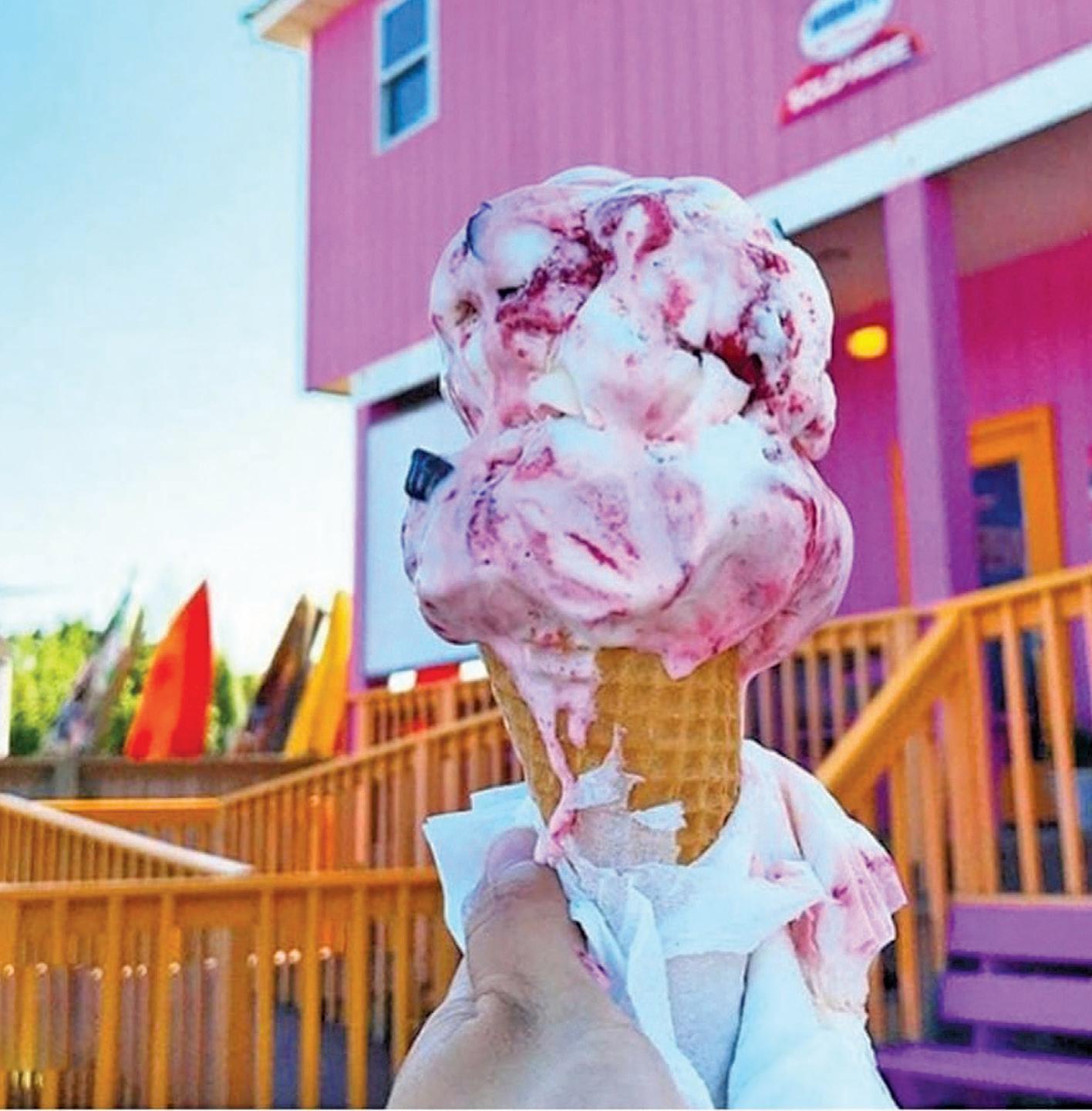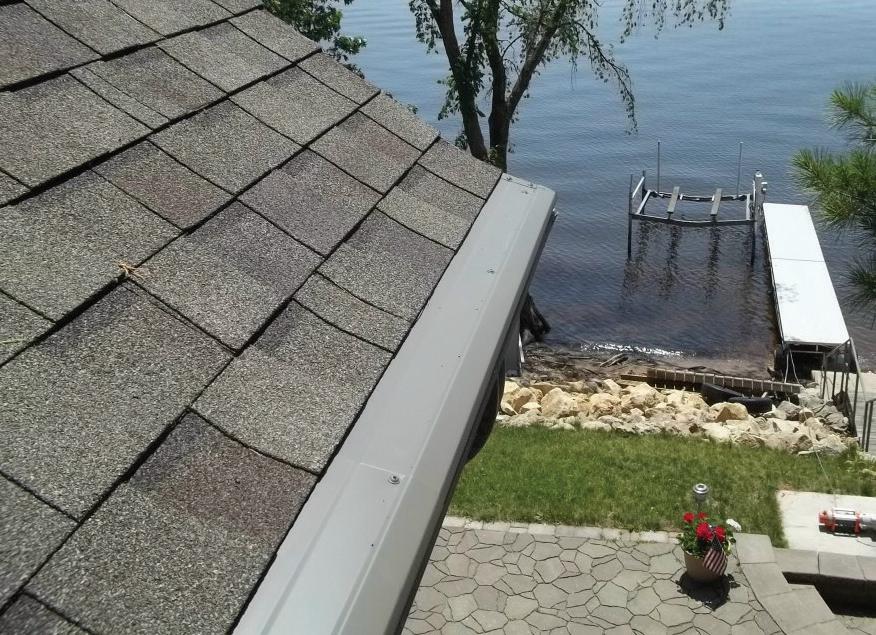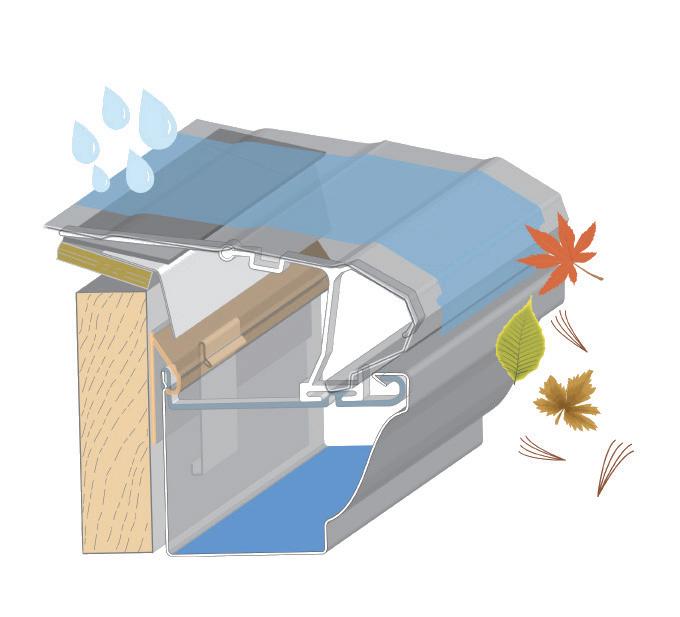











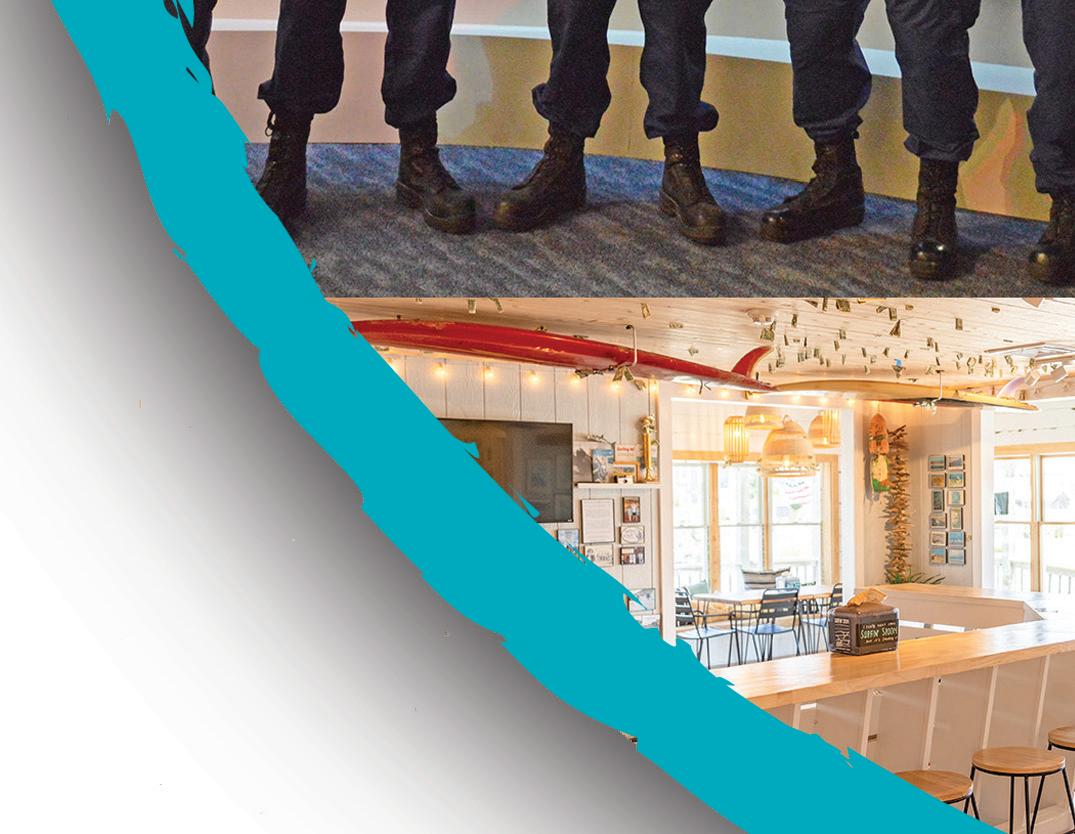


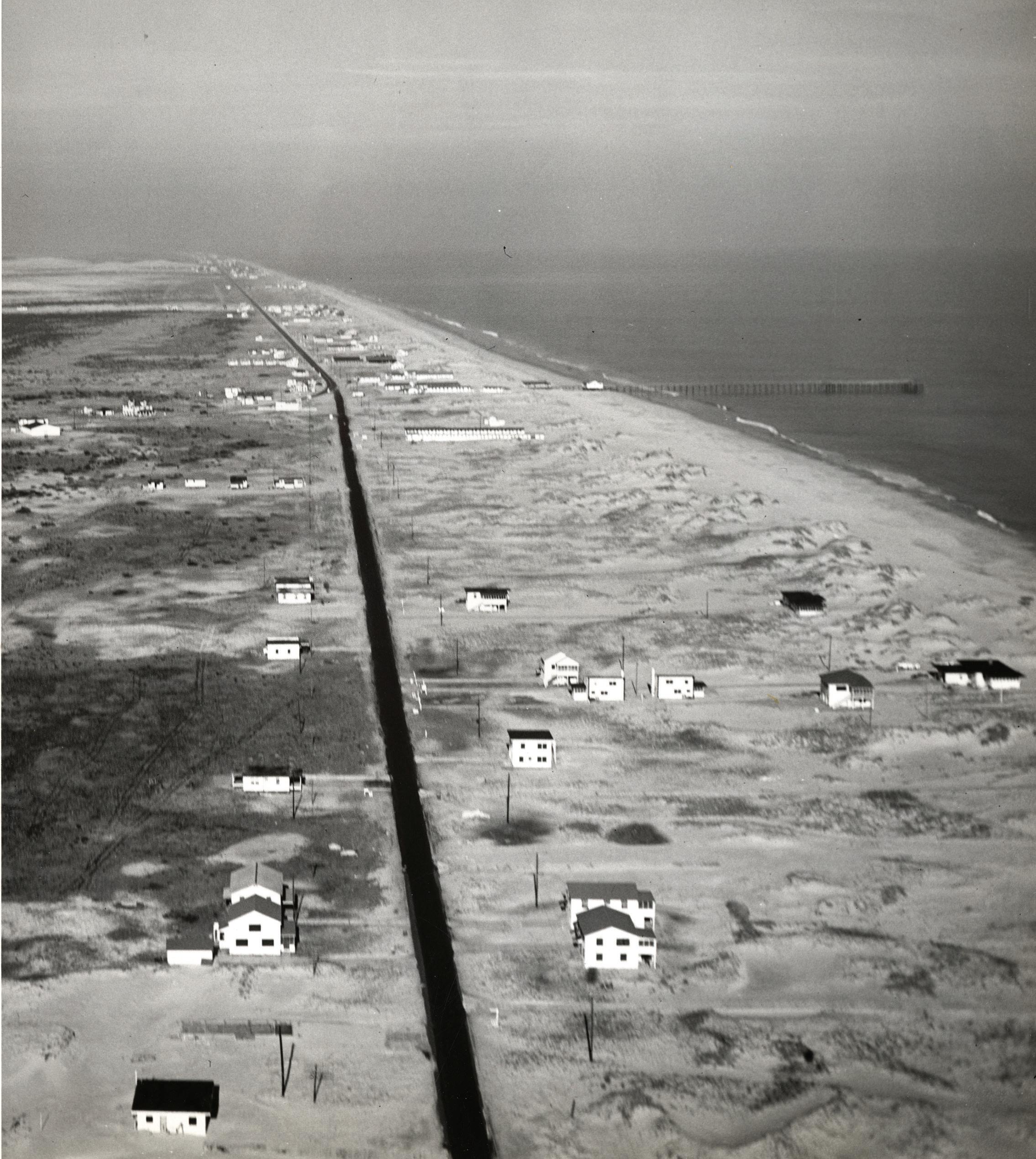




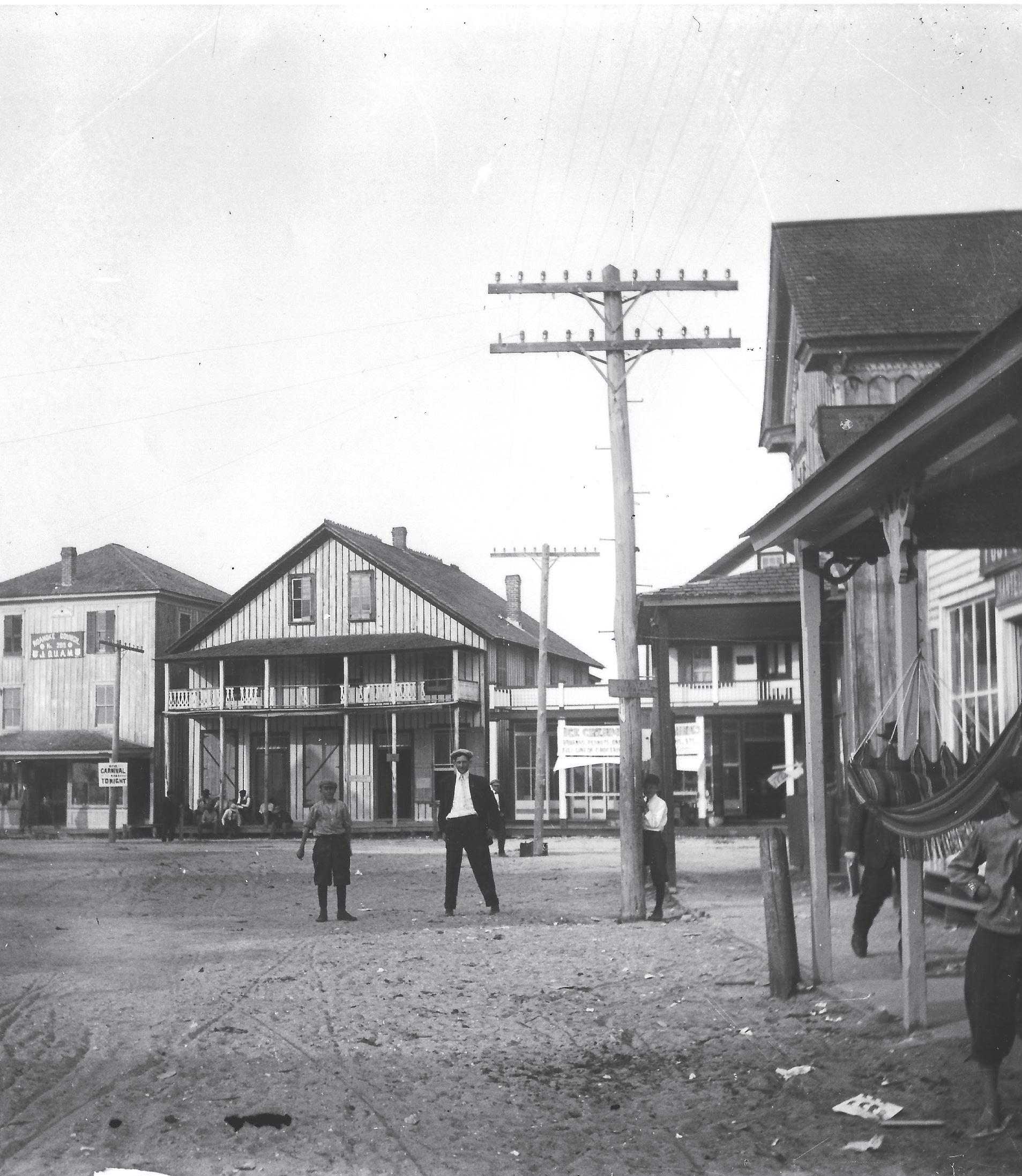


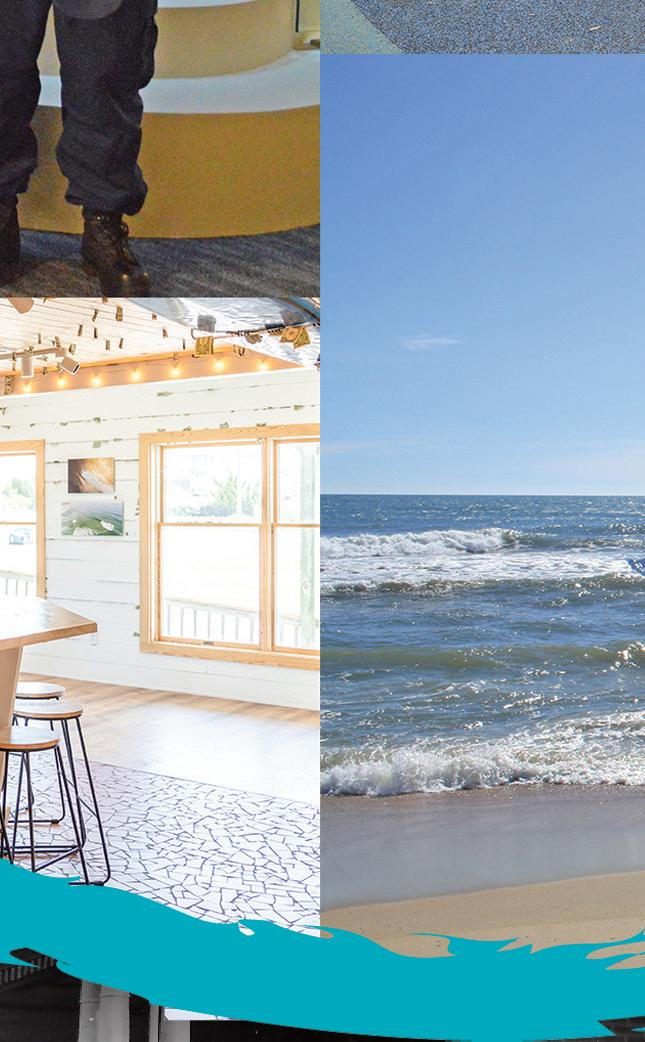









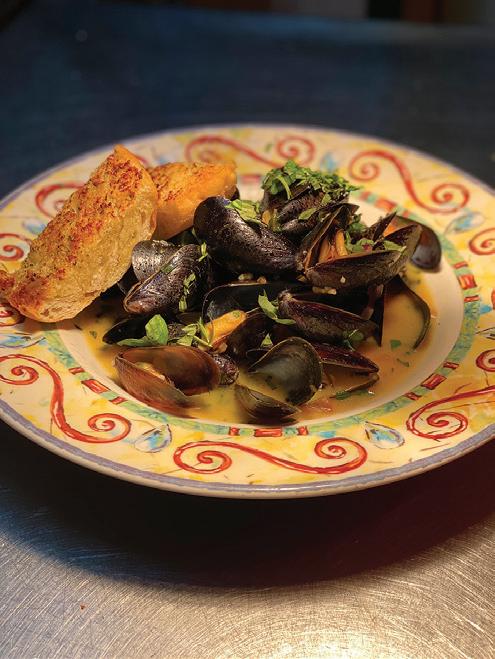













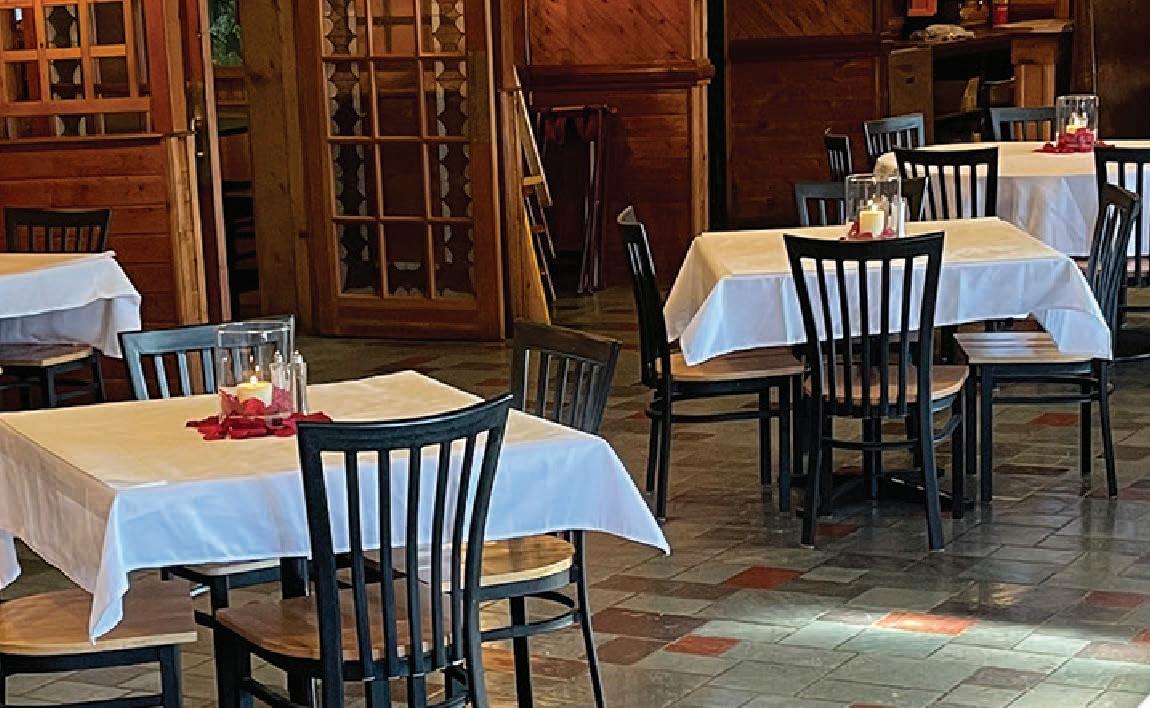

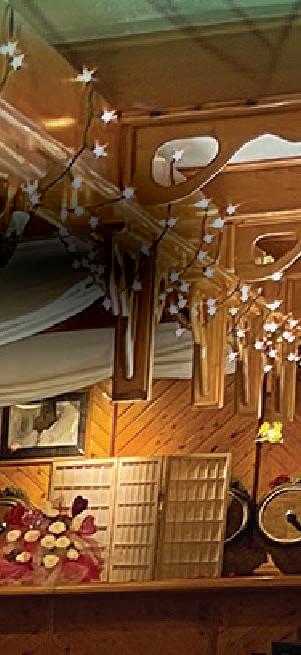




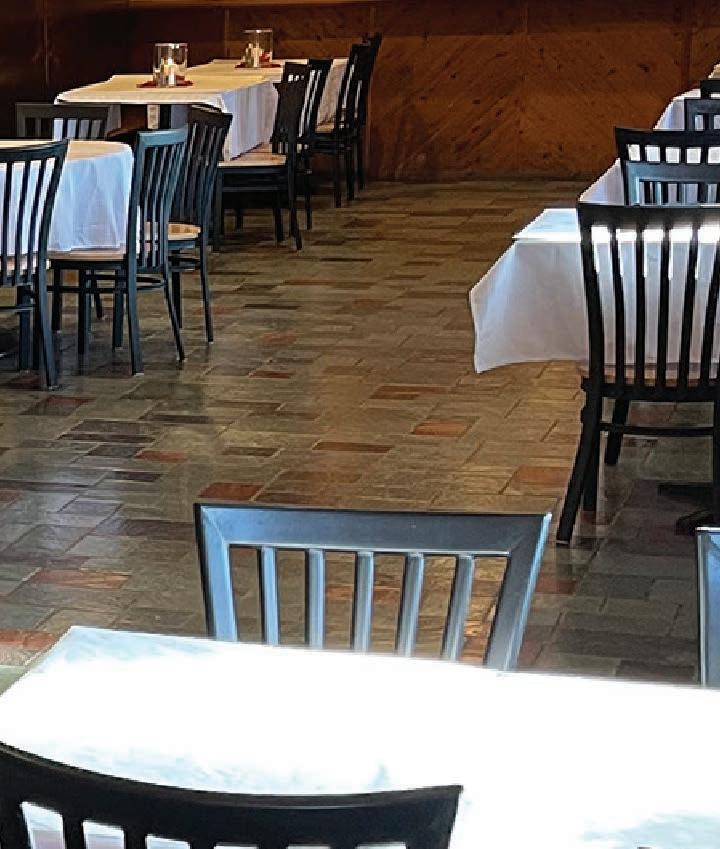









S. Ruckle Jr.
Mary
Goodloe-Murphy
Staff Writers
Daryl Law
Michelle Wagner Contributors
Hannah Russ
Marketing Consultant
For additional copies or more information, contact us by calling 252-473-2105, emailing news@thecoastlandtimes.com or mailing PO Box 400, Manteo, NC 27954.







On the cover; black and white photos all from the Outer Banks History Center, Manteo, NC, from top left, clockwise: Aerial view of Highway 12, better known as the Beach Road, Aycock Brown Collection; Downtown Manteo, looking east, D Victor Meekins Papers; 1st Annual Pirates Jamboree, Jeep race on Jockey's Ridge, Nags Head Casino in background, 1955, Aycock Brown Papers; Water St., Manteo, D Victor Meekins Papers. Credits for color photos: Fish Heads, courtesy Jennette’s Pier; Dare Arts, Summer Stevens; Hardy family, Daryl Law; Kitty Hawk Fishing Pier, courtesy Jennette’s Pier; Surfin’ Spoon, Mike Leech; Graveyard of the Atlantic Museum, Mary Helen Goodloe-Murphy; Dowdy Park, Philip S. Ruckle Jr.

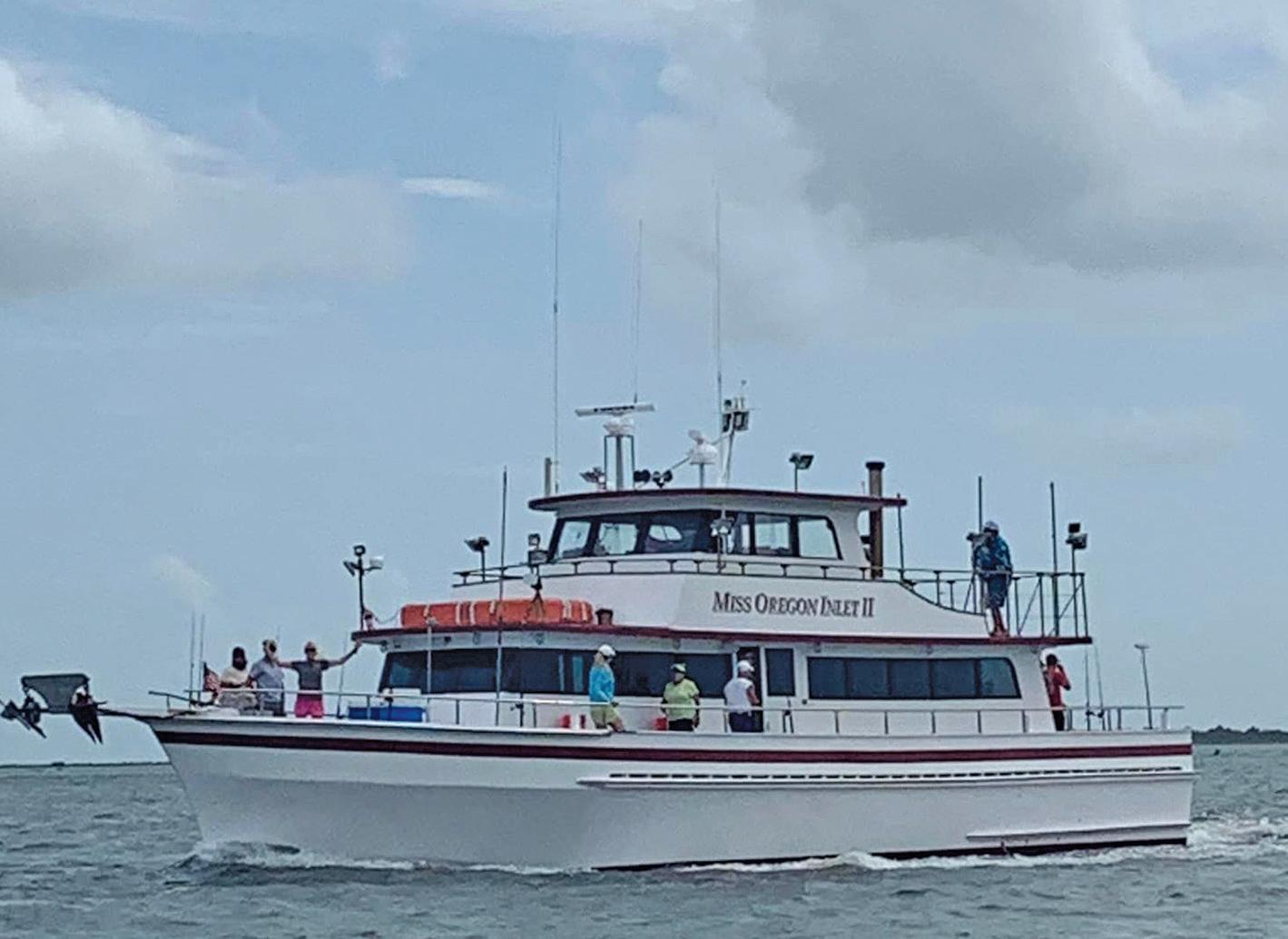
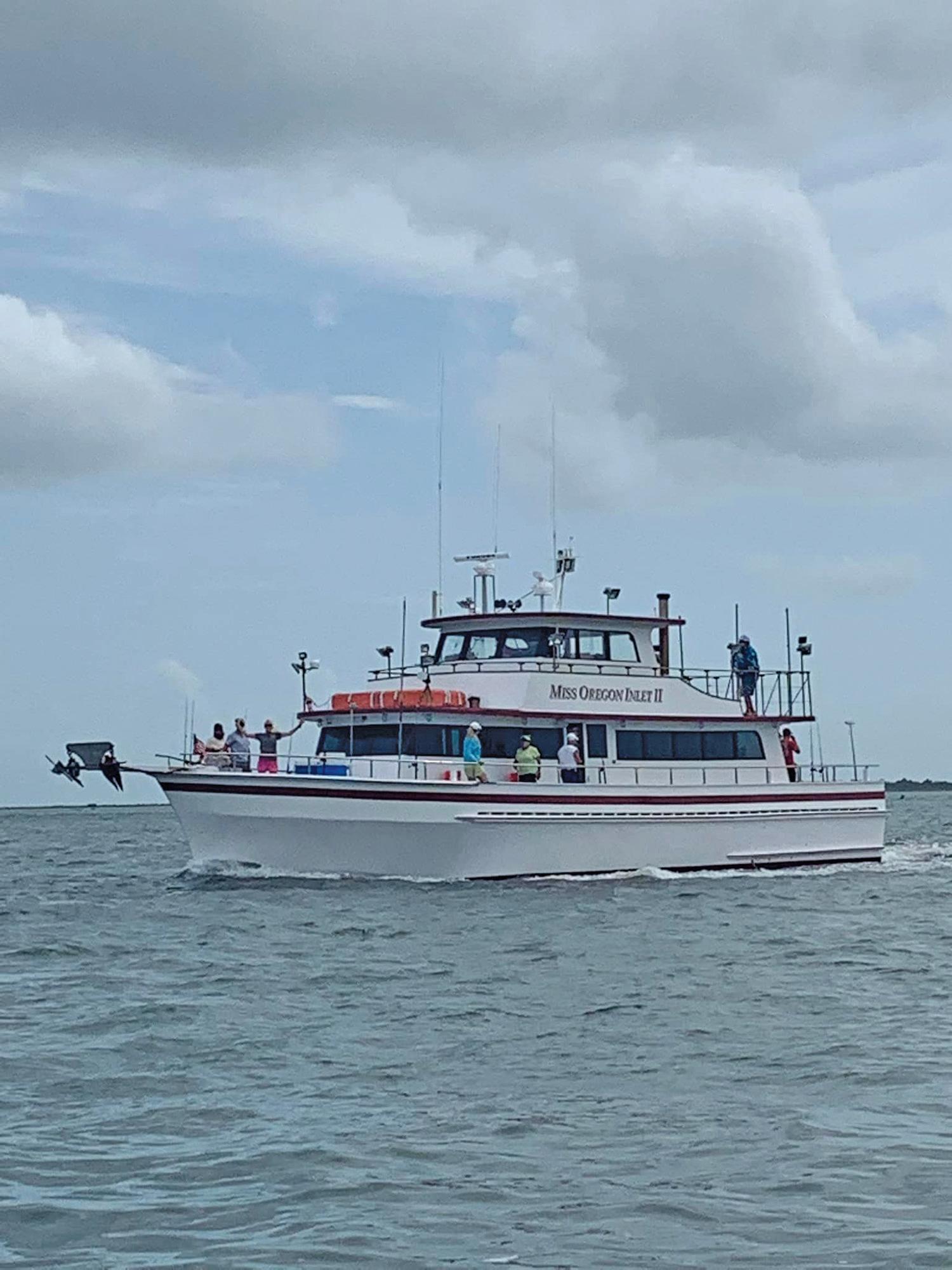




































































Aby Summer Stevens
mericans rightly remember and honor the men and women who have faithfully served in our branches of military to protect our country and its citizens. But it’s time to add to our remembrances the remarkable courage of the United States Life-Saving Service surfmen who braved turbulent and often icy waters to rescue vessels and sailors in peril.
From 1874 to 1954, servicemen throughout the United States were dispatched in an effort to rescue roughly 178,000 people.
And they were successful in rescuing a staggering 177,000 of them.
An estimated 450 Life-Saving Stations were built throughout the United States. Though mostly concentrated along the Atlantic, some were built along the Great Lakes, the Gulf, and the Pacific. United States Life-Saving Service (USLSS) was absorbed into the US Coast Guard In 1915.

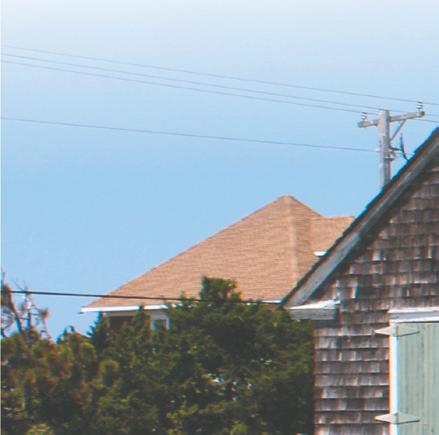


The Chicamacomico station was the first United States Life-Saving Station to be commissioned. The 1874 station has been moved several times but now rests just a little farther inland of its original location. Summer Stevens photo
2024 marks 150 years since the United States Life-Saving Service (USLSS) was

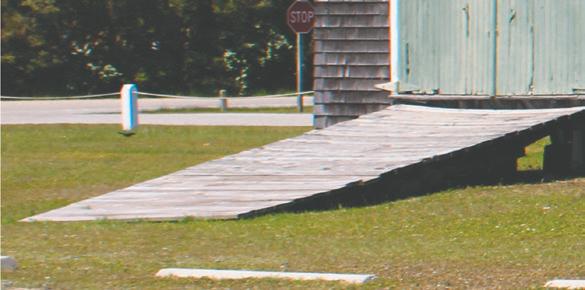


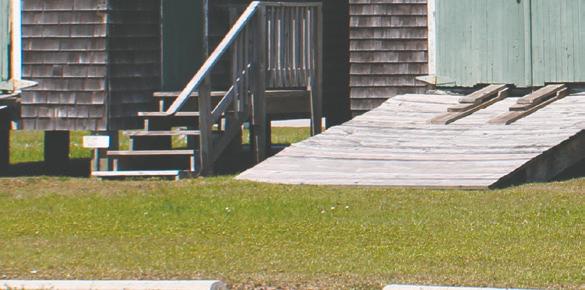

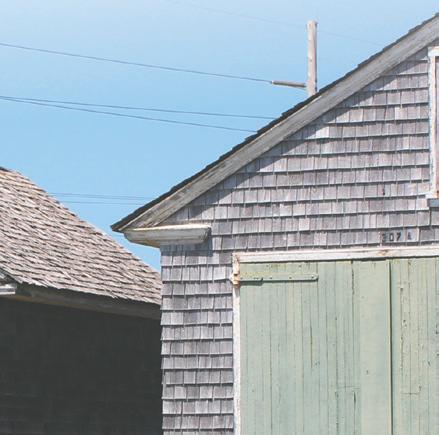
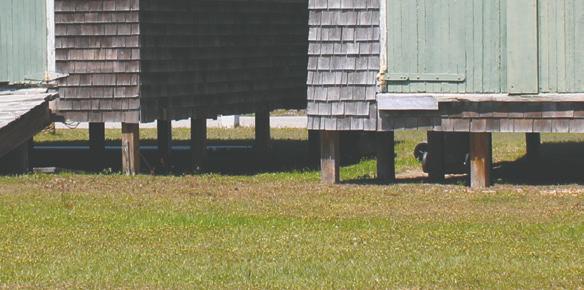

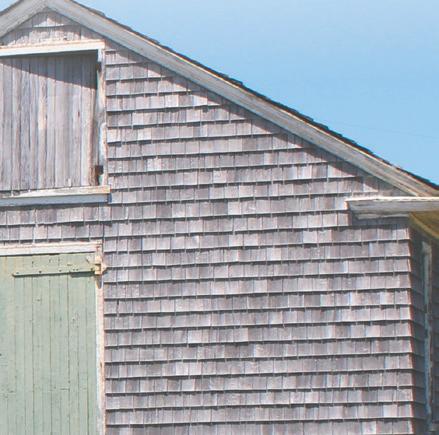

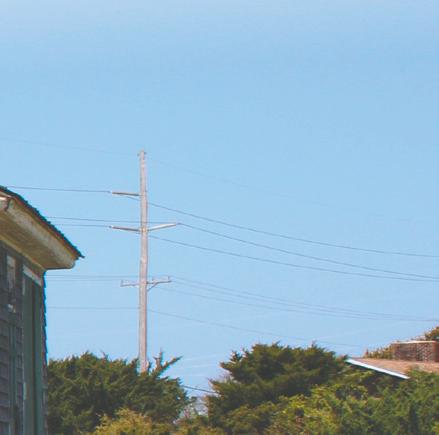
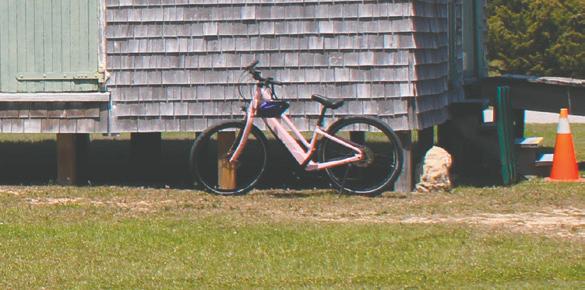












established on the Outer Banks.
The Chicamacomico LifeSaving Station was the first to be commissioned on December 4, 1874, followed quickly by six other stations along the Outer Banks coast at Jones Hill (Currituck Beach), Caffeys Inlet, Kitty Hawk, Nags Head, Bodie Island (Oregon Inlet), and Little Kinnakeet (Avon). Over the next three decades, another 22 stations would be built along the North Carolina shoreline, with the concentration from Currituck to Ocracoke.
Local people were initially hired to man the stations seasonally. After the tragic wreck of the Huron in 1877 and the Metropolis only two months later, resulting in the deaths of 183 men, the U.S. government kept the stations open year-
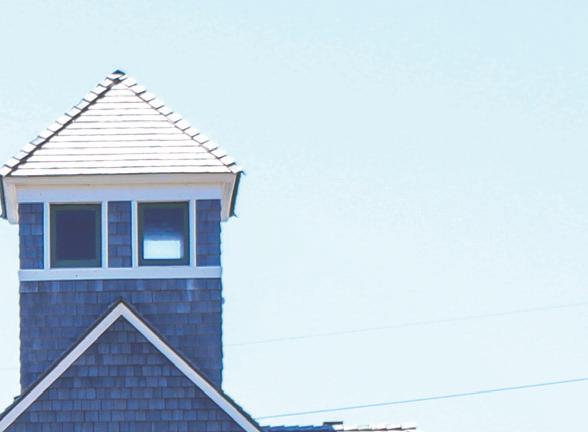
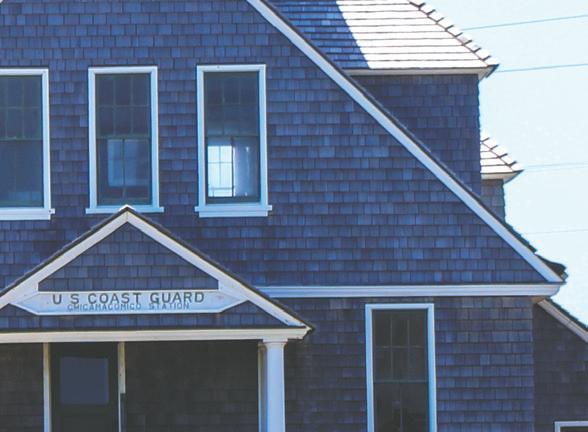
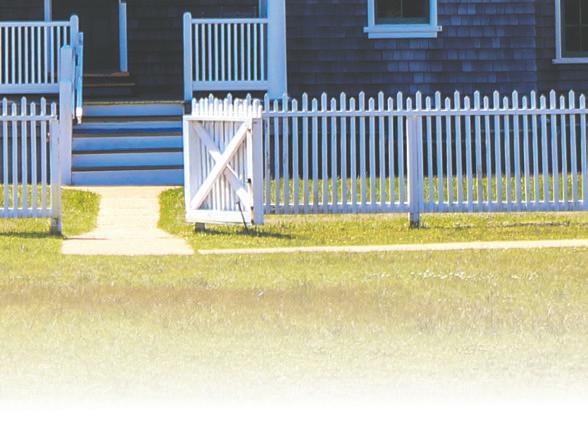
round. When Sumner Kimball took over in 1878, he standardized the training, equipment and spacing of the stations. Kimball’s leadership in one critical area determined the success of the stations.
Rather than having political appointees lead the stations, he sent superintendents to the local communities to meet the people, said Larry Grubbs, Chicamacomico Historical Association president. “They asked themselves, ‘Who’s the most upstanding, brave, consci-
e “Breeches Buoy” was used in rescue operations. A re-enactment using the same ingenious rescue equipment is performed weekly throughout the summer at the Chicamacomico Station in Rodanthe. Summer Stevens photo
A second life-saving station was built in 1911 and now houses the museum store and two oors of life-saving photos and artifacts. Summer Stevens photo
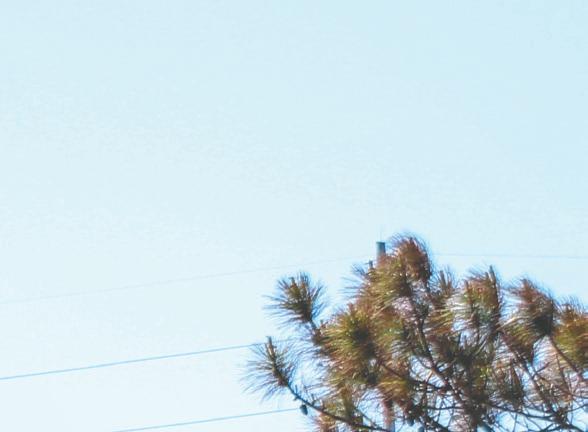



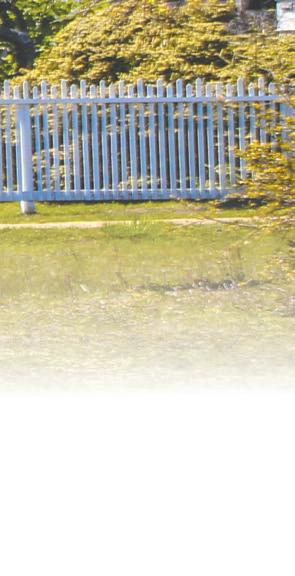


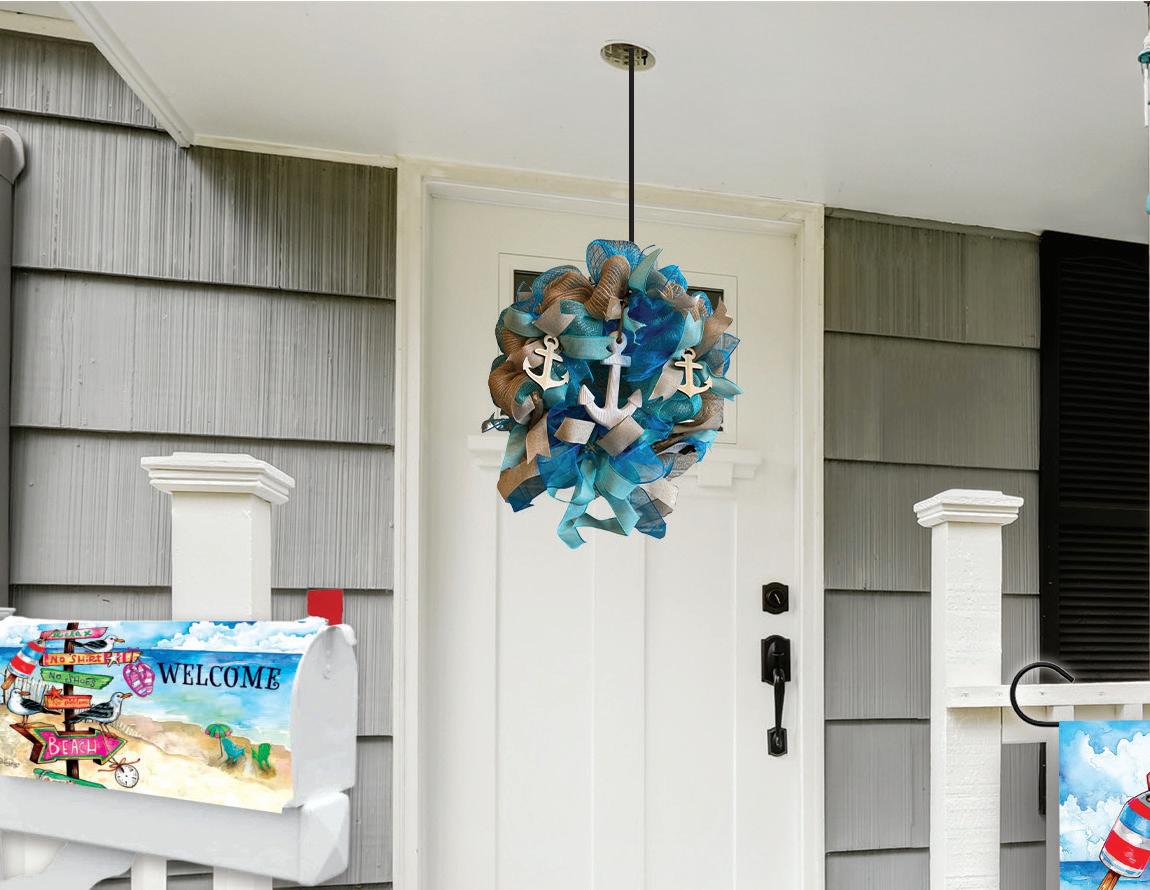
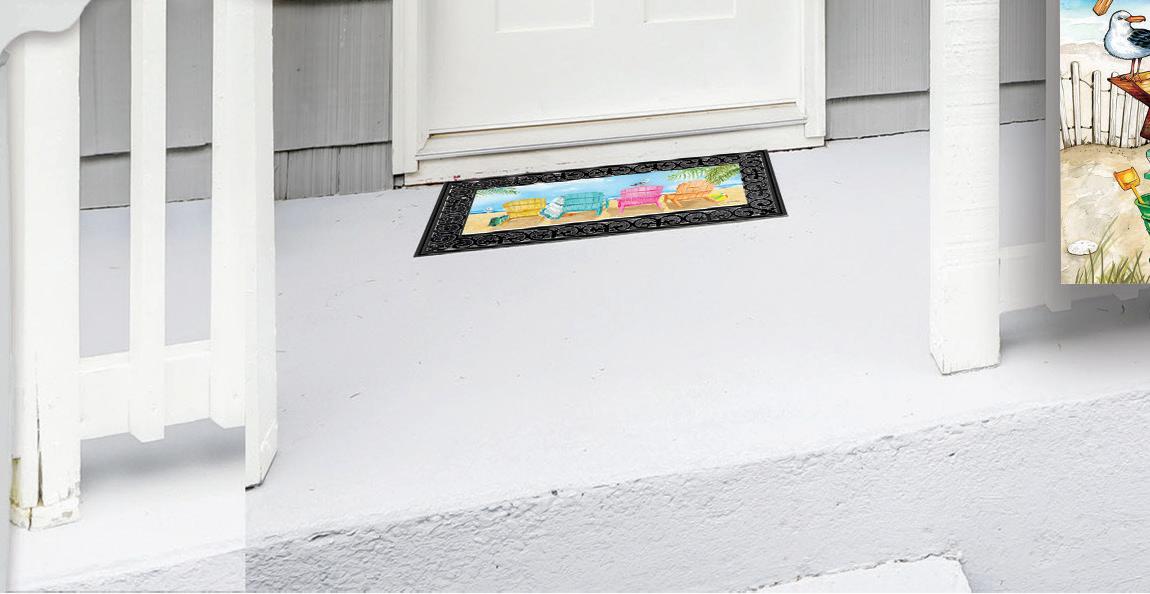




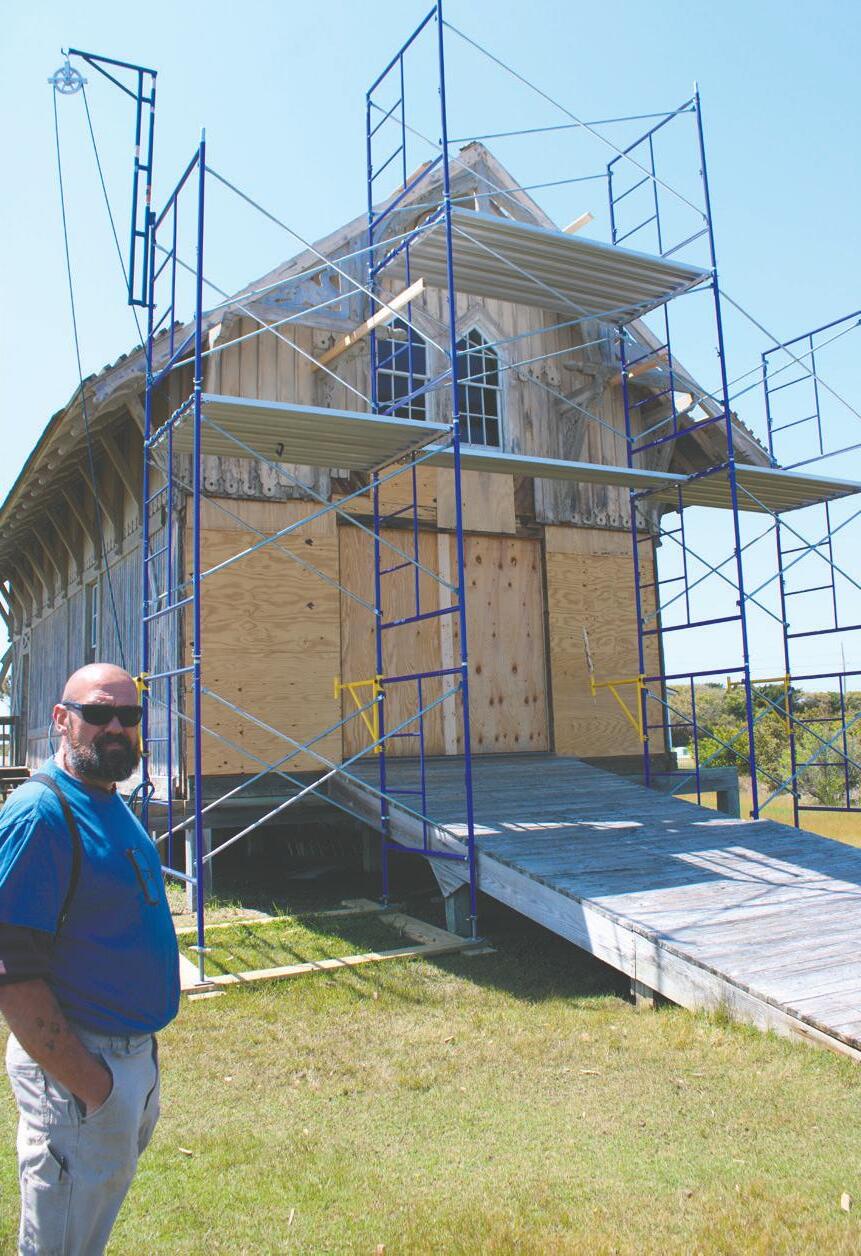
entious, good decision maker? Who will all the other men follow?’”
The very first one completed is, interestingly, also the best preserved in the country. The station in Chicamacomico, in what is now called Rodanthe, has all of its original buildings (except for the cookhouse which burned down and was rebuilt) and is open to the public for self-guided tours.
Remarkably, many people don’t even know it exists.
“All these visitors drive from Nags Head and Duck and drive right past here twice. People just don’t know about it,” said Grubbs. “I’m not knocking anything else … but all these visitors drive to the lighthouse, to the Graveyard of the Atlantic, all these places, and drive right past us. I don’t think they realize that they’re driving by the most complete US Life-Saving Service site in the country.”
The Chicamacomico Station features the original 1874 life-saving station,
which has been moved several times but now rests close to its first location; the 1911 life-saving station which now houses the Museum Store and Keeper’s office; two cookhouses; and a small boathouse. The station also houses the original Surfboat No. 1046. Some restoration work is taking place this year to reinforce and protect the original 1874 station.
To preserve the stories of the men who served in Chicamacomico, every Thursday at 2 p.m. from Memorial Day to Labor Day, a team of volunteers reenacts a historic shipwreck rescue at the Chicamacomico Station. During the Beach Apparatus Drill, volunteers explain the gear that was used by the surfmen and even demonstrate a rescue with an audience member on land. They do this because the acts of bravery are worth remembering and they are worth telling.
In the 1874 station, original wood steps lead up to the men’s bunk area
and to the lookout. Every step is worn thin in the middle. That’s from the thousands upon thousands of feet — faithful feet, weary perhaps — that have climbed back and forth, in service to unknown men and women aboard vessels in distress.
At Chicamacomico, rescued sailors would take shelter in the bunkroom if necessary. Rumor has it there used to be blood stains on the floor that went back to the Mirlo rescue in 1918. The Mirlo rescue was the most decorated rescue in the history of the US Life-Saving Service.
A six-man Chicamacomico crew led by Captain John Allen Midgett rescued 42 men aboard a British oil tanker that had been torpedoed by a German U-boat. Nine other men perished before the rescue crew arrived.
The men made four attempts to pass 18to 20-foot breakers in Surfboat No. 1046
to motor out to sea. When they arrived, exploding gasoline barrels were shooting sheets of fire 100 feet into the air. The surface of the water was on fire. Six men clung to an overturned lifeboat, and survived only by staying underwater as long as their breath would hold, then returning to the surface for a swift lungful of air before submerging again.
For four hours the rescue crew worked to bring 42 men to safety, making four trips through the perilous breakers to reach the shore.
Notes from Mirlo Captain William Roose Williams said that Captain John Allen Midgett and his crew had “done one of the bravest deeds which I have ever seen by entering into the fdires as they apparently did, as it would have bveewn impossible for me only having oars and the exhausted state of the boat’s crew to have done the same” [sic].
This is just one of hundreds of rescue stories. It is a history that should not be swept away.
A hundred years after the inception of the Chicamacomico Life-Saving Station on the Outer Banks, the Chicamacomico Historical Association was founded with a mission to preserve the historic site and tell its unique story.
The non-profit organization owns and operates the museum site and raises its own funds. All monies from admission fees, memberships, donations and museum store purchases go toward the preservation, restoration and operation of the Chicamacomico site.
For the 150th anniversary, the organization is planning a big celebration October 11-13 and a #LegacyofLifeSaving activities throughout the year.
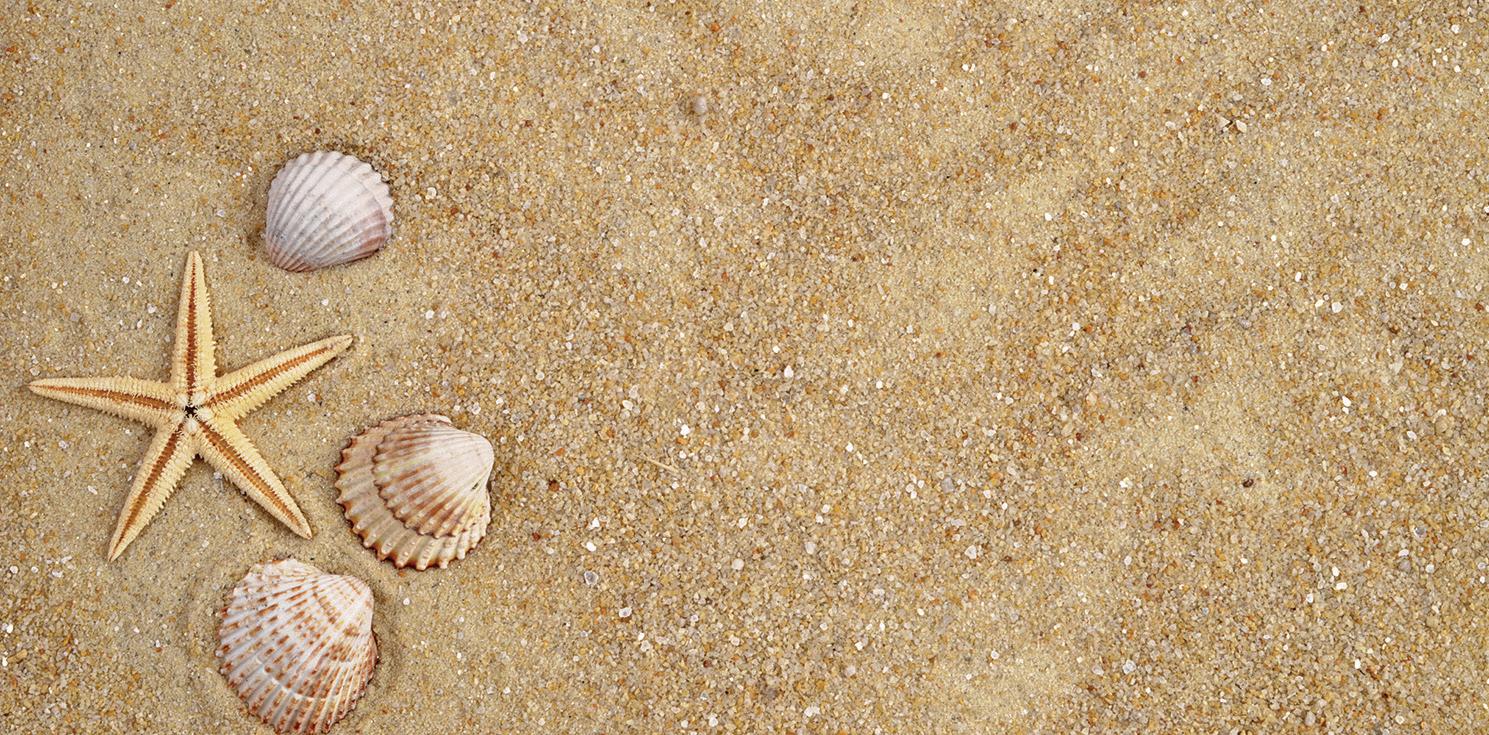


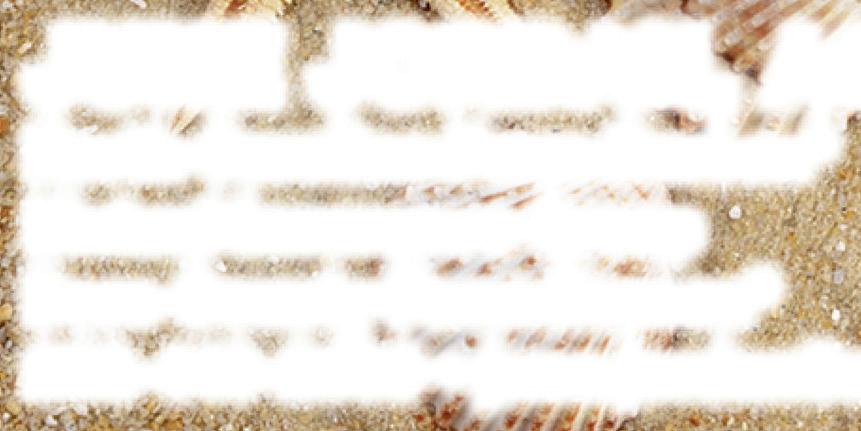














‘It’s just spectacular’
by Mary Helen Goodloe-Murphy
“It’s like WOW!”
D. Reid Wilson, secretary of the North Carolina Department of Natural and Cultural Resources, proclaimed his enthusiasm at the ribbon cutting ceremony for the newly renovated exhibit hall at the Graveyard of the Atlantic Museum on May 16, 2024.
He opened his remarks with “it’s just spectacular.”
And, indeed, the new exhibit gallery is spectacular with dramatic displays, lots of artifacts and pictures, and innovative use of technology to tell the maritime history stories so much a part of life on Hatteras Island.
At the entrance, an attention-grabbing video introduces the broad sweep of maritime history. And then, a long display with a map showing tiny spots of lights is right there. It’s accessible from both sides. Hover a finger over a light and information about a shipwreck appears or a list of shipwrecks shows up. Some 2,000 shipwrecks – that’s the figure used – are in the Graveyard of the Atlantic.
At the entrance, a turn to the right begins a chronological journey: old maps show where indigenous people lived; a brief mention of the War of 1812, a cabinet
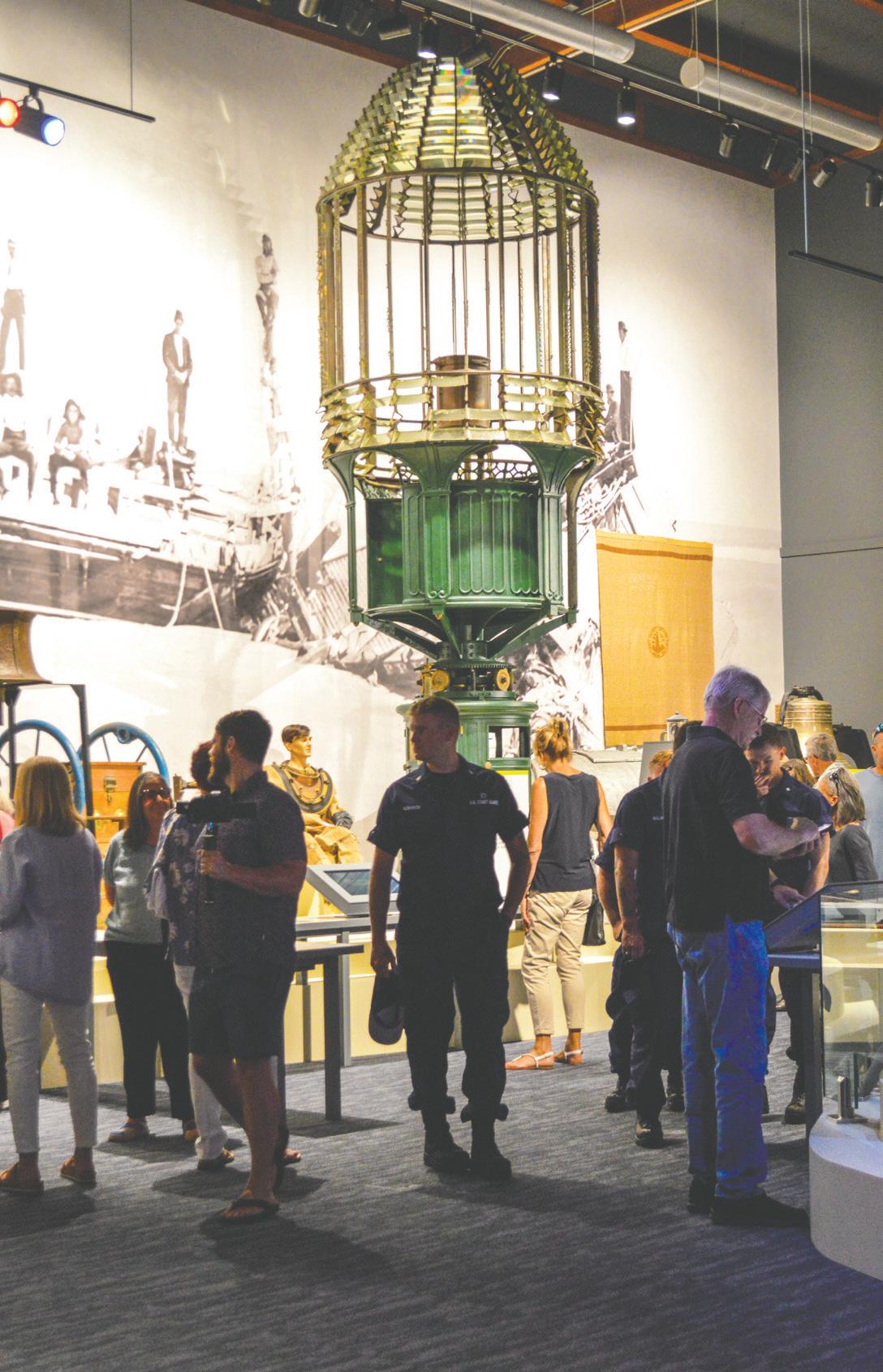
Below: Cutting the ribbon at the reopening of the Graveyard of the Atlantic Museum are, from left, Danny Couch, president of the Friends of the Graveyard of the Atlantic Museum; D. Reid Wilson, secretary of the North Carolina Department of Natural and Cultural Resources; Dr. Darin Waters, deputy secretary of the North Carolina Office of Archives and History; and Maria Vann, interim director of the North Carolina Maritime Museums.



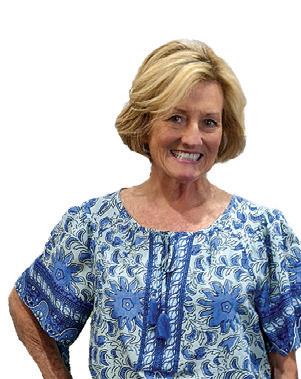

















about the Civil War, and then displays for each of the World Wars. Across the aisle are engaging activities for children: one for boat building and another avoiding the shoals and following the buoys. The Civil Air Patrol is saluted, complete with male and female manikins in uniform.
Around the corner is the second of two offerings of actors portraying historic figures. Select a storyteller for Rasmus Midgett telling about the rescue of the Priscilla in 1899, or 1st Lt. Daniel C. Knowlton talking about a storm off Cape Hatteras in 1862 or Rebecca Lamar telling about the wreck of the Pulaski in 1838.
The second aisle is filled with the
lifesavers, the lighthouse and community.
Two exhibits dominate the exhibit hall.
First, the Monomoy Lifeboat with four rowing surfmen and the keeper in the stern with the “sweeper.” The lifeboat is plowing through high surf.
Second is the first order Fresnel lens from the Cape Hatteras Lighthouse. The lens with its stand just about touches the high ceiling in the exhibit hall.
Some of the artifacts in the community display are familiar, such as the Texaco cloth sign. When they were little, Liz Browning Fox and Lou Browning slept under that artifact. It
he quest to tell the Outer Banks stories of shipwrecks starts in 1984. The Hatteras Village Civic Association was encouraged to apply for artifacts from the USS Monitor shipwreck, which sunk 16 miles off Hatteras village.
The association put together an application with a sketch of a lifesaving station as a museum proposal. The State of North Carolina, the Civic Association, the Smithsonian Institution and the U.S. Navy with four other states vied for the artifacts. Eventually, the USS Monitor collection was awarded to the Mariner’s Museum in Newport News, Virginia, because no facilities were capable of maintaining and displaying the objects in North Carolina, states a history provided by Danny Couch, president of the Friends of the Graveyard of the Atlantic Museum.
But the folks in Hatteras village did not give up. The association thought the mission to preserve and tell the Hatteras Island’s maritime history and heritage was important.
Funding through the Albemarle Commission made a feasibility and design development plan possible. The museum was formally incorporated in 1989.
In 1990, a grant from Dare County supported the development of the facility.
In 1991, a land-use agreement with the National Park Service provided seven acres on the southwestern end of Hatteras Island adjacent to the HatterasOcracoke Ferry Terminal and U.S, Coast Guard Station.
On August 1, 1991, the museum was officially designated a 501(c)(3) not-forprofit, public, educational organization.
Congress allocated funds, through the National Oceanic and Atmospheric Administration for museum construction.
From 1995 to December 1999, the museum received additional state and federal support. Phase I construction years ago...
began Dec. 10, 1999 and included the building shell, all site work, and portions of the NC Civil War Trail. The 18,768-sq. ft. building was constructed to withstand sustained winds of over 135 miles per hour and gusts of over 250 miles per hour and was elevated 12 feet above sea level. Phase 1 was completed in July 2001.
Thanks to numerous corporate and private donors, the Museum was able to start Phase II construction, completing the building interior and opening a portion of the facility to the public in October 2002.
Fundraising continued. Grants were awarded. Phase III was funded and interior construction proceeded.
In 2007, the museum was formally recognized as a Regional State History Museum and, on June 6, 2008, became a part of the Division of State History Museums.
For almost a quarter of a century, the good people of Hatteras village pursued their dream of building a world class Graveyard of the Atlantic Museum.
In his remarks at the ribbon cutting on May 16, 2024, Couch saluted those who had the vision in 1984. Many of those good folks were at the ribbon cutting ceremony. Recognized were:
“Belinda Willis is with us today and her husband Virgil; Katie Oden and her husband Jeff; Cathy Parsons, her husband Fred and their families; Dale Burrus, who we absolutely would not be here today without his many contributions; Joe, Melanie, Franklin and William Schwarzer; Irene Nolan; Chris and Eleanor Larsen; Helen Wilson; Ray Smith; Tom Curtin; Kevin Duffus; Earl O’Neal; Dixie Burrus Browning; Miss Jo Oden; Tim Midgett, also we would not be here today with-
out his years behind the scenes, his father and mother, Stocky and Libby; his uncle Anderson and their families; Drew Pullen and his passion for history, who wouldn’t let the project fail; Ernie and Lynne Foster; U.S. Sen. Lauch Faircloth, an amazing guy; U.S. Representative Martin Lancaster, N.C. Senator Marc Basnight; Bobby and Sarah Owens; RV and Julie Owens and their families; Lisa Owens Hooper; Natalie Perry Kavanagh; N.C. Gov. Roy Cooper and his wife and daughters; Governors Mike Easley, Bev Perdue, Jim Martin, and all our volunteers and friends, so many of whom I can’t possibly name.”
Couch also listed those organizations that helped the museum come to this place May 16, 2024: “the Dare County Tourism Board; the Dare County Board of Commissioners; Z. Smith Reynolds Foundation; the North Carolina General Assembly; the Albemarle Commission; the Outer Banks Community Foundation; the Hatteras Village Civic Association; Hugh Morton; Dr. Bill Friday and those patriotic North Carolinians of the ‘The Save Cape Hatteras Lighthouse Committee;’ the Percy and Elizabeth Meekins Charitable Trust; the United States Coast Guard; the National Park Service past and present administrations nationally and locally; the N.C. Department of Natural and Cultural Resources; and appreciably our capable and valuable sister maritime museums and their staffs, volunteers and leadership in Beaufort/Carteret County and Southport across the Cape Fear in Brunswick County.”
The Graveyard of the Atlantic Museum is located at 59200 Museum Drive in Hatteras and is open 10 a.m. to 4 p.m., Monday through Friday.











was donated by the Burrus Browning family.
The Singer sewing machine in stunning, restored cabinetry came from Ernie and Lynne Foster of Hatteras village. The sewing machine, manufactured in 1914, was purchased at a vendue by Rasmus Midgett for his daughter Hazel Midgett Foster. The Fosters also contributed the model of the Albatross III.
Ocracoker Earl W. O’Neal Jr., a longtime supporter of the museum, now deceased, donated the large four-gallon jug which was picked up on the Ocracoke beach by ancestor Christopher Thomas O’Neal (O’Neele) in 1820.
At the May 16 ribbon cutting, speakers also included Maria Vann, interim director of the North Carolina Marine Museums, and Dr. Darin Waters, deputy secretary of the North Carolina Office of Archives and History.
Vann thanked these folks for their work on the exhibits: Mike Peters, Mike Carraway, Tessa Johnstone, Rebecca Edwards, David Bennett, Cyndi Brown, Allison Kohne, Michelle Crepeau, Nathan Grimes, Thom Swindell, Trent Bowles, Nicholas Zahradka, Benjamin Wunderly, Christine Brin, Shannon McCotter, Stephanie Davis, Obelia Exum and Joel Rhodes.
In 2021, the North Carolina General Assembly granted $4.2 million for the permanent exhibits on view permanently. Dare County Board of Commissioners and Dare County’s Tourism Board each contributed $250,000 and others contributed another $300,000 to finish the funding.
Riggs Ward Design, of Richmond, Va., was contracted to develop a comprehensive design plan. Construction began late in 2022. The museum reopened to the public on May 20, 2024.
On opening day, Monday, May 20, visitors numbered 1,100 and then on Tuesday, the museum saw 830 to 840 visitors.
The Graveyard of the Atlantic Museum, located at the very end of Hatteras village, is open Monday through Friday, 10 a.m. to 4 p.m. No admission is charged. Donations are accepted.

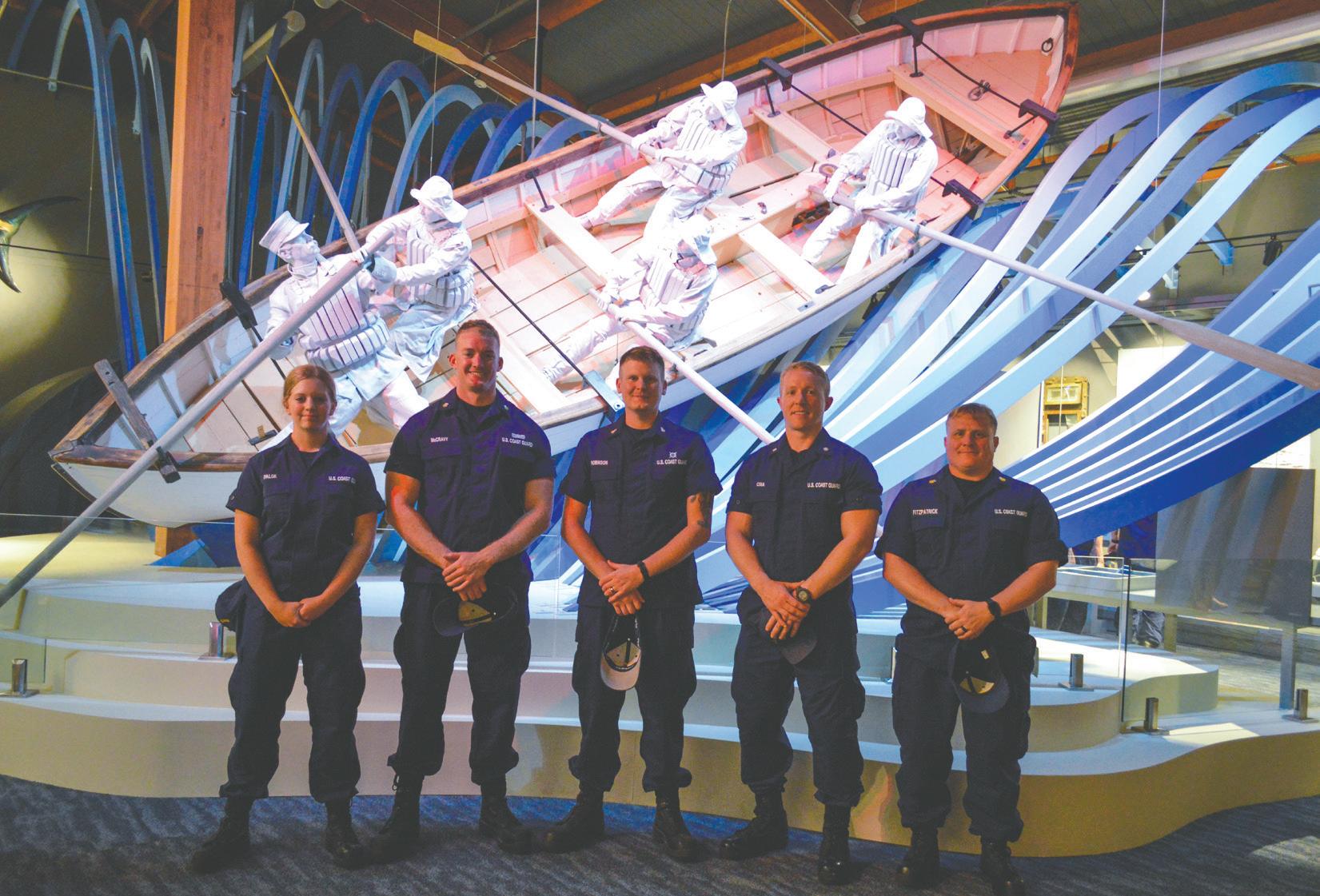
Current U.S. Coast Guard members from the Hatteras Inlet station stand in front of the dramatic display of historic surfmen rowing to a rescue in a Monomoy surfboat, traditionally 26 feet long and seven feet wide. For rescues, today’s Coast Guard uses one of three boats: a 27-footer for shallow water, a 29-footer for mid-range water depths and a 47-footer for ocean or sound rescues. Mary Helen Goodloe-Murphy photo




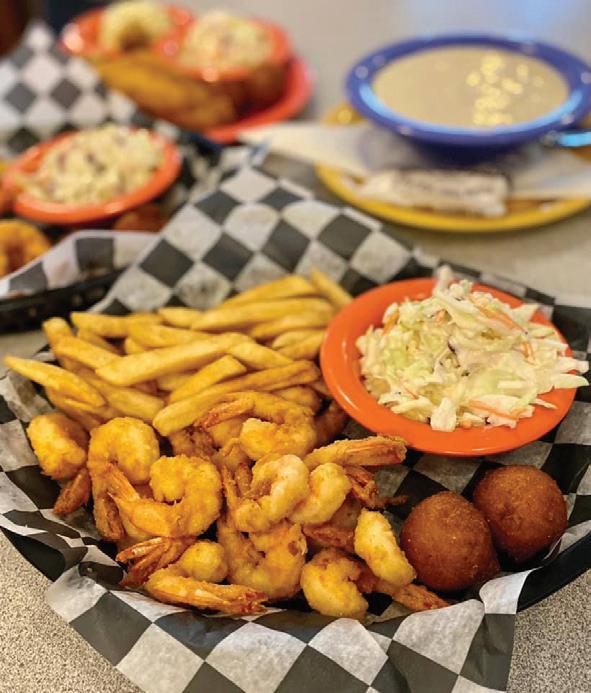






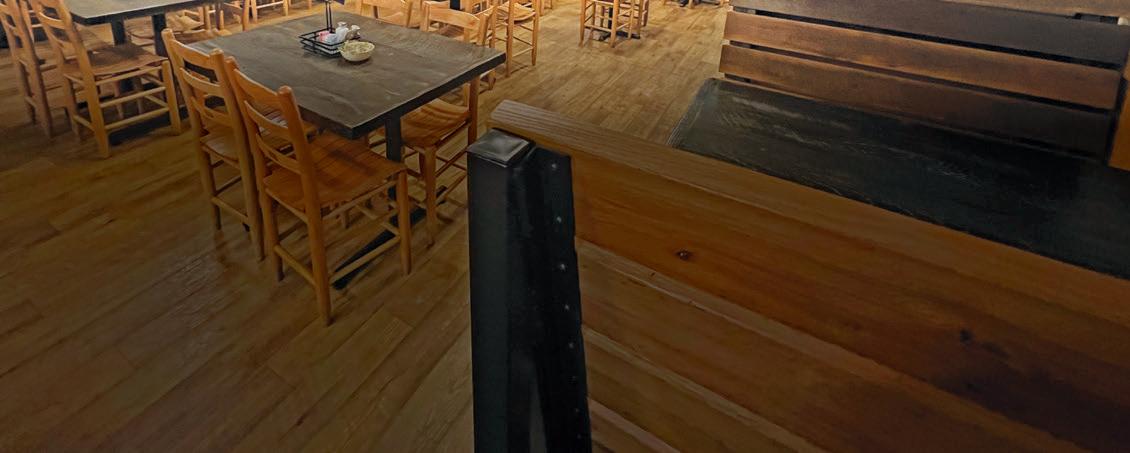


by Summer Stevens
In 1904 the Dare County Courthouse was built BF Smith Fireproof Construction Company to serve a population of about 5,000 people.
The stately brick building, which presides over the town at 300 Queen Elizabeth Avenue in downtown Manteo, served the county’s legal needs well for almost a hundred years.
With a population of 30,000 in 2000 and a visiting seasonal population many times that number, the county relocated the courthouse to its current campus on Marshall Collins Drive in 2002.
But the beating heart of downtown Manteo – and famously featured in one of Andy Griffith’s Matlock episodes in 1989 – has new life again through Dare Arts (formerly Dare County Arts Council), a non-profit that is coming up on 50 years of bringing the arts to our community.
“It’s kind of this beautiful meld of art and history without us having to even try too hard,” said Jessica Sands, the executive director of Dare Arts.
Sands explained that having a gallery in an old courthouse adds a richness to
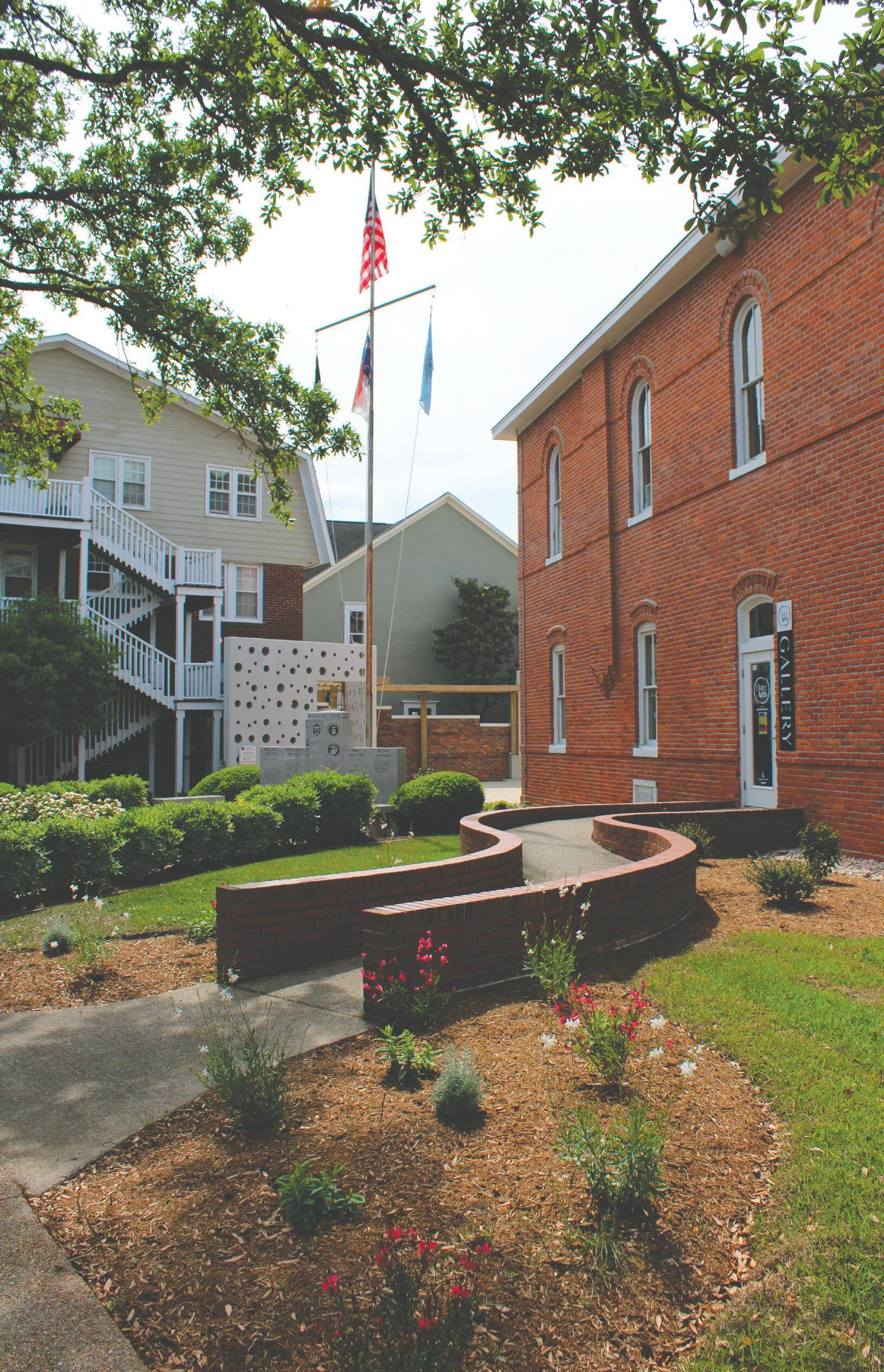




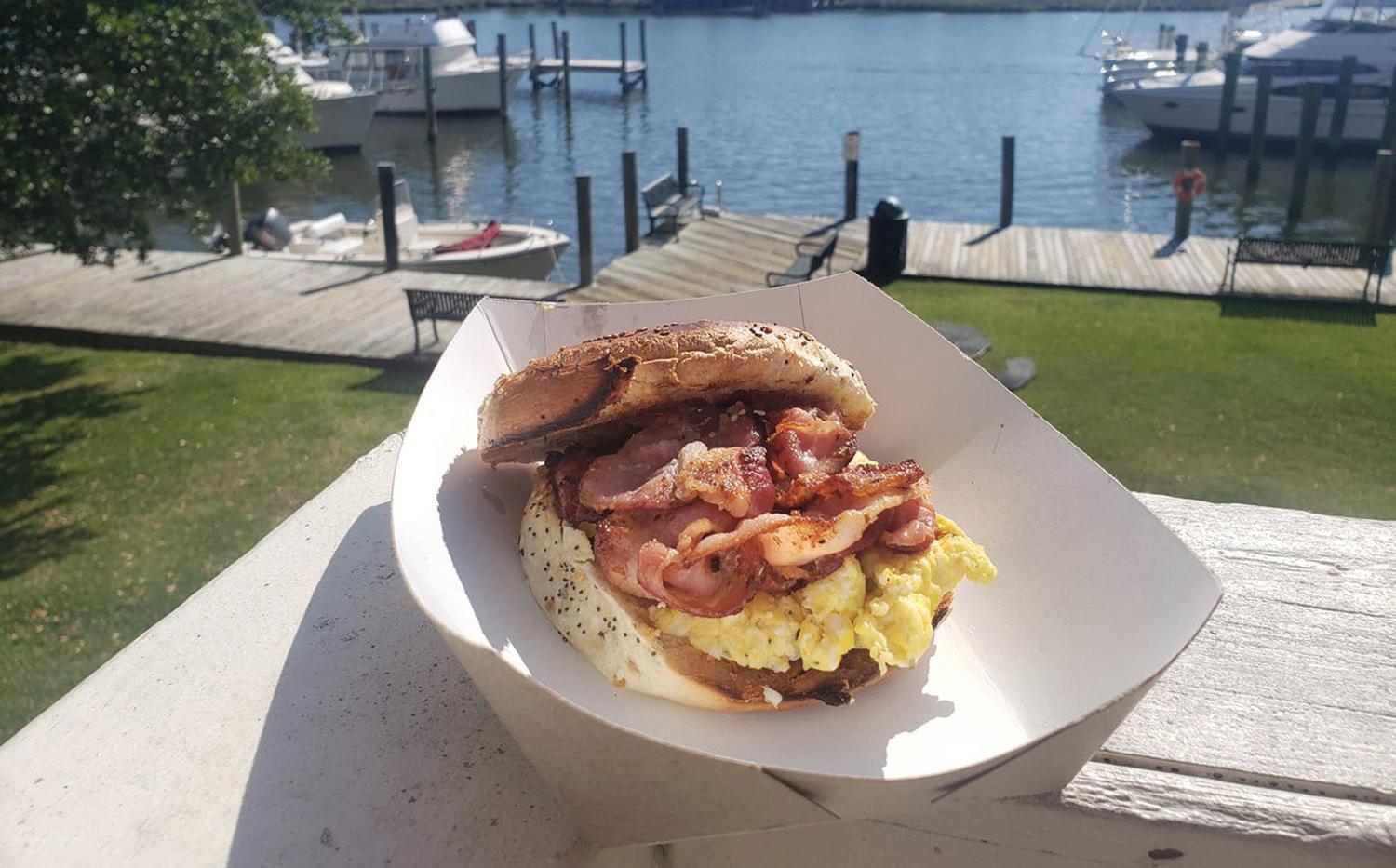
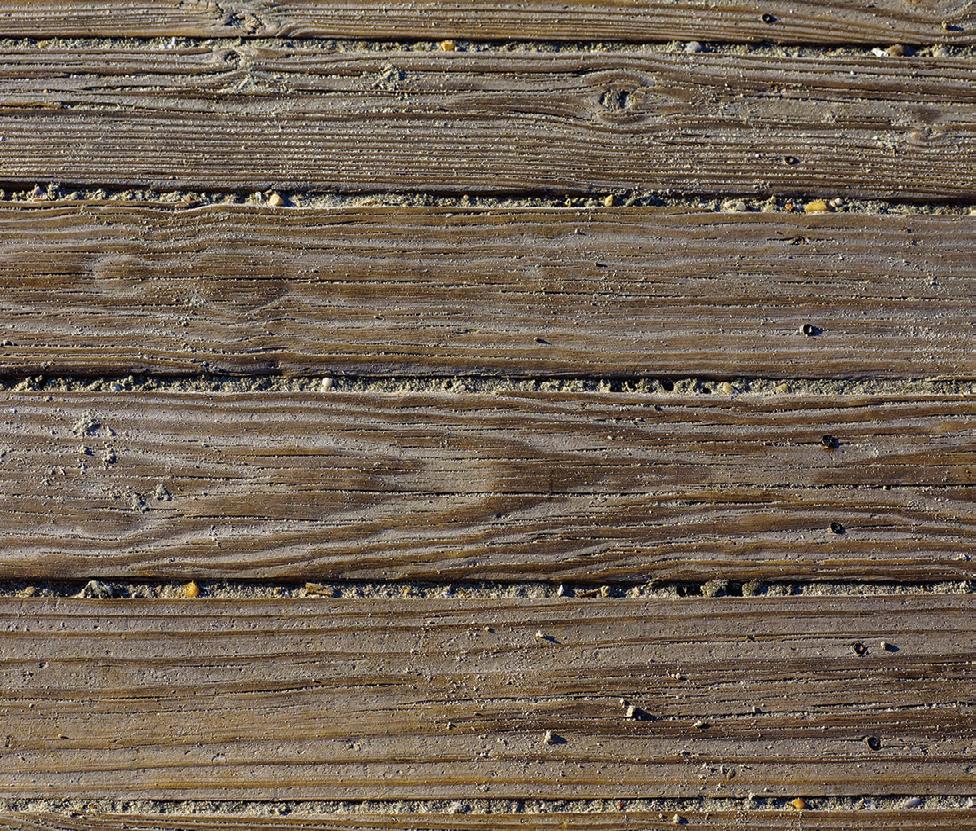



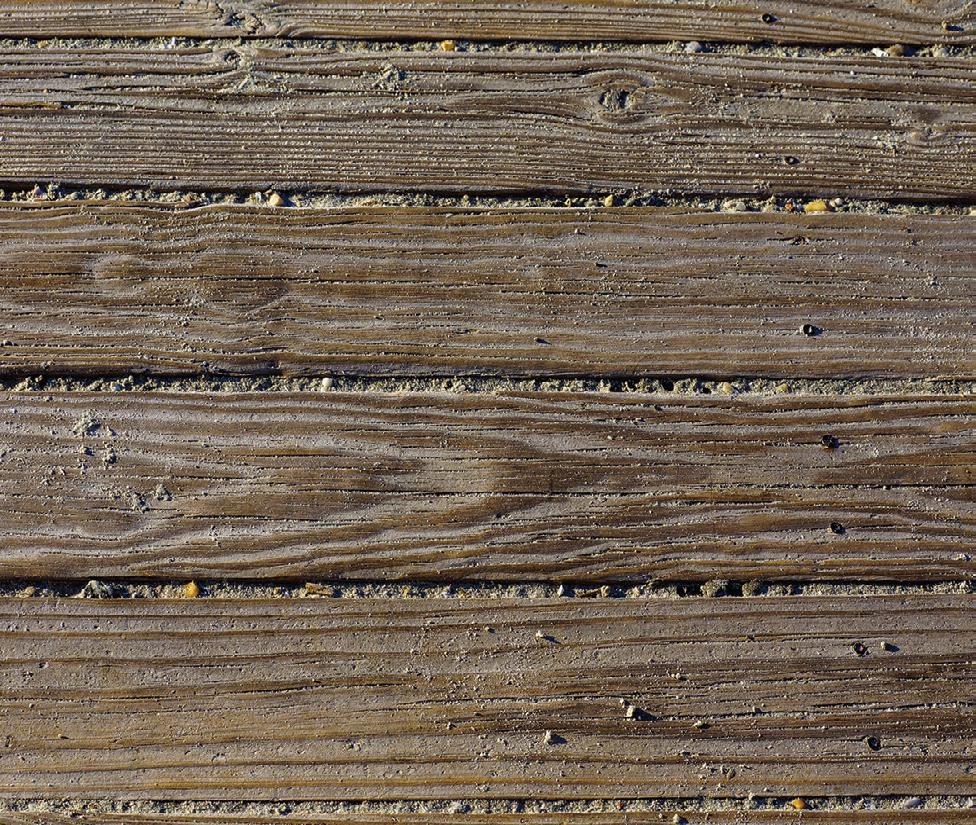


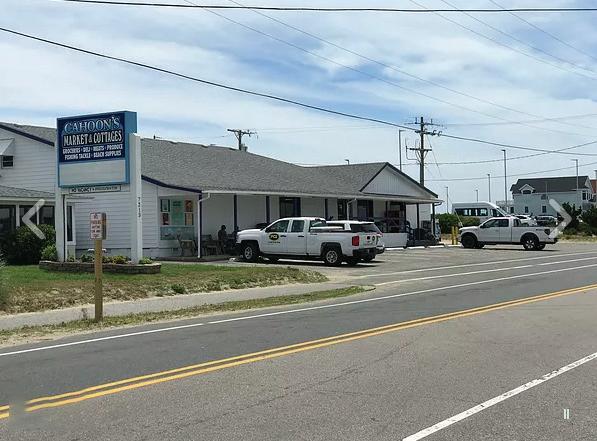


a visitor’s experience. “We get to talk not only about art but about the history of the town and the building and the people who came before.”
The plaques flanking the front door are dedicated to Chauncey S. Meekins, clerk of court from 1926 to 1982, and Frank M. Cahoon, county sheriff from 1946-1982.
“I think it’s amazing to be in a place that has been so firmly planted in history and also see that as an opportunity to bring us forward into the 21st century where we can be open minded about new ideas,” Sands said.
Dare Arts features over 100 juried artists throughout the old courthouse. Gallery staff are constantly adding and rotating pieces so there is always something new to enjoy. Two special rooms feature monthly exhibits from local artists: the Vault Gallery downstairs, where the original courthouse vault held public records and deeds, and the Courtroom Gallery upstairs, where court was held for almost a century.
The restoration was done so beautifully it’s easy to forget that you’re inside a courthouse. But a few little details remain to remind.
The heavy-duty vault door is still present and holds a display of magnets, and the judge’s bench is still upstairs and is
used as a soundbox during performances or a bar during social events. A portion of the jury box has been repurposed as a wheelchair ramp.
“It all adds a layer of uniqueness,” Sands explained.
The Courthouse Gallery gets constant use. During the day, Dare Arts offers painting, photography or jewelry making
“I think it’s amazing to be in a place that has been so firmly planted in history...”
workshops. There are live theater performances, live music performances, film screenings and literary arts discussions.

Our goal is to put the right book in the right hands at the right time. We strive to help make our community a better place. We are dedicated to being a strong supporter of Dare County Schools We offer authors the opportunity to engage with readers and readers the opportunity to interact with writers. We do not judge, discriminate or practice intolerance towards any reader.
Open 7 days a week
103 Sir Walter Raleigh Street Manteo 252-473-1056 duckscottage.com
Dare Arts is also at the hub of Manteo’s First Friday festivities. The gallery hosts a reception for artists in the Vault Gallery and Courtroom Gallery, and offers complimentary drinks and appetizers. The organization coordinates live music throughout town with financial support from The Town of Manteo, and creates a graphic of happenings each month.
“It has turned into this magical thing,” Sands said of First Friday. “It is the event that reminds us that we’re friends and neighbors. We come downtown to get a drink, to see some art, to catch up with a friend, to listen to music. It isn’t about all those things that we get bogged down with in our day-to-day, you know? It’s just our favorite thing.”
During the 20th century, the courthouse was a significant place legally and administratively. But, of course, it has always been about more than that. Hundreds of marriages happened there; crimes were investigated; court rulings changed people’s lives.
Today, the courthouse is still significant. Beauty is expressed through artwork, new skills are learned, different voices share perspectives, creating a depth of community and friendship enjoyed by all.
The outside courtyard is an active arts space where the community gathers for free concerts and people stop to enjoy the sunshine or visit with friends. Semipermanent art installations have included a kids’ art garden, a Pride project quilt, and a Korean bamboo art piece called Sotdae.











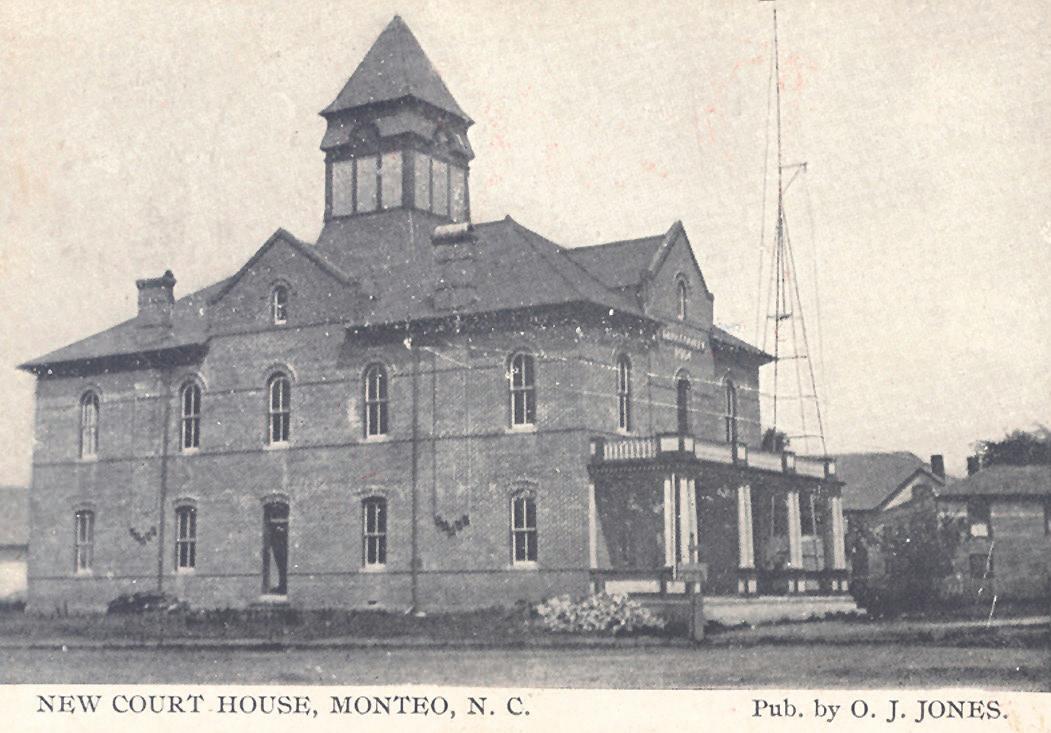
The Courthouse was built at a cost of $16,500.
D. Victor Meekins served as sheriff and worked out of the courthouse from 1928-1946. In 1935, he started the Dare County Times; the name was later changed to The Coastland Times
Paul Green, writer of “The Lost Colony” play, was given space in the courthouse to write his famous manuscript.
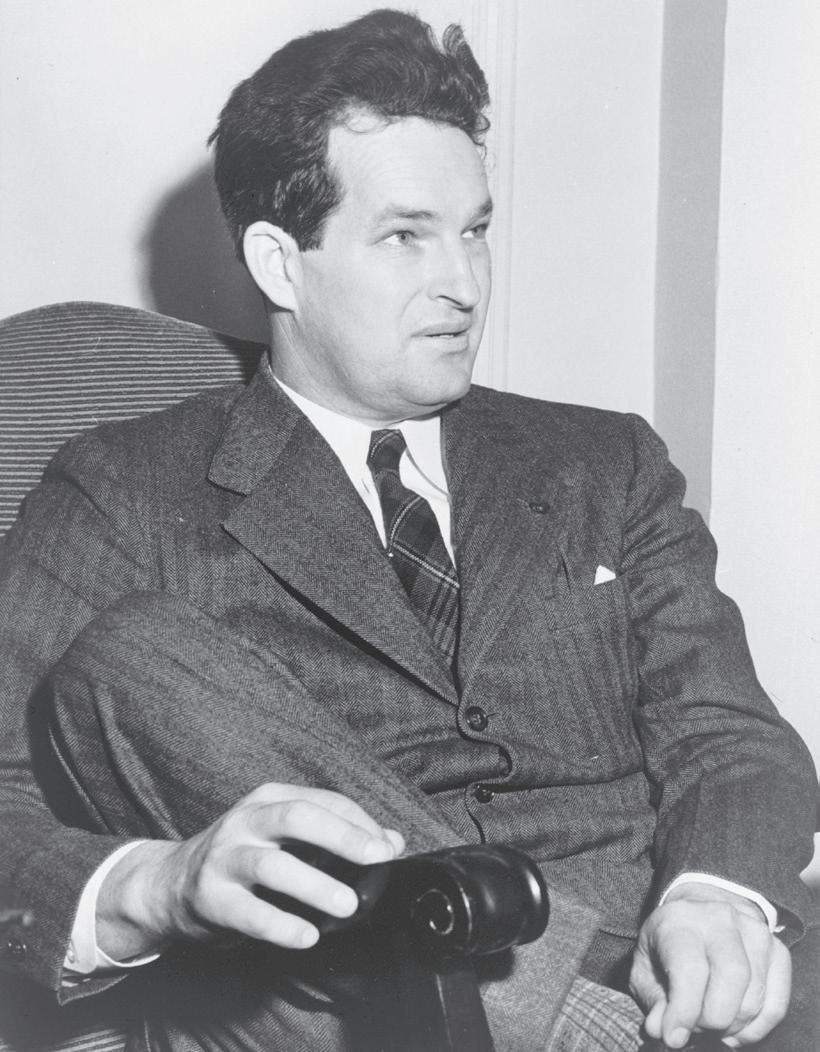
Hurricane Irene tore through the Outer Banks on August 27, 2011, flooding downtown Manteo. Recently completed restoration work on the courthouse needed to be done all over again.

The current columns were added in the recent renovation to match the style of the original. However, a careful examination of old photos shows that the original columns spanned the entire front width of the building and were only a single story.
The old evidence room is now being used by the gallery as a supply closet. However, some people refuse to go in there because they say it’s haunted.

The county leases the building at no charge to Dare Arts, the designated arts leader for Dare County under the North Carolina Arts Council.

In 1933, a huge storm destroyed the belfry and was removed. With community support and grants, The Manteo Preservation Trust transformed the downtown skyline by restoring the belfry in 2014. The bell (presumably the original) is rung every hour on an automatic timer.
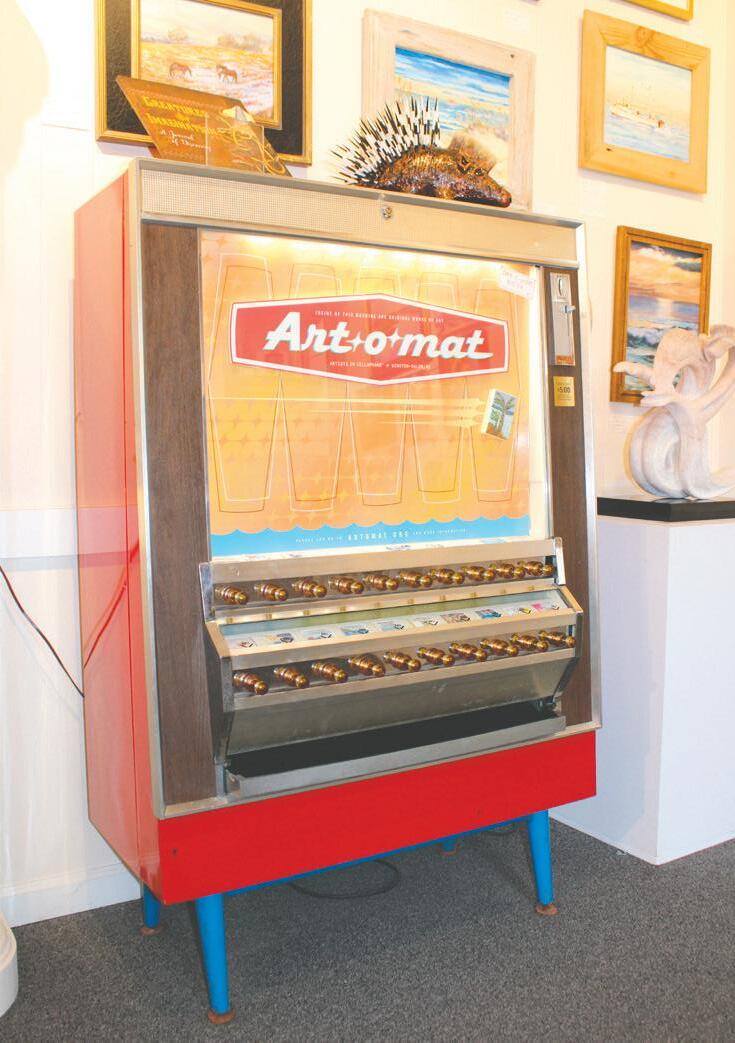
Dare Arts has an Art-O-Mat, a repurposed cigarette dispensing machine that dispenses original works of art for $5. There are less than 100 in the country, and many people come to Dare Arts just to buy a small piece of art from the machine.

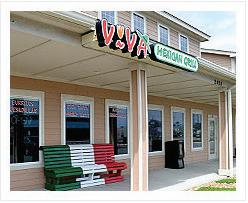









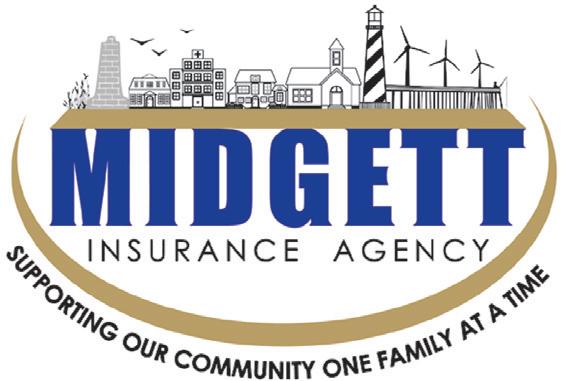

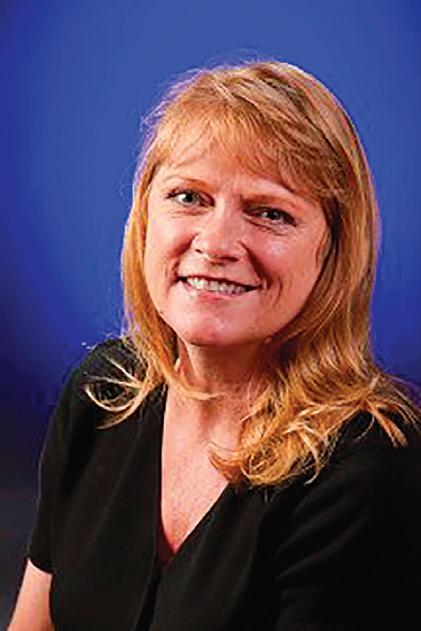


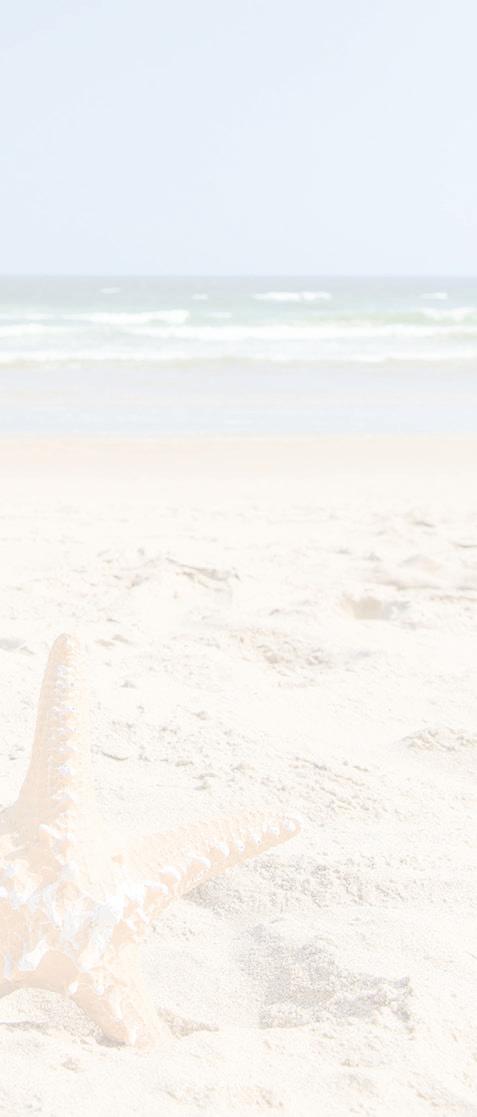



by Philip S. Ruckle Jr.
As each year passes us by we often notice a number of changes all around us. While some changes are evolutionary, others are progressive and others are seasonal.
One of the larger Outer Banks areas to undergo a change would be the five acres of land at the corner of U.S. 158 and Bonnett Street in Nags Head.
In years past, it was home to Dowdy’s Amusement Park, a fun family place that generated smiles galore with memories for several generations of Outer Banks locals and visitors alike. Today the site has evolved into a beautiful, art focused community park.
In the early ’60s Joe and Melva Dowdy ran a bowling center there. There were old fashioned bowling lanes with people at the end of the lanes setting up pins. Joe was into racing, so a go-cart race track was a natural addition. In time there was a Ferris wheel and then several other amusement rides as well as a small train ride. The tracks circled the park for a train that was the perfect for children of any
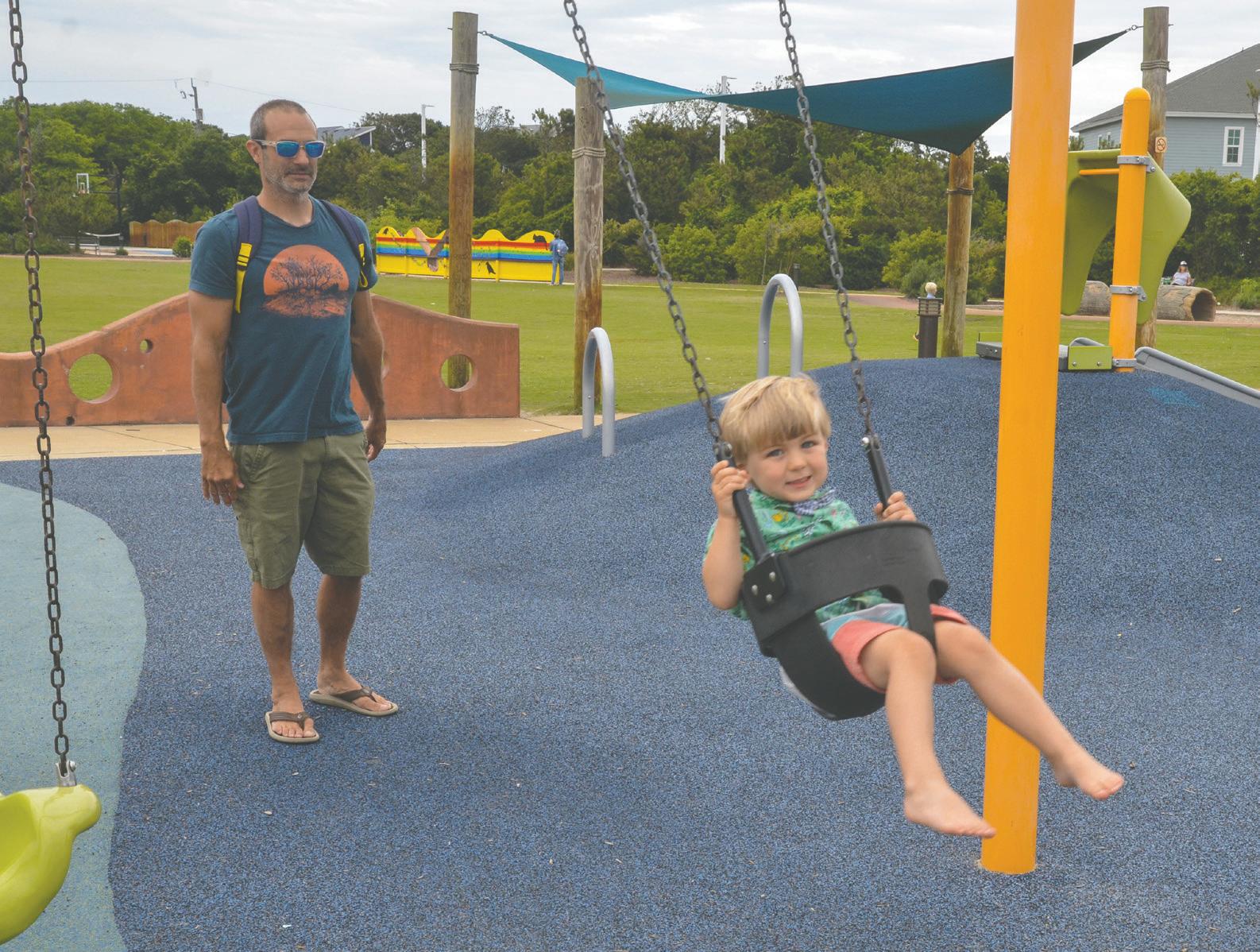



ages.
“It wasn’t like they opened up an amusement park,” says family member Darnell Tillett. “It just kind of morphed into one.”
A town treasure in its own right, it was the place everyone wanted to be, young and old alike. Like rolling down Jockey’s Ridge or attending a production of the Lost Colony, a summer visit to the Outer Banks was not complete without at least one visit to Dowdy’s Amusement Park.


After the amusement park closed in 2005, the property sat dormant until 2013.
Nags Head’s Board of Commissioners decided the property was too valuable to undergo commercial development and purchased the land with plans to develop a park suitable for locals and visitors of all ages.
A number of grants, including money from Trillium Health Resources and the Dare County Tourism Board as well as fund-
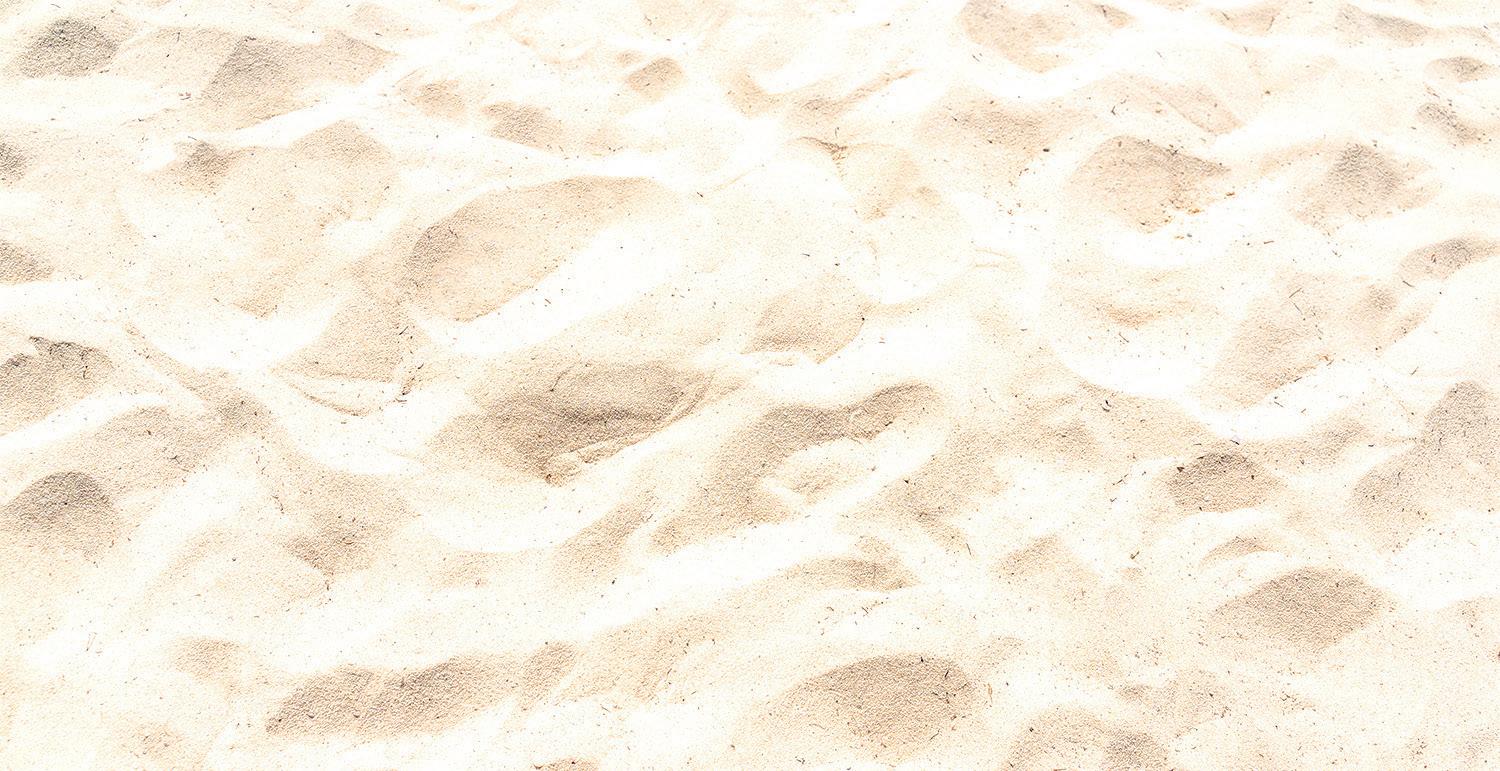


ing from the Outer Banks Community Foundation, were instrumental in keeping development costs at an affordable level. The transition into a municipal park began with a group of volunteers picking up trash on the property and, although it was eventually burned down in a fire department training exercise, local artists Marcia Cline and Kerry Sanders painted a mural on the north side of the former Dowdy’s Amusement Park build-
ing. In 2014, third through fifth grade students at the nearby Nags Head Elementary School painted their vision of the park on cedar shingles, which were then displayed at the October Pumpkin Fair.
Public meetings were held for input to developing a design concept with the desired park activities and amenities for children and adults.
Carnival worker Belva Weeks looks on as Sharon Ruckle prepares to enjoy an amusement ride at Dowdy Amusement Park in the early ’90s. Philip S. Ruckle Jr. file photo




Ruckle,
and nephew Lucan Ruckle on the Dowdy Amusement Park Ferris Wheel, a popular early 2000 attraction. Philip S. Ruckle Jr.
The result is a popular place to play, exercise, relax and enjoy everything around you. In addition to a modern playground, garden area, playing fields, and a pavilion, there are sports playing courts and a large open central lawn area suitable for picnics and a farm market.
The grand opening for the new Dowdy Park was May 13, 2017 with hundreds, if not thousands, of adults and children alike on hand for live music, free art activities and food from several local restaurants.
This transition now attracts families, community members and artists from Dare County and beyond daily to a park that has become a central hub for farmers markets, yoga classes, live music events, holiday events and many more outdoor activities.
With the foresight of Nags Head leaders and help from the community, Dowdy Park has become a central part of the Outer Banks and continues to be a fun place for people of any age and a place with something of interest for everyone in the family.








by Daryl Law
Although it has taken longer and cost more than planned, moving this charming former historic oceanfront house to a new dune top location has certainly been worthwhile, according to the Hardy family.
Their contractor has enabled them to take something old and make it new again, mainly the first floor living space, which features a modern layout for the bedroom, a master bathroom and walk-in closet.
In addition, it saved a unique coastal cottage from getting demolished and put a family-owned vacant lot to excellent use. The Hardys of Southern Shores have exciting plans for furnishings, appliances and perhaps a pool table in the game room.
“I’m excited for it to get done,” Daniel said, “it has been a long process and we’ve learned a lot.” He can’t wait to move and make it his own.
“I’m excited for the next step and putting furniture in here, that will be cool,” he said.
With help from his mom Pat and girlfriend Carly Medlock, Daniel’s already picked out and purchased several essentials, including a couch for the upstairs living room, a mattress, the bathroom vanities and lights.
Daniel and Carly seem especially happy about a new bowlshaped sink for the first-floor powder room that’s colorful and “Mexican-like.” Daniel’s also picked out a “cool” refrigerator.
Carly chose the finishes for the master bathroom, and it features gleaming white tile in the shower. They were both stoked about the large walk-in closet. All this area features new vinyl plank flooring throughout, which was covered in
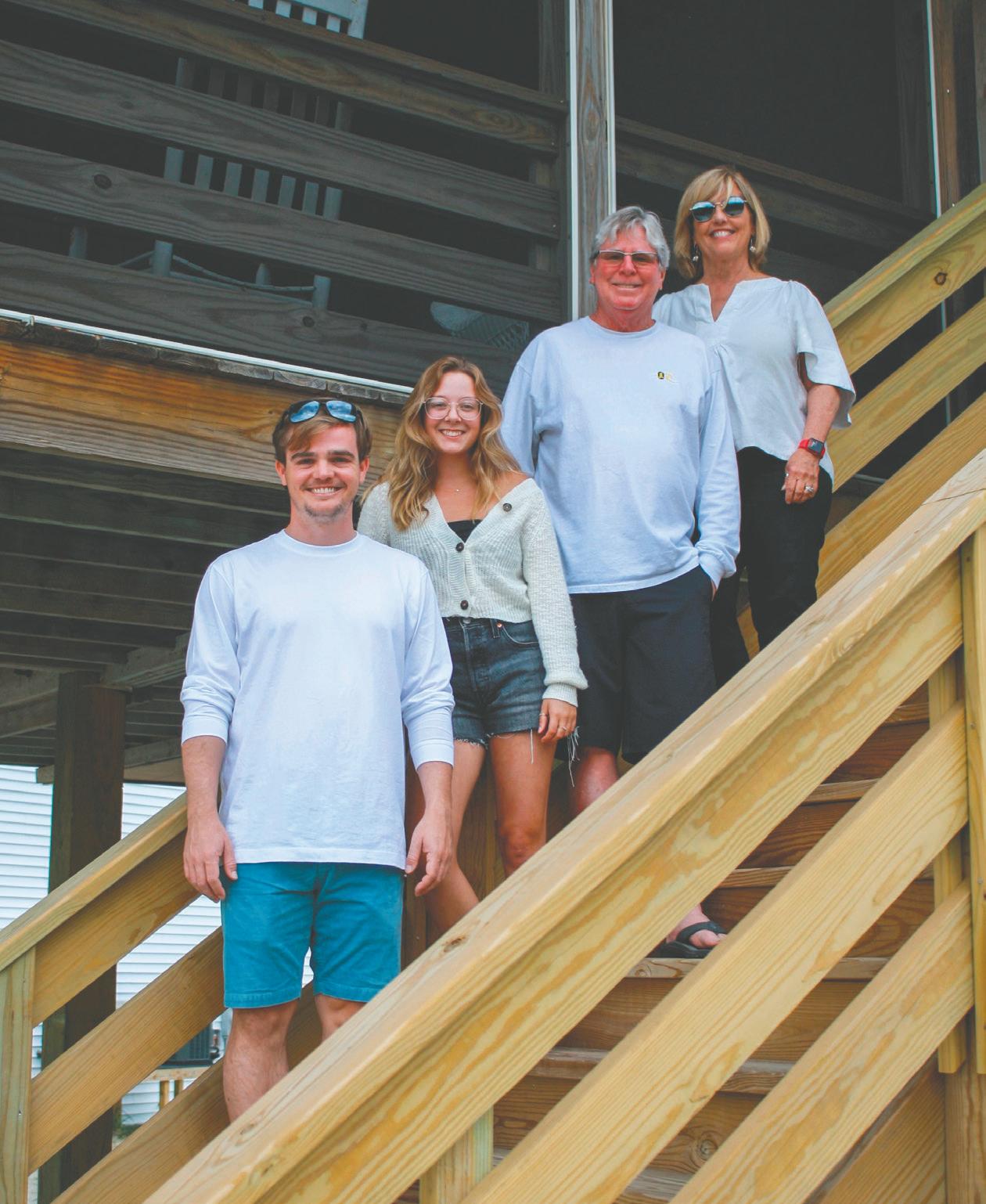
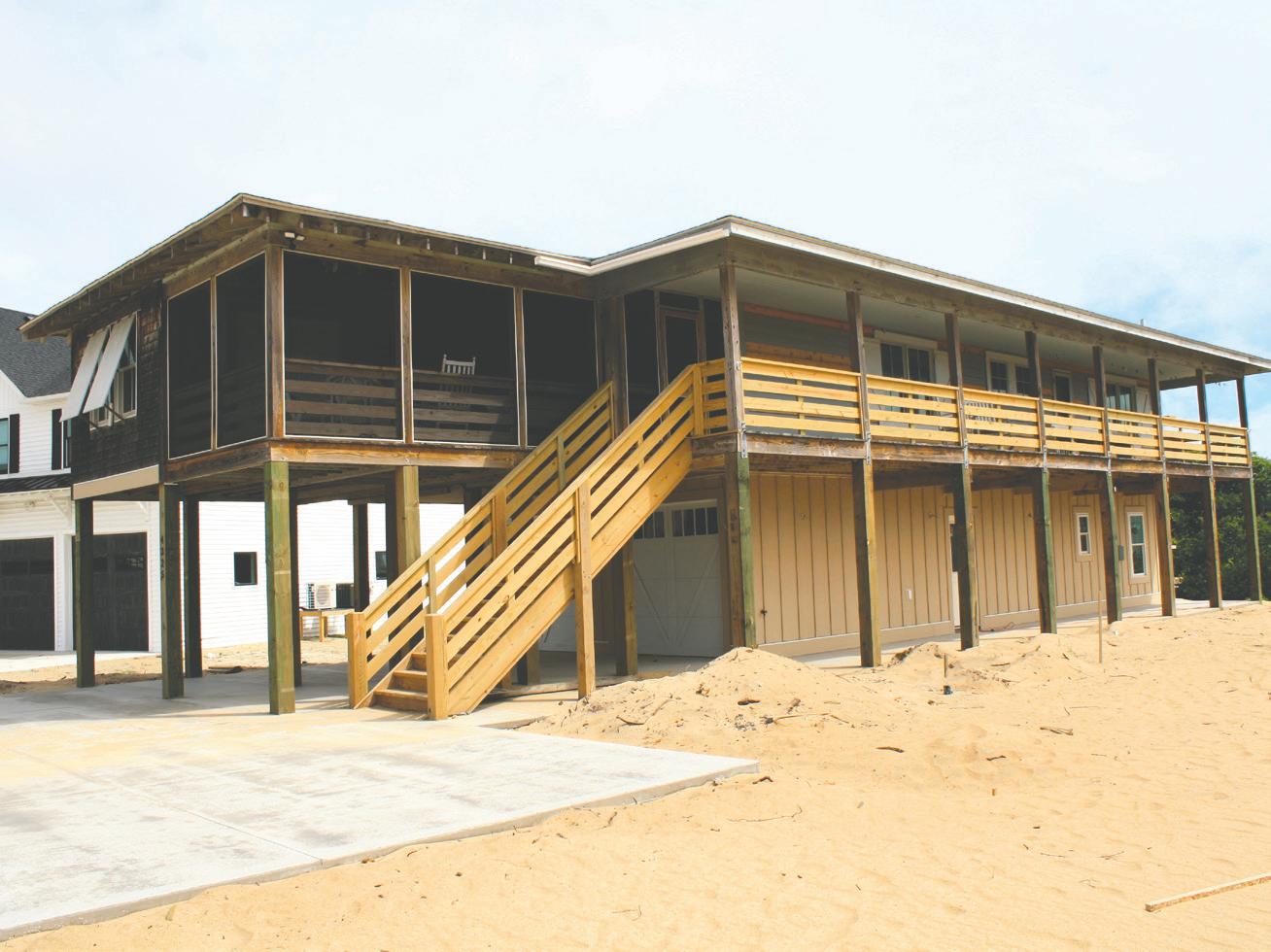














protective paper after it was installed.
Outside, there’s painted board and batten siding on the new first floor and lap siding on the second floor, which also features a long deck running east and west on the south side.
Daniel’s parents Dan and Pat have managed both the budget and oversight on this construction project. Once everything is settled, Daniel plans to get a traditional home loan so he can buy the house from his parents.
Together, they report that the plan is nearing completion, and each appeared pleased with the new concrete driveway area that was poured mid-May.
Dan and Pat used some creative financing and their real estate backgrounds to navigate the process of moving a 76-foot-long house seven miles from Kill Devil Hills to the vacant building site on the bypass in Kitty Hawk.
In fact, early in the venture, Dan identified a mistake made by the surveyor that could have been costly. When the lot was first pinned to show the piling crew where the house would eventually sit, Dan saw a problem.
“‘That isn’t right,’” he said. “The pilings were pinned to go 16 feet off [the plans].
“The house is 76 feet long, but the surveyor used 60 feet,” Dan said. “It needed to be pushed back 16 feet to make the front yard setback.”
But in the end, the surveyor resolved the problem, and the project was back on a steady footing.
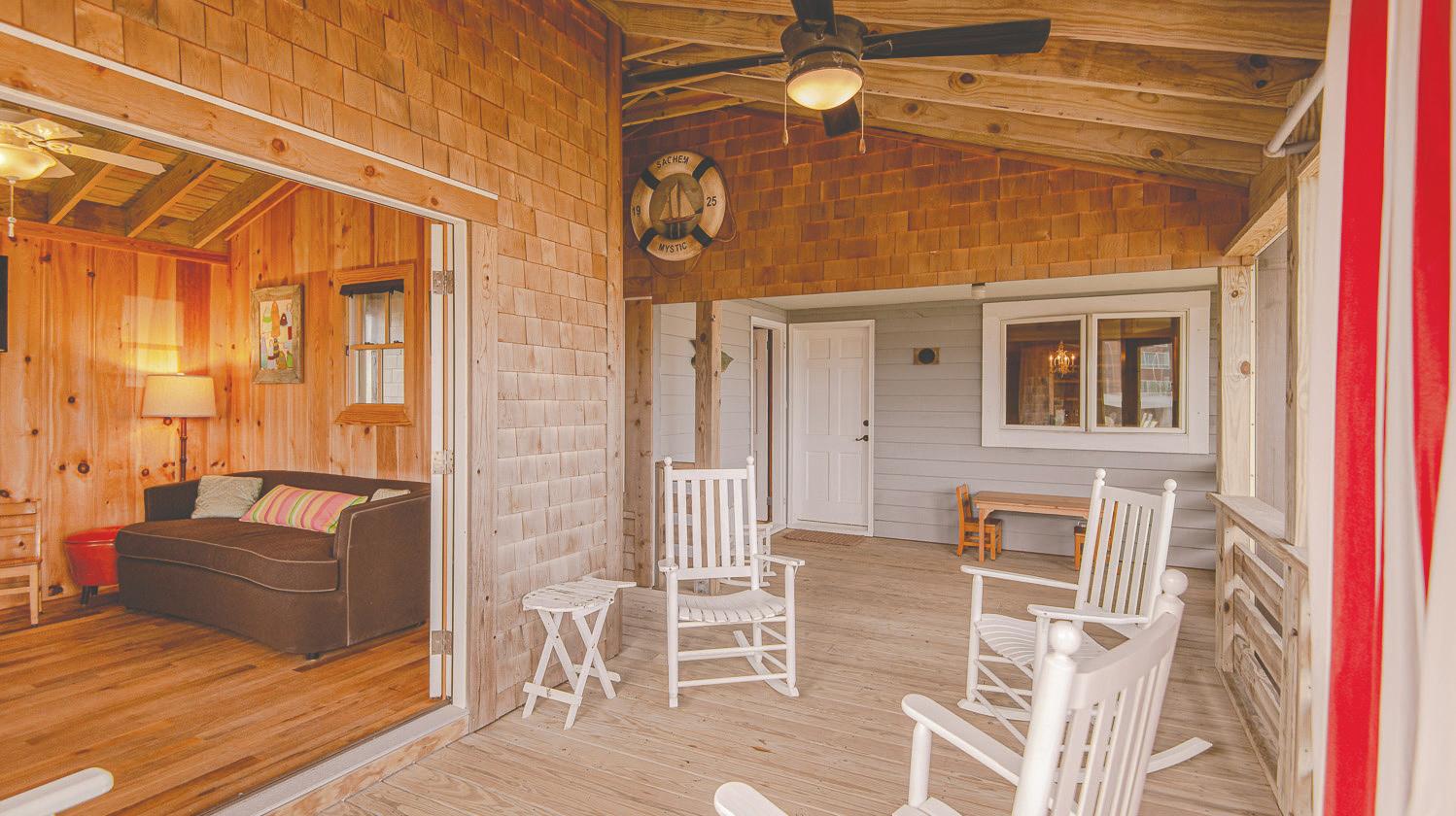

Pat, who first bought out her brother’s half of this investment lot, is now focused on helping her son get the home in order.
One of the best things they’ve done already was having an inside switchback stairway constructed to connect the first and second floors.
“We took out a bedroom and put in a stairway,” she said.
“They cut a hole in the floor,” Dan said, “and reused all of the wood from the bedroom walls for wainscoting downstairs, it’s all heart of pine.”
Because the original house features so many small bedrooms, taking one of them out doesn’t affect the livability too much and it opened up one whole side which includes the original corner kitchen and cabinets.
A long, rectangular covered deck on the southside frames a view of the dune line. The original oceanfront lot was once divided into two parcels so that Mrs. Darden could have her friend from Herford, Gladyce Perry, build another house next to hers. They were card-playing friends and the deal was cut while playing a hand. Courtesy Joe Lamb Jr. and Associates

With daylight fading during the April 2023 move, the house keeps trucking up the bypass with help from Kill Devil Hills police units who leap frogged through “French Fry Alley” blocking side road intersections to get the mission completed. Kitty Hawk police helped later. Staff photo
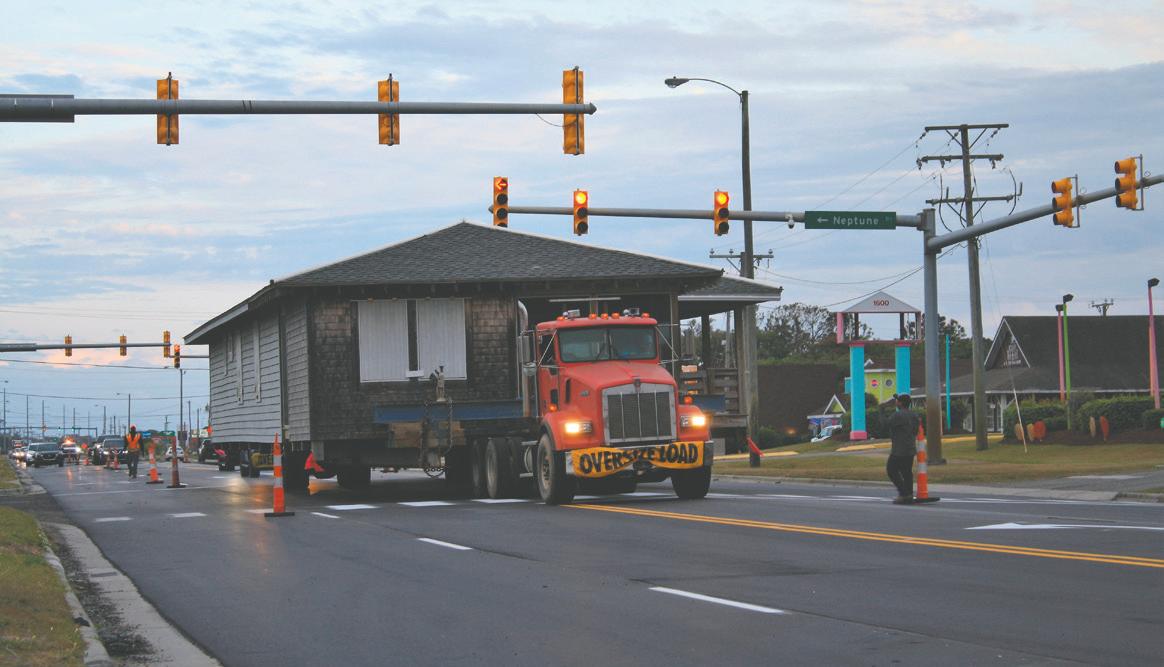
This way, entertaining will be easier because it effectively made a long great room. The original hardwood floors look great.
Carly said she was pleased to see the carpenter putting in the doors and trimming out everything. She and Daniel have picked nice colors for the downstairs including two blues: Open Air and French Moire.
“This looks nice y’all,” Dan said to them about the fresh paint.
Adjacent to the game room, there’s a two-car garage and a compact storage space tucked away under the new staircase.
Upstairs, there are additional touches that make this cottage special. First off, the walls are all heart of pine with no drywall. Several of the original lighting fixtures remain, including one for the dining room



located on the northwest corner. Inside, there’s a bedstead from 1937. Carly likes the old lantern fixture.
She also finds the “hidden closet” interesting. One has to look hard to find it even though it’s front and center in the living room. It was probably the linen closet or perhaps a pantry.
Like many others drawn to the Outer Banks, Carly grew up vacationing here from Kentucky. She is optimistic the house will be completed by the end of June so that in July, she can invite family over.
table.
The covered front screen porch is huge and there’s even another isolated bedroom
“My family can stay with me,” Carly said. “That’s another reason the Outer Banks is my favorite place because my family has always been coming here for vacation.”




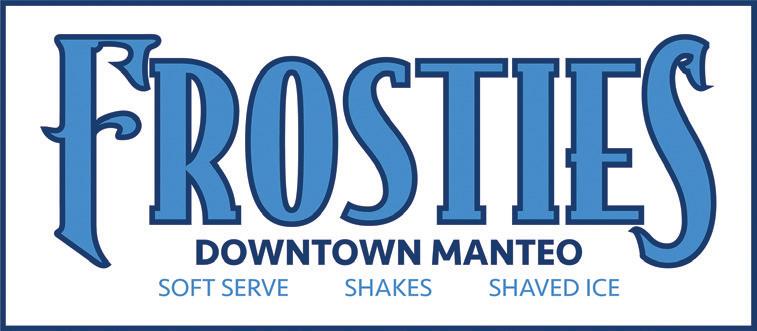
















by Michelle Wagner
nce a bustling logging town in the late 1800s and early 1900s, and then the “moonshine capital of the world” during the Prohibition era of the 1920s, the ghost town of Buffalo City remains a fascination for history buffs and laypeople alike. Located just 20 miles west of Roanoke Island on the Dare County mainland near East Lake, the remnants of what was once was a vibrant town of 3,000 has all but disappeared underneath the wilderness of Alligator River National Wildlife Refuge.
Known for its East Lake Whiskey, also known as Carolina Swamp Juice, Buffalo City was ideal for such an endeavor because of its remoteness, and its moonshine was


























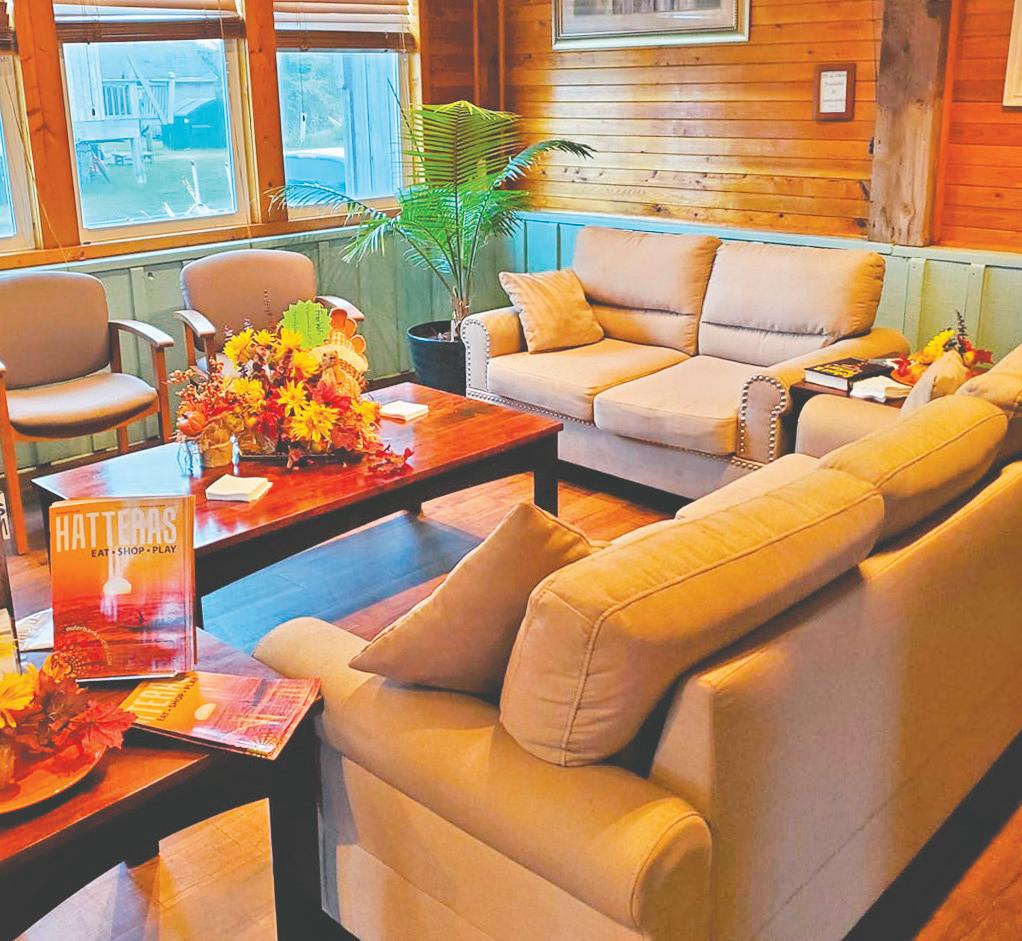


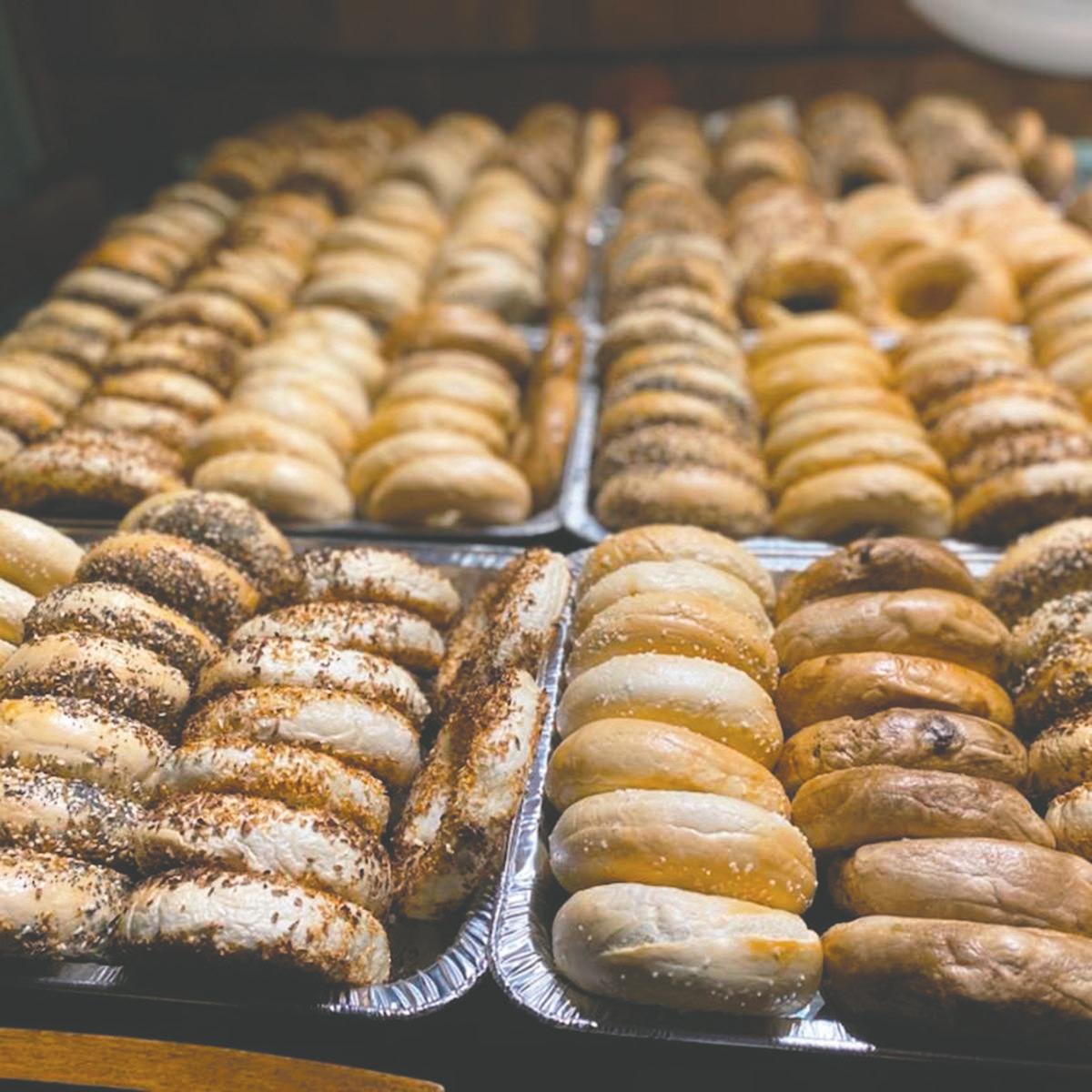


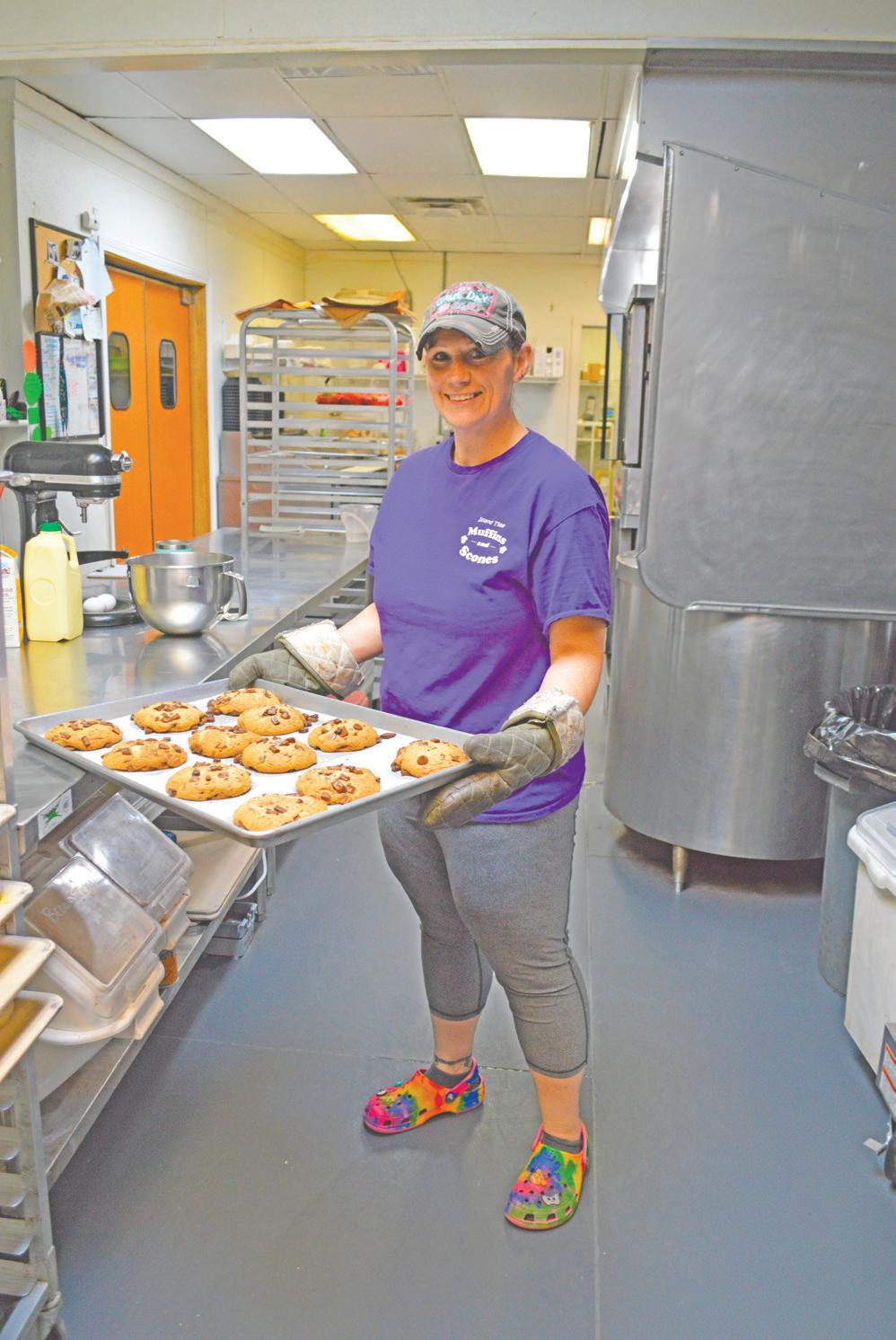





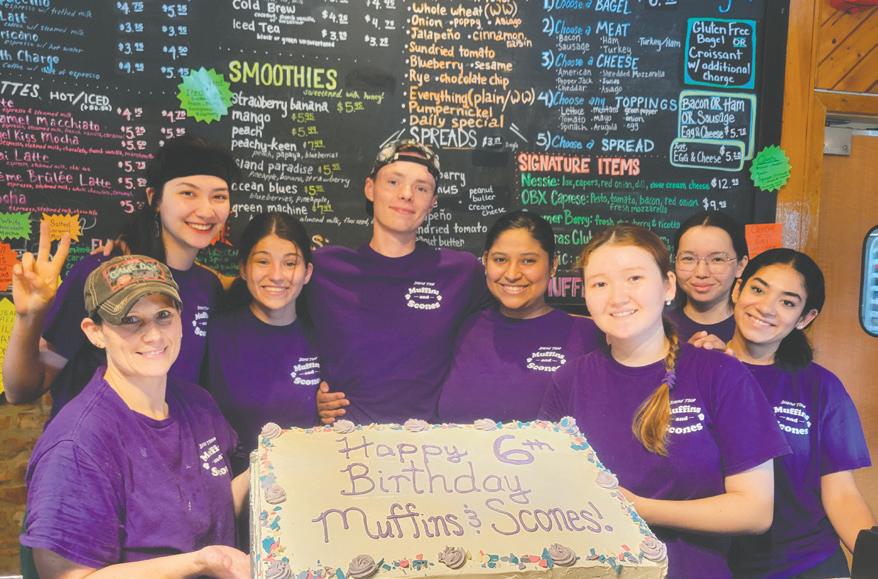

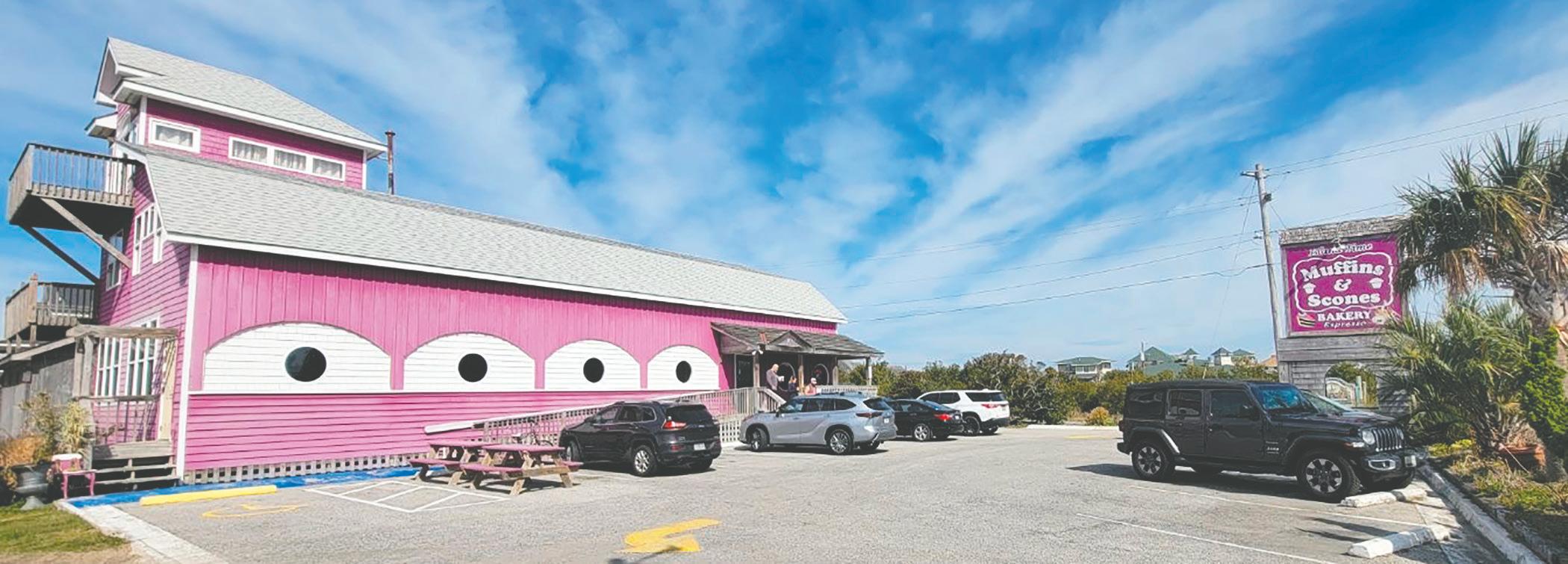
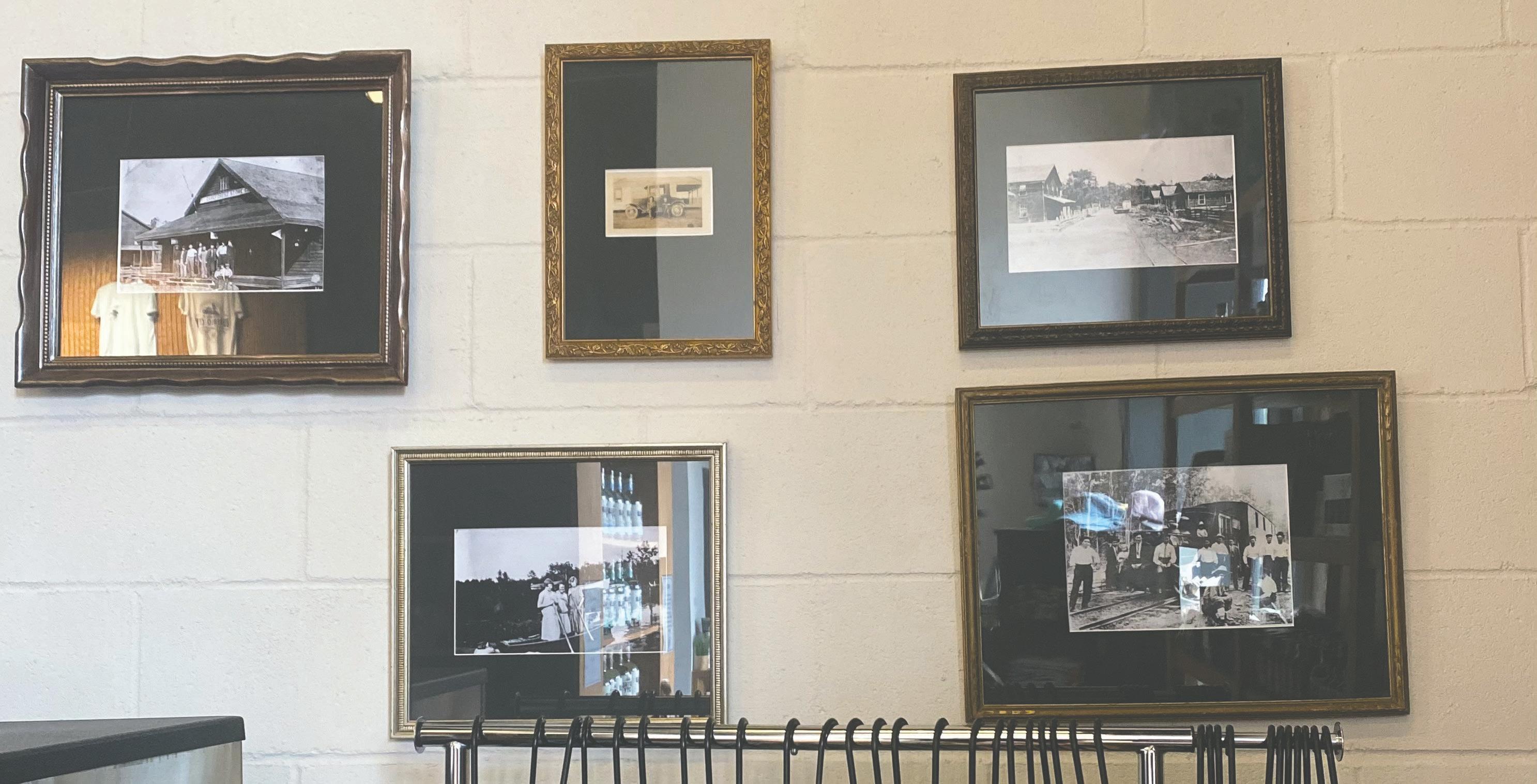
Buffalo City Distillery
renowned and very much sought after in speakeasies across the country. But when Prohibition ended in 1933, the city slowly died until the last of its residents had relocated in the 1940s. But its legacy lives on today, not only in history books, museums and among tales passed on through the generations, but in a Point Harbor building that honors its history with a distillery of its own.
Buffalo City Distillery opened its door just across the Wright Memorial Bridge in 2022 and is a perfect mix of the old and the new. From a hand-crafted drink at the bar, a tour of its distillery, live music, or a bottle of handcrafted Buffalo City Whiskey, Vodka and now Gin to go –Buffalo City Distillery has succeeded in bringing the past into the present.
“We like to say we are the legal boot-
leggers,” says Kelly Glander, the distillery’s retail and sales operations manager. “We are the legal version of Buffalo City, bringing it to the present day, but we are also keeping that history so pure to the point where we have pictures on our walls from family members. We even have a piece at the distillery from the railroad that went through Buffalo City.”
Buffalo City Distillery, which features era-reminiscent drinks like Boomtown Lemonade, East Lake Whiskey and “Revenooers” Old Fashioneds, the Hattie Creef and a Bootleggers cocktail, is owned by Buddy and Sharon Byrum of Duck. After 31 years in the corporate world, Byrum – who has had a family farm in Hyde County for years – decided to pursue entrepreneurship.
The result was building and operating Buffalo City Distillery where, after attending Moonshine University’s Master Distillery Course, Byrum developed all of the distillery’s products.
The Byrums’ farm, located near Lake Mattamuskeet on the AlbemarlePamlico Peninsula, is rich with highly organic prehistoric “Blacklands” soils known for the “exceptionally abundant and flavorful grains” the distillery uses to produce its spirits.
While Buffalo City Distillery is steeped in history and offers top quality spirits, there is so much more to this Point Harbor gem that is just a few miles over the Wright Brothers Memorial
“[Buddy] was actually reading a magazine on a plane and there was an article on distilling and turning corn into whiskey,” Glander said. “He thought, ‘Well, I have a lot of corn and I like whiskey –seems like a pretty cool concept.’”


Bridge. Depending on the time and day of the week, live music, trivia nights, a variety of food truck offerings and other special themed nights like low country boils, classes, and an amazing retail shop for gifts, drinkware and more are all part of the experience of visiting Buffalo City Distillery. On these ideal spring evenings, visitors can sit out back, order their favorite drink and have food delivered from a favorite nearby restaurant.
Glander said that because the distillery doesn’t sell food, it allows it to focus exclusively on drink offerings as well as entertainment. “We want to give people the restaurant experience without the food,” she said. “I want you to come sit and relax and listen to live music or participate in a floral arrangement class. I can focus on your experience so much more because I don’t have to worry how your steak is cooked.”
She noted that Byrum wanted to open the distillery on the Currituck side of the Wright Brothers Memorial Bridge and built it from the ground up, adding that it was the perfect location to build big.
“We always call it the unofficial welcome center of the Outer Banks,” Glander points out. “It’s the last stop before going over the bridge, so you can stop and grab your alcohol, your mixers and head to your vacation home and not have to go back out for alcohol.”









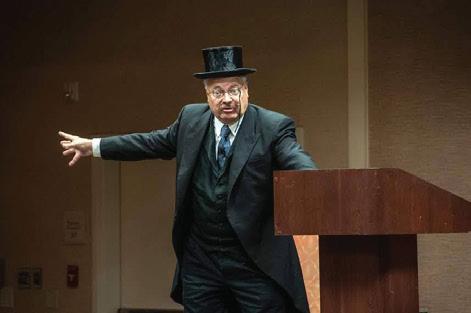



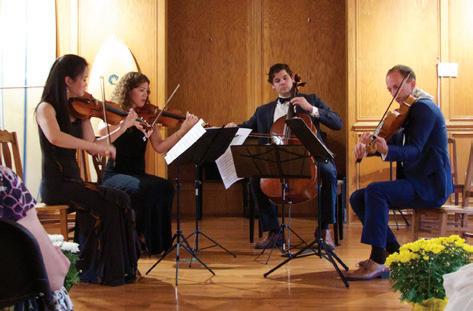
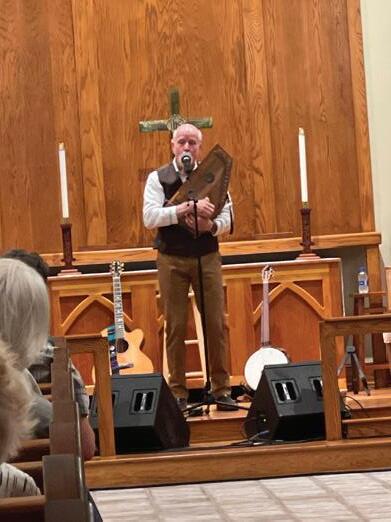





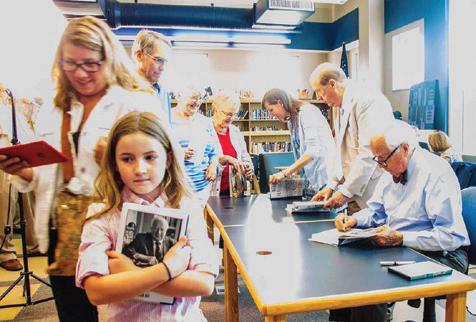



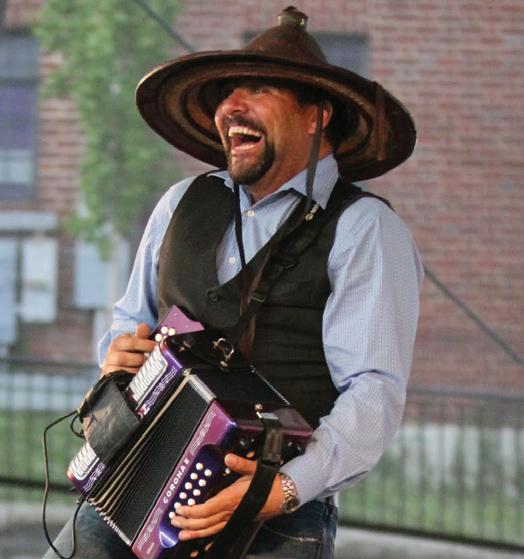
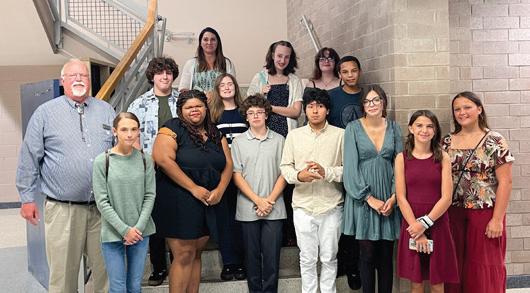






by Summer Stevens
Shortly after Beverly Sutton became general manager of Oasis Suites Hotel in 2015, a petite elderly woman came into the lobby with her grandson.
The woman gazed out the window and took a long, slow breath.
“Welcome to the Oasis, can I help you?” Beverly asked.
“No sweetheart,” the woman replied after a pause. “I just wanted to feel the place.”
“So you’ve stayed with us before?” she asked.
“No, sweetie. I was a cook here for many years.”
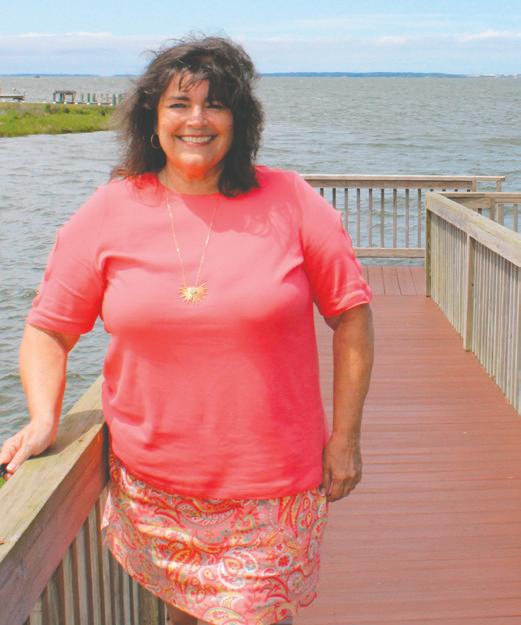
Beverly gets goosebumps every time she tells that story. Though there are no traces of the restaurant that bears the same name except for the airspace and the memories, the almost tangible nostalgia seems to have lingered. Guests tell her all the time how good the Oasis feels.
For almost 75 years, people have been stopping at 7721 South Virginia Dare Trail along the causeway in Nags Head for rest and refreshment.










In 1950, Violet Kellem opened Oasis Restaurant. Sound views poured in through three walls of windows in sunroom. The restaurant offered seafood, sandwiches and their famous lace cornbread. But perhaps what is most fondly remembered were the barefoot waitresses in white blouses, white shorts and bright blue aprons.
“I’ve had so many people say how wonderful the restaurant was how they loved it,” Beverly said.
The name was changed to The Dock in 1980 when Warren Jones bought it, but it continued to be a favorite locals hangout. A decade later, Violet’s grandchildren bought the restaurant and restored the original name, continuing their grandmother’s legacy of serving great food with spectacular water views at the Oasis.
The Hatchell family purchased the Oasis in 2003. In 2004, a fire devasted the building, burning it to the ground.
According to Beverly, the family decided that because there were so many great restaurants nearby, they would do something unique with the space.
“People tell us all the time that they just feel so good here and that it’s so welcoming”
After almost two years of careful planning and design, the Hatchell family opened Oasis Suites, a 17-room boutique hotel unlike anything else on the Outer Banks.
The suites are decorated with an old-

world style. Warm-toned walls, dark wood antique-style furniture, and crisp white bedding create a feeling of pure luxury.
“The rooms feel grand and open,” Beverly said. Each suite is meticulously maintained, offering a perfect blend of convenience (like a full kitchen) and elegance (like a spa-inspired tub). The Oasis offers executive suites, family suites, and a honeymoon suite.
“People tell us all the time that they just feel so good here and that it’s so welcoming,” she explained. “And while the hotel is wonderful – and it is, the hotel is absolutely unique to anything that’s on the beach – I think it’s just the great feeling that they have when they come here.”
(Psst, we think it’s Beverly.)
Just like owners and managers in years past have worked hard to make the Oasis Restaurant and The Dock

unique and special, the tradition continues today at the Oasis Suites Hotel.
Most visitors are repeat guests. From those traveling on business to families to single teachers looking for a few days of rest, when someone comes to the Oasis for the first time, it usually won’t be their last. “We’re not just a stop and go. People tend to come back and then the next thing you know you’ve built a relationship and it’s a beautiful thing. It is – it’s beautiful.”
Even though the beach awaits and there are views for miles in the suites, many guests prefer to sit in the lobby. One gentleman comes several times a year for a week and spends most of his daytime hours in a cozy chair beside the reservation desk, soaking up the sound views and chatting with the manager.
Beverly reflected, “I think about all the people that come here that used to go to the restaurant and how they loved the food and they loved the lace cornbread so I thought in my head, the Oasis Restaurant was satisfying to the palate; and the Oasis Hotel feeds the soul.”























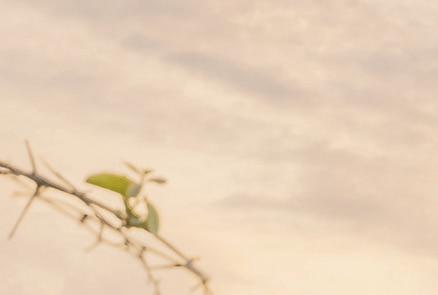
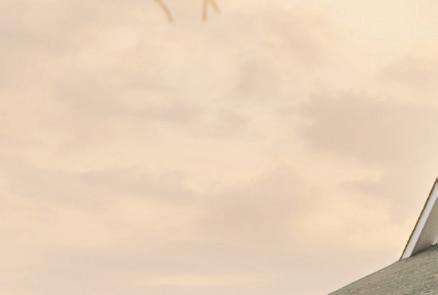








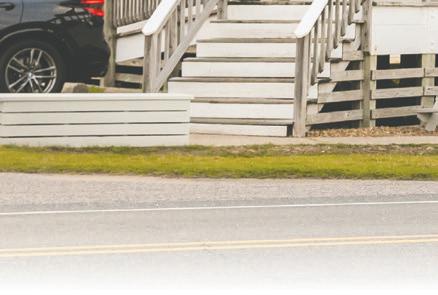

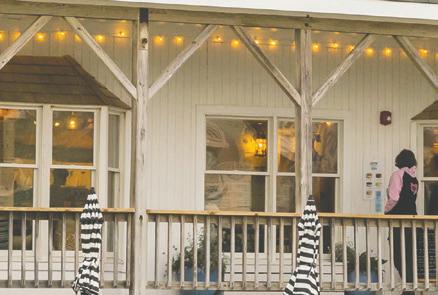


Iby Michelle Wagner
f there is one thing for certain about the iconic Surfin’ Spoon, it’s that wherever it may go, its vibe is sure to follow.
Jesse and Whitney Hines originally opened the doors of their iconic froyo business to the Outer Banks at the start of the 2012 summer. That door was a hobbit-style entrance to a building at 2408 S. Virginia Dare Trail in Nags Head that is steeped in local history. It’s now home to the Salt Hair Salon, whose owners have continued to honor its charm and make it their own.
Despite their love for the charming building just south of SeaGreen Gallery, the Hineses recognized in 2019 that their popular sweet treat destination was quickly outgrowing the space. “We loved the historical building that we started


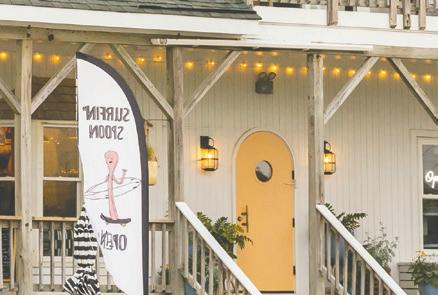

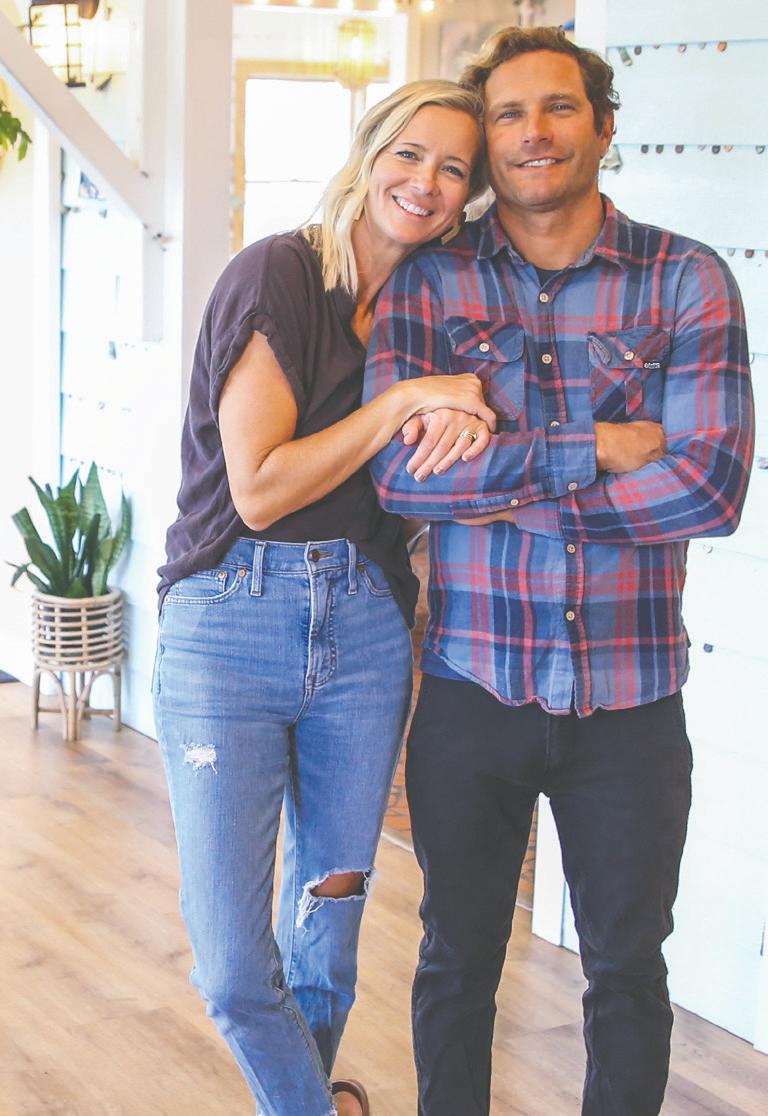



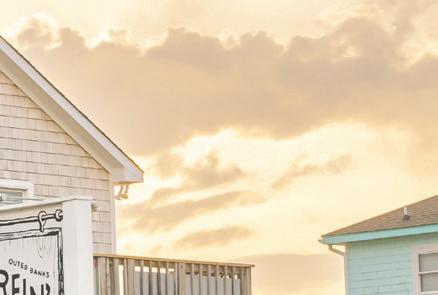







the Surfin’ Spoon in,” says Jesse, but added that they knew it was time to make a move.
So Jesse and Whitney began looking at other properties in Nags Head and what they found was the perfect spot to grow their business, and it was just a few miles down the road at 3408 S. Virginia Dare Trail. At the time, it was the home of T-Shirt Whirl, which had been in operation since 1993 by Keith and Nancy Brightbill. But when the Hineses took a leap of faith and purchased the building in 2020 – at the height of the COVID19 pandemic – the Brightbills retired and passed the building on to Jesse and Whitney.
The Hineses took special care to make sure that they brought the same feeling
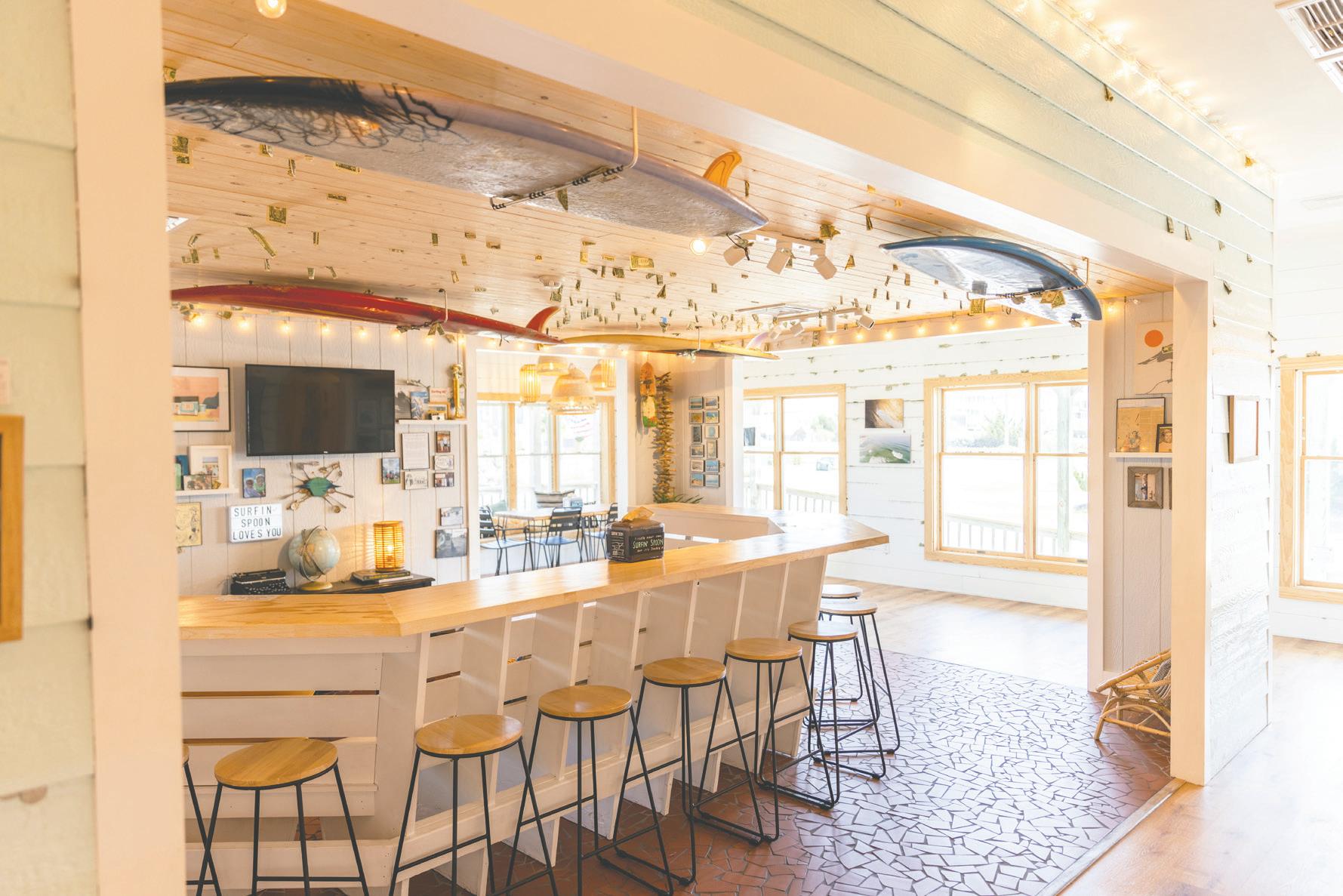
felt in the old Surfin’ Spoon with them to their new location – and they succeeded. After all, Jesse, a former professional surfer, and Whitney, an artist, in the short time since first opening Surfin’ Spoon, had already made it into an iconic Outer Banks sweet shop and they were determined to keep the vibe alive. They even included the well-loved hobbit-style door at their new location.
Of the former T-Shirt Whirl building, Whitney said, “the space was so much bigger and has high ceilings … when we first gutted it and were trying to envision what it would look like, we had a really hard time. The old location was small, Mike Leech photo


quaint, with low ceilings and had a historic vibe.”
But in typical Hines fashion, and with the help of Chad Everhart, Whitney’s brother who is an architect, they found a way and brought the old Spoon right into the new one, complete with a low enough ceiling in the center of things so that customers could continue the treasured tradition of slipping cash into the ceiling boards for donations to Surfing for Autism.
“So now you come into the new but re-enter the old, just as it was, in the center of the space,” Jesse said, adding that they have also renovated a spacious one-bedroom apartment above the Surfin’ Spoon to rent out nightly on Airbnb.
While a nerve-racking endeavor in the beginning, the move has been amazing: “We have more space for customers, it allowed us to converge our Sammie [ice cream sandwich] business into one location and we have had a storage building built onto the back of the property.”
Jesse and Whitney estimate that the property is about three times larger than the old location, with an additional 800 feet of storage in what they call the “Spoonhouse.” Whitney added that the porch and yard provide outdoor seating, the parking lot is safe and, most of all, it is above sea level.
Jesse and Whitney first got the idea for Surfin’ Spoon when they went to a frozen yogurt bar while visiting friends in Athens, Calif.
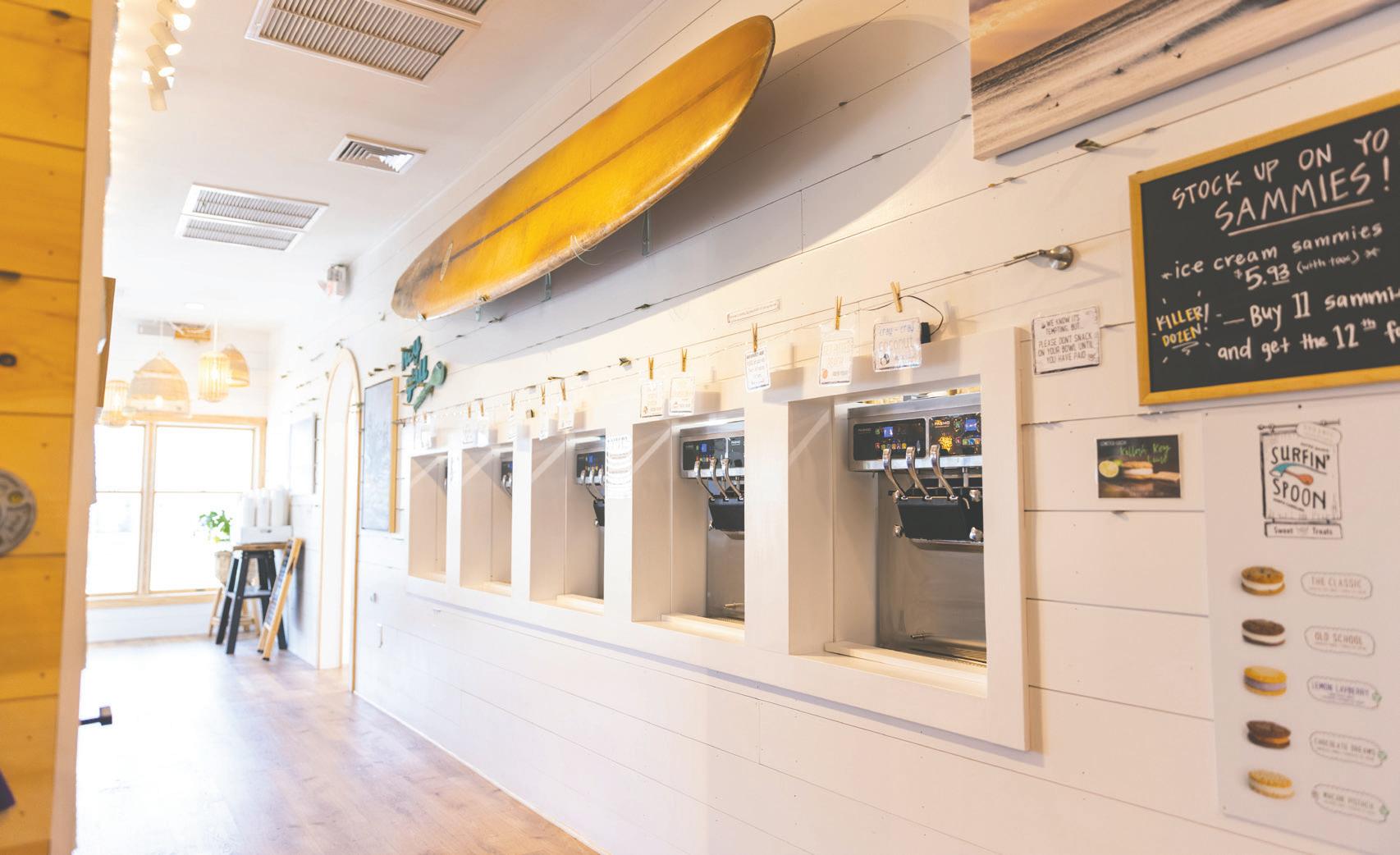
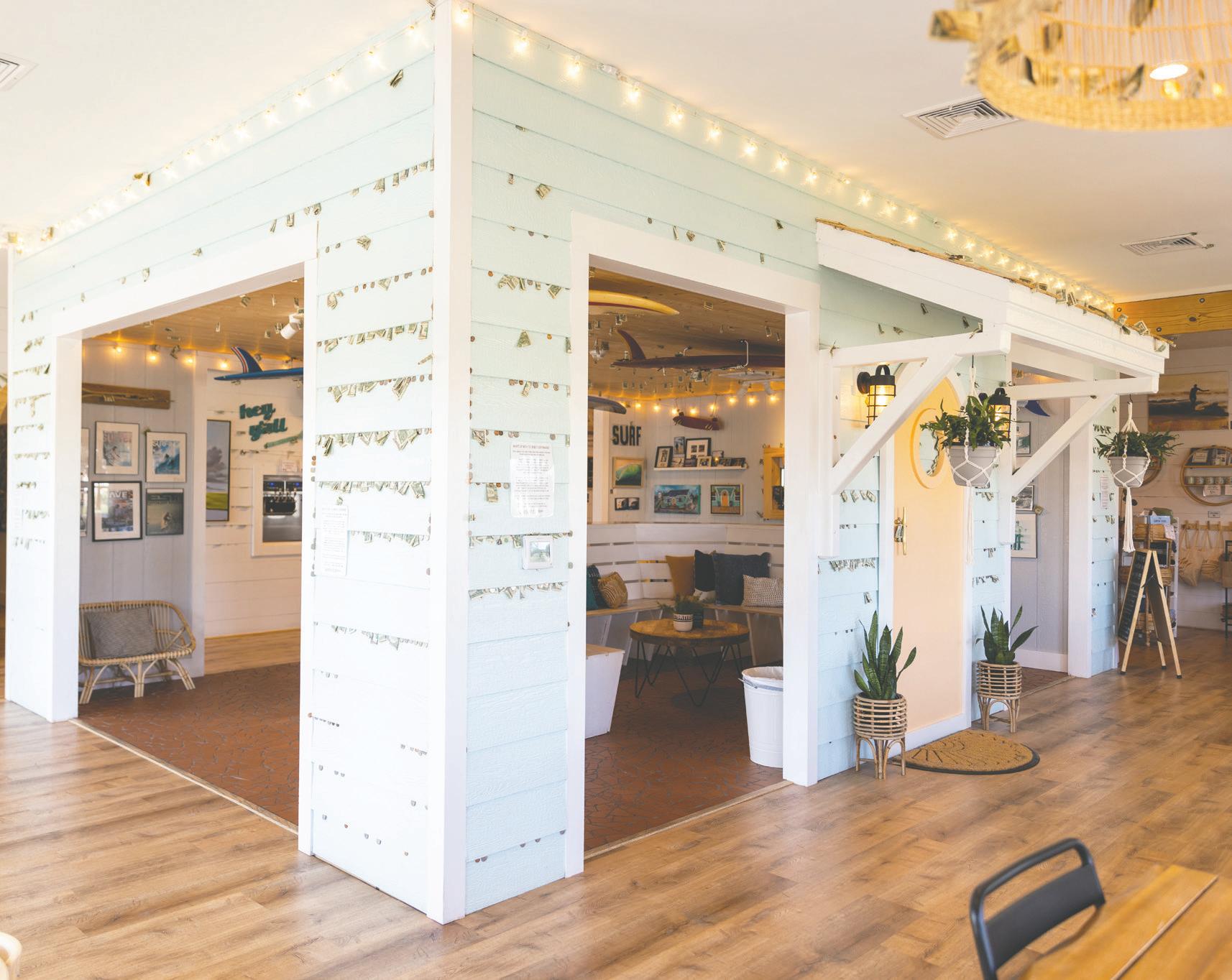

They fell in love with it and brought the idea back to Nags Head, creating their own froyo shop with their own unique style. As their business grew, so did their family with the birth of their first son, Bear, in 2013 and their second son, Wilder, in 2017.
And despite the pandemic and two feet of water that flooded the old building during Hurricane Matthew in October of 2016, Surfin’ Spoon has continued to grow in popularity in its new space.
In the end, Jesse acknowledges that it was a little terrifying buying the property in the middle of a pandemic. “But we prayed and trusted God that this was the right decision,” he said. Turns out, the Surfin’ Spoon really did just get bigger and better.

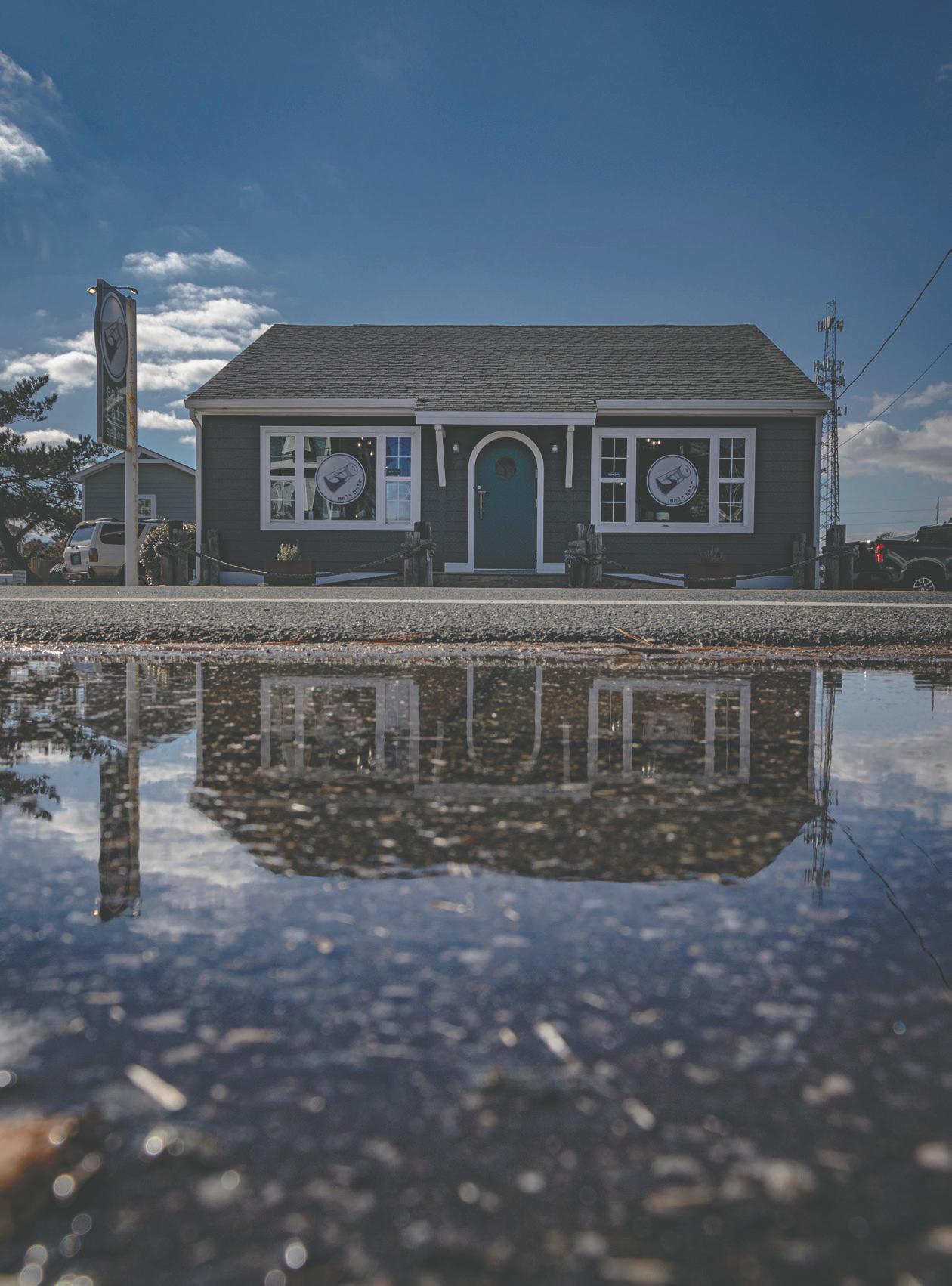

by Michelle Wagner
Beginning in July 2021, Panda Daniels found a new home for her Salt Hair Salon in the former location of Surfin Spoon, located at 2408 S. Virginia Dare Trail in Nags Head. The cozy, quaint building with a long history seemed to be a perfect match for Daniels, who at the time was located in Kill Devil HIlls on the corner of East Archdale and U.S. 158.
Between 2012 and 2020, the building – with its unique hobbit-style door – had been Nags Head residents Jesse and Whitney Hines’ widely popular Surfin’ Spoon Frozen Yogurt shop, but they had recently moved further south down the beach road to their new location. Even before that, however, this little windswept beach shop had been a fixture of Nags Head for decades.
In the 1960s, Daniels said, what is now Salt Hair was a

restaurant called “Chicken in the Rough” and then “Jockey’s Ridge Restaurant.” It partially burned down in 1975, and between 1976 and 1986, it was the Salt Box Tackle Shop, which eventually transitioned into a nautical gift store. Beginning in 1989 and through the 2000s, the building was home to an art gallery.
Daniels still has the original sign from the Salt Box hanging in the hallway, framed with reclaimed wood by their next door neighbors and friends at SeaGreen Gallery. Through the years, one thing has remained consistent of this treasured building – whoever inhabits it has kept the beach road vibe and history of the building alive.
“We love the quirks of [this] Outer Banks original, from the infamous arched door to the shattered terra cotta floor,” said Daniels. “It’s a nice change to be on the beach versus facing the bypass as well, and the shampoo room is actually behind the angled wall where the frozen yogurt machines used to be. I added frosted glass to provide a cozier feel but not completely block out the rest of the salon.”
Daniels said that the salon’s color mixing area is where the toppings used to be. “The layout really played nicely with our needs. We even have a barber room with its own arched entrance,” she explained, adding that the Salt Hair crew welcomes people from all walks of life and celebrates diversity. “We are focused on delivering bespoke hair that makes our clients feel seen and well cared for,” Daniels said.












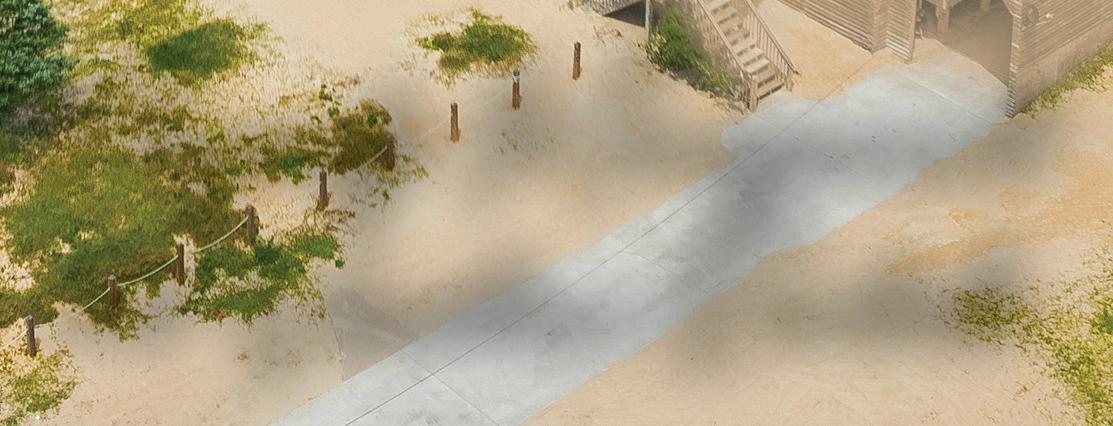













We Make You Stand Out In The Crowd!
Owner-Centric™ - Experience the Resort Realty di erence and receive a dedicated sta with LOCAL o ces. Resort homes are assigned to individual property managers so you get a more personal touch with people who know you and your home! We o er no cost in-house maintenance, a housekeeping department that truly cares, accompanied by unsurpassed in-house marketing. For the northern OBX beaches, text or call Debbie Harrell at (252) 305-9011 or for Hatteras Island, text or call Buck Meier at (252) 255-3569 to learn more!
by Daryl Law
t’s a new day at the Oregon Inlet Fishing Center.

Under new management, the entire facility has been transformed into a world-class marina, tackle shop and restaurant, the Sea Chef. The revered offshore fleet has a classy new home.
Just one look around the boat basin reveals new bulkheads, fuel pumps, slip pilings, decking, walkways and the three-story marina replacement build-


ing. There’s more parking and new traffic patterns.
It houses the all-inclusive Oceans East Tackle Shop, the restaurant and an exquisite special events room with panoramic views.
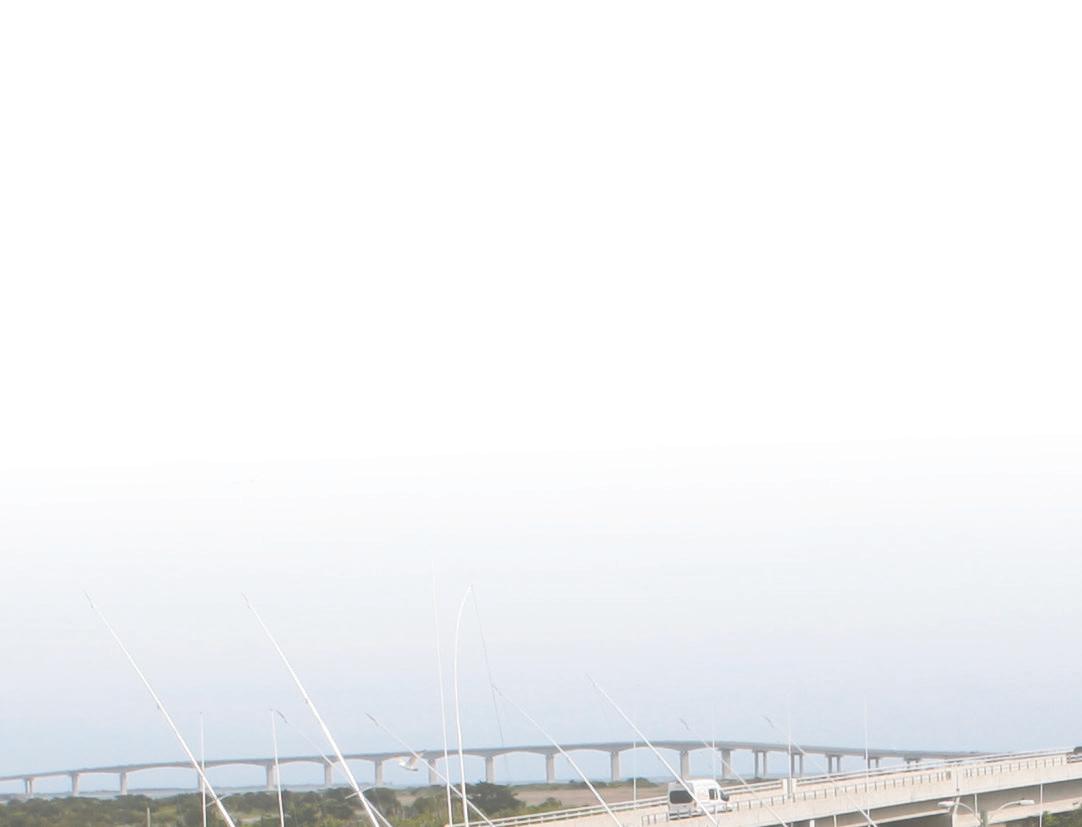
Home to some of the fastest and bestbuilt custom sportfishing vessels in the world, these boat crews and customers can now revel in first class services too.
The Miss Oregon Inlet II head boat
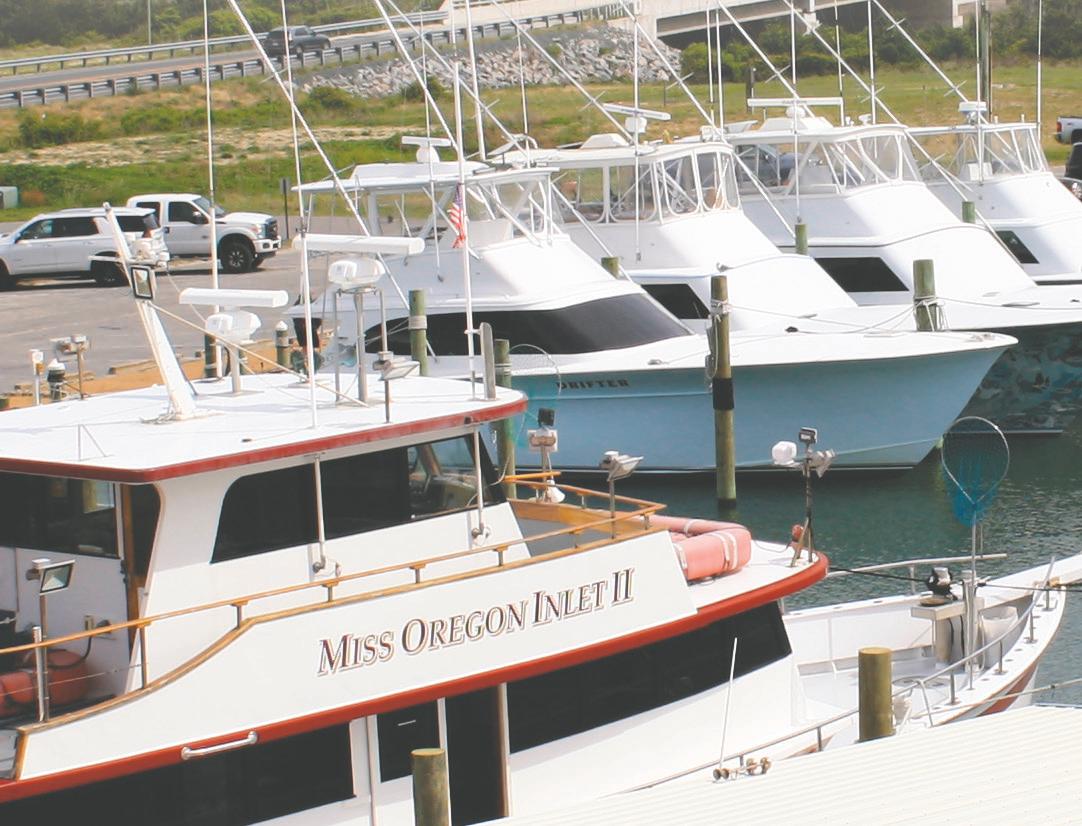
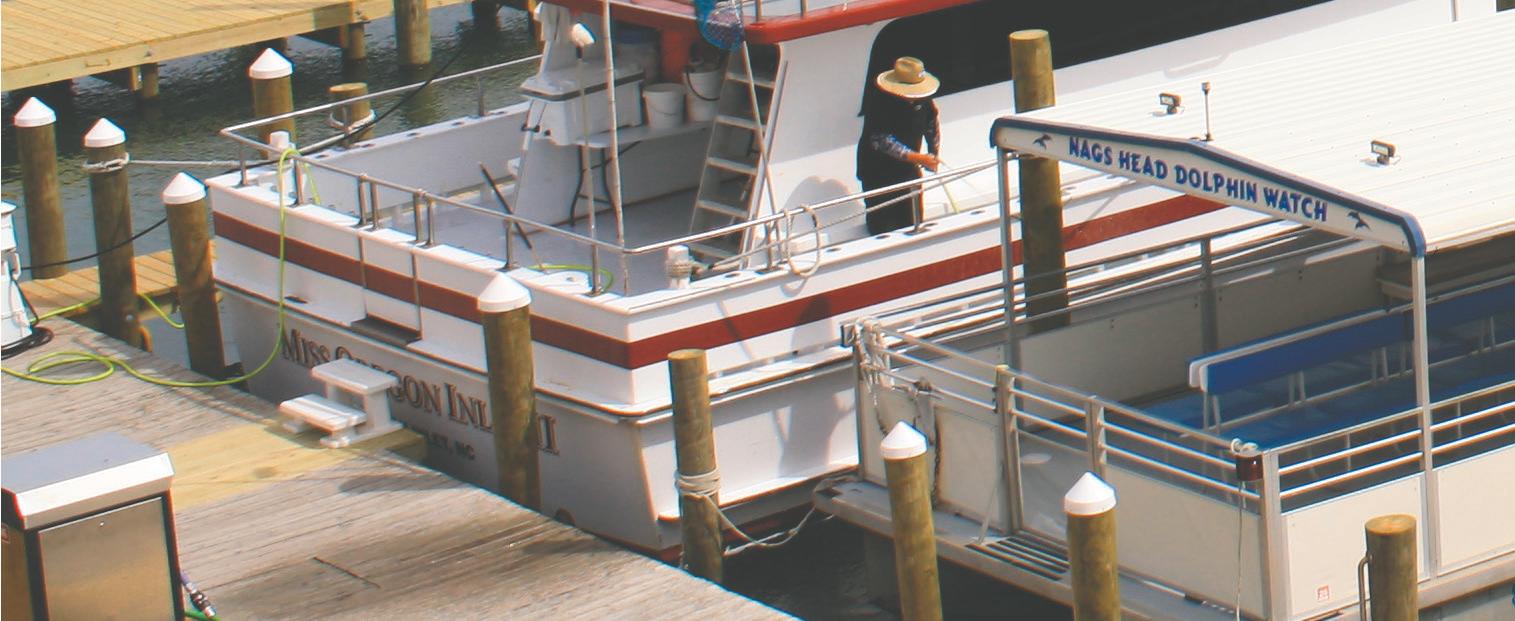

proudly points to open waters from her birth adjacent to the new building. Leaseholders Steve and Russell King have gone all out to turn the facility into something special. The brothers leased the property from the National Park Service for 20 years.
Eventually, the old marina store will be phased out to give way for a pavilion. The fish cleaning operation will stay the same for this season, staff reported.
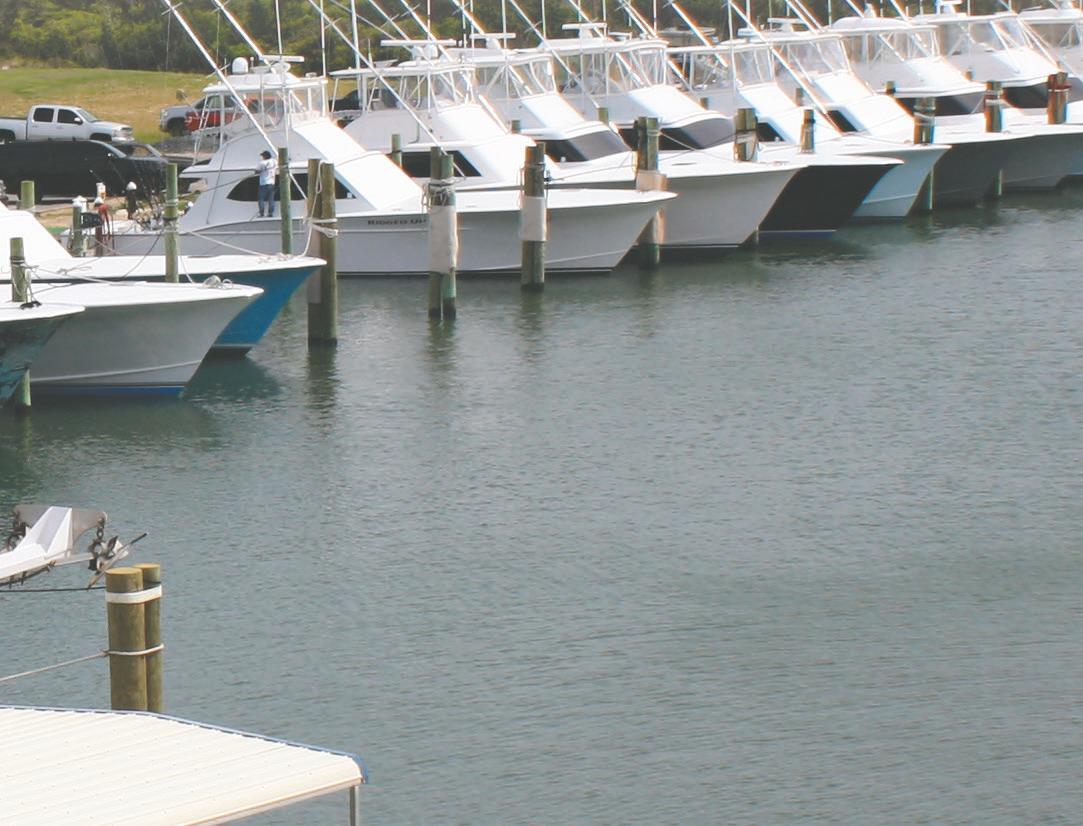

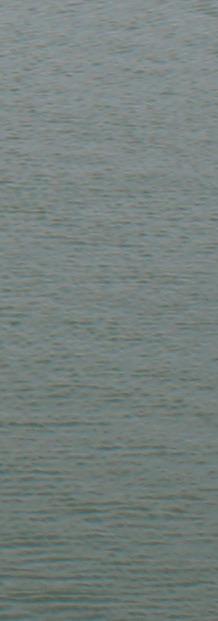
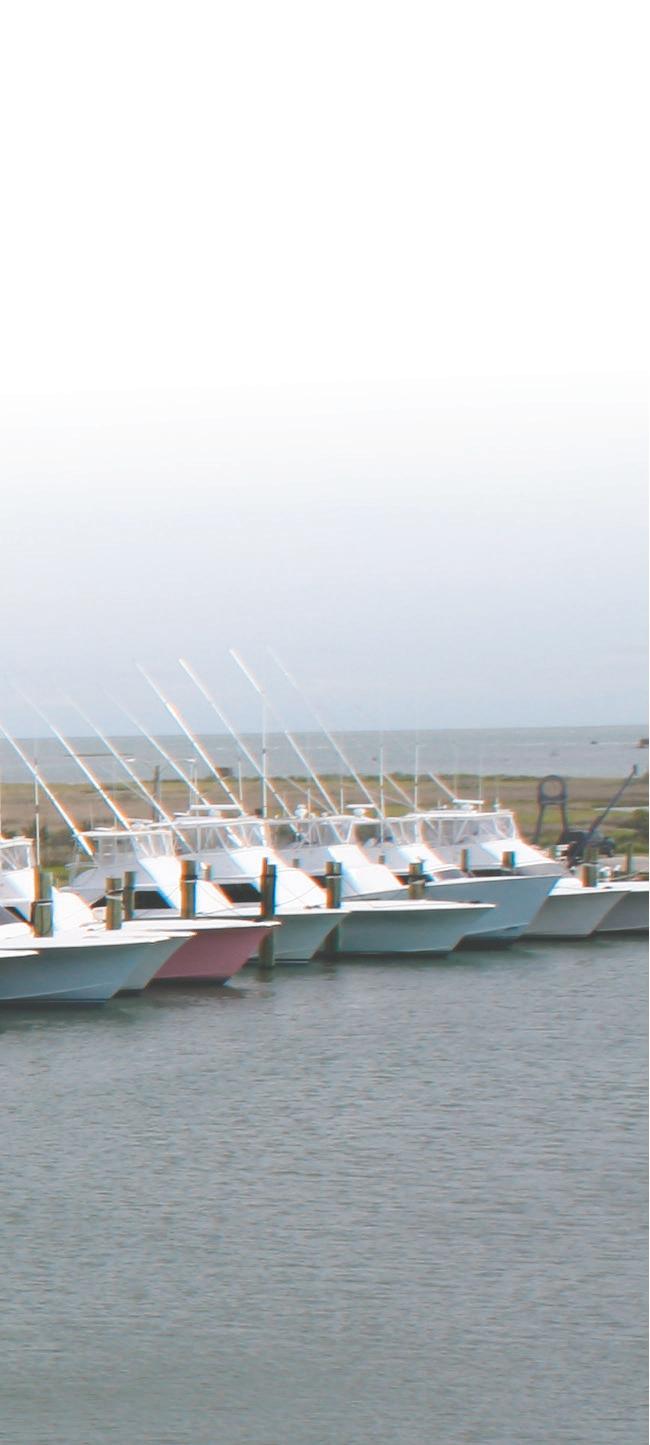
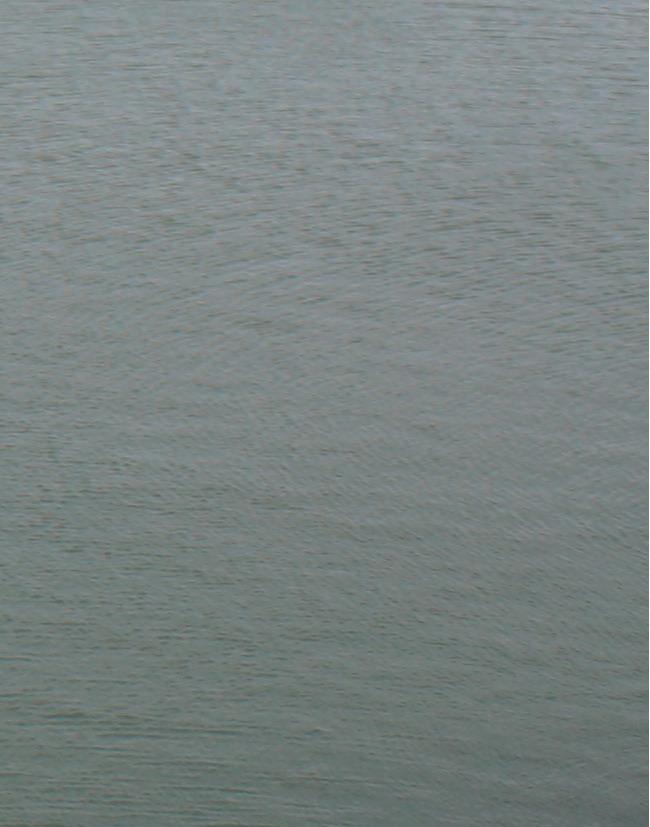
Around the bend from this building, there is a new walkway over to the public boat ramps. There’s even a transient boat fuel pump and over the road fuel for vehicles and boats on trailers, according to Steve.
He’s pretty pumped up about the opportunities at hand.
“Our family has been visiting the Outer Banks since the early seventies and have always considered it a second home,” Steve said.
“To be given the opportunity by the National Park Service to be temporary caretakers of Oregon Inlet Fishing Center is a privilege we don’t take lightly,” he said.

“Overall, the project has been in the works for four and a half years,” Steve said. “Construction took two years … it took longer than expected due to COVID era restrictions, supply chain issues, COVID cost overruns as well as inflation.
“Because of these reasons, the timing was not the best to start a project on this scale, but no one saw the pandemic coming and things were already put in
motion,” he noted.
“We are having to evaluate future plans, but we would like a pavilion and new Fish Cleaning House in the near future,” Steve said.
“We remain hopeful but we shall see,” he added. As for the replacement of the free tire air-up station, the Kings may need some help to complete what they’ve
started.
“A pull-off area has been constructed for the air station, however, given the fact that this service is free to the public, and due to the costs of new equipment, we are trying to find a way to fund it,” Steve said. “We would love to see about partnering with any groups to see if we can get this done.”
Fishing center dockworker and avid fisherman Tim Gayhardt said he thinks all the changes are wonderful. He camps across the street and works four long days before returning home to Spring Hope each week.
Gayhardt said the captains and mates love the new fueling situation. Before, they all shared a pump station on the north end of the boat basin and had to motor down to fuel up before going back to their slip to tie up each day after fishing.
Now, there’s 11 fueling sites spread out around the docks and these crews can now fuel up in their slips.
“I love it,” he said.
Gayhardt noted that the offshore cli-

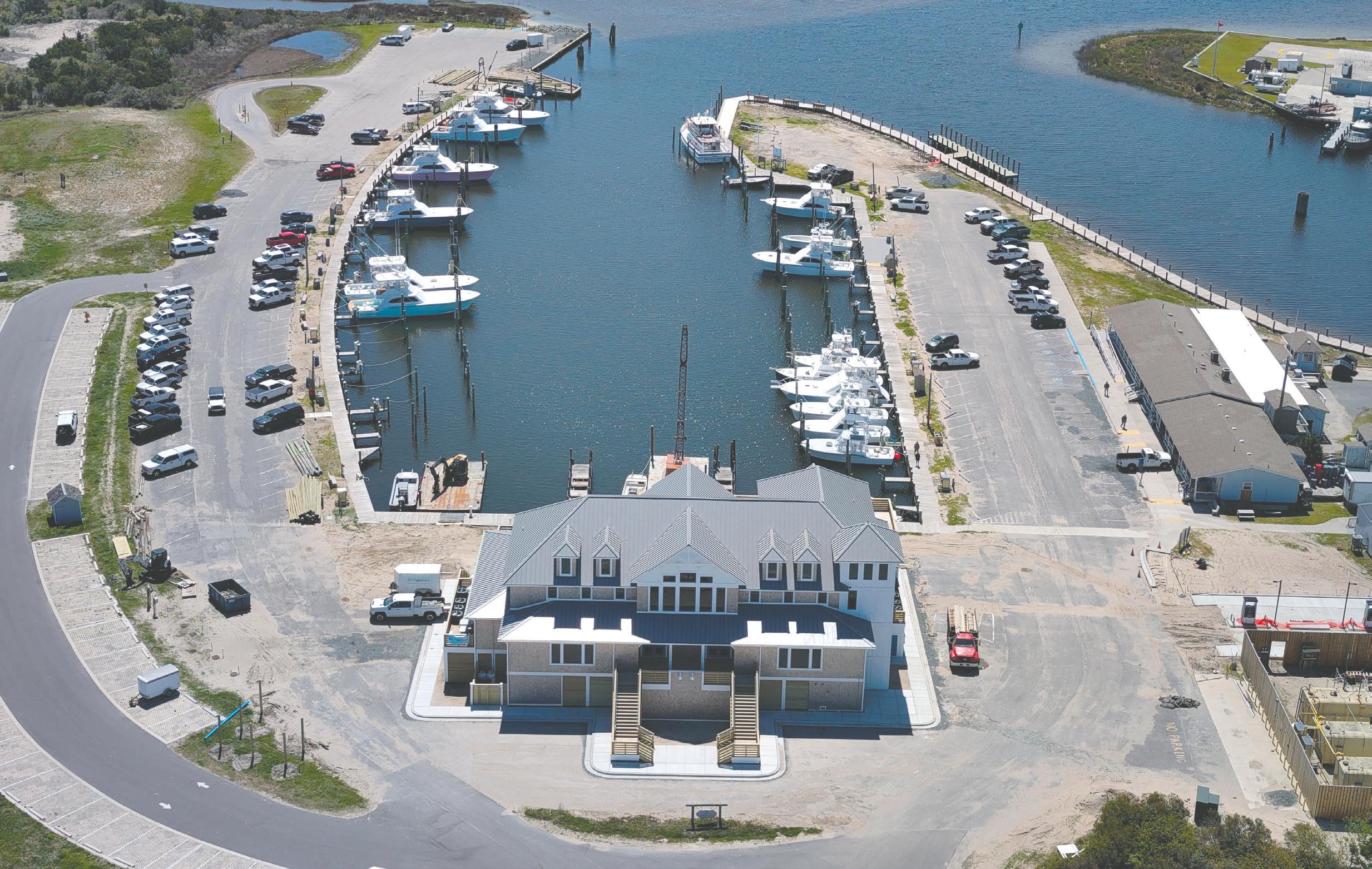
entele is a little more upscale these days as he nodded to a row of the customer’s high end, expensive pick-up trucks.
These same customers also want to eat good, that’s where the Sea Chef Dockside Kitchen comes into play. The new restaurant represents something the award-winning son and father chefs call a “labor of love.”
Both Mac and Jeffery Buben have impeccable resumes. They both graduated from The Culinary Institute of America, and each have plenty of restaurant experience.
“It’s a dream project to start one down here,” Mac said.
He added that together they have an “eat local or starve” mentality. Expect to see plenty of Savage Inlet Oysters, farmed right out back in the sound waters adjacent to the fishing center by Steve’s friend Bobby Smith.
“We use a ton of these oysters here,” he said. “My friends are commercial fisherman.”
In addition to these oysters, look for cobia, tuna and swordfish on the menu when in season. They purchase directly
“We support the ecosystem we are part of,” Mac said. “It’s truly local seafood with a casual atmosphere.”
While the Bubens are relatively new faces around the fishing center, several familiar Dare residents have grown with the changes and are ready to help you with your food order or charter reservations.
Take waitress Ivy Cage. A former mate on the Miss Oregon Inlet vessel, she helped get the Sea Chef open.
“I’ve been here since we opened …” she said. “Oh, it’s been awesome!”
Cage said business directly correlates with the boats coming in and going out.
“There’s always something going on!” she added.
Claire Spencer agrees. She was quite the whirlwind recently when the restaurant was busy and she was preparing the upstairs banquet space for an event.
It wasn’t too surprising to learn Spencer’s a tennis pro the way she bounced around from job to job and served up topics quickly.
Outside on the top floor deck, Spencer did sneak a moment to take it all in.
“I love this three-hundredand-sixty-degree view – you can
see the dunes and ocean, Bodie Island Lighthouse, the boats and the [Marc Basnight Bridge] bridge,” she said.
Once the old ship’s store is bulldozed, Spencer said, they hope to build a huge pavilion to host large scale events, weddings, fishing tournaments and corporate gatherings.
“You want it and we’ll do it,” she added.
At the booking desk, longtime Oregon Inlet Fishing Center reservationist McKayla Creef was busy on the phone. She’s always cheerful and looking to help folks.
So whether you want to catch or eat some tuna, mahi or wahoo, this new Oregon Inlet Fishing Center has you covered … booked, hooked and cooked.


Courtesy Bri Young

Fby Michelle Wagner
rom starting an all-girls surf club called Outer Babes in 2017, to creating a surf school a year later – the road that led Bri and Riley Young to finding a home for their ever-evolving Outer Surf at 2500 S. Virginia Dare Trail in Nags Head has been a winding one full of passion, waves, paint, mentorship and hard work.
The roots of Outer Surf began with Bri sending an email seven years ago to a few moms, asking if their high school-aged daughters wanted to be part of a free surf club that provided a safe and creative space for girls to grow. The group, which was created from Bri’s desire to form a female surf community, met during the school year at the Ocean Bay Boulevard beach access, where they would surf, make art and support and empower one another.
Since the first meetup of Outer Babes, a club that still meets up during the
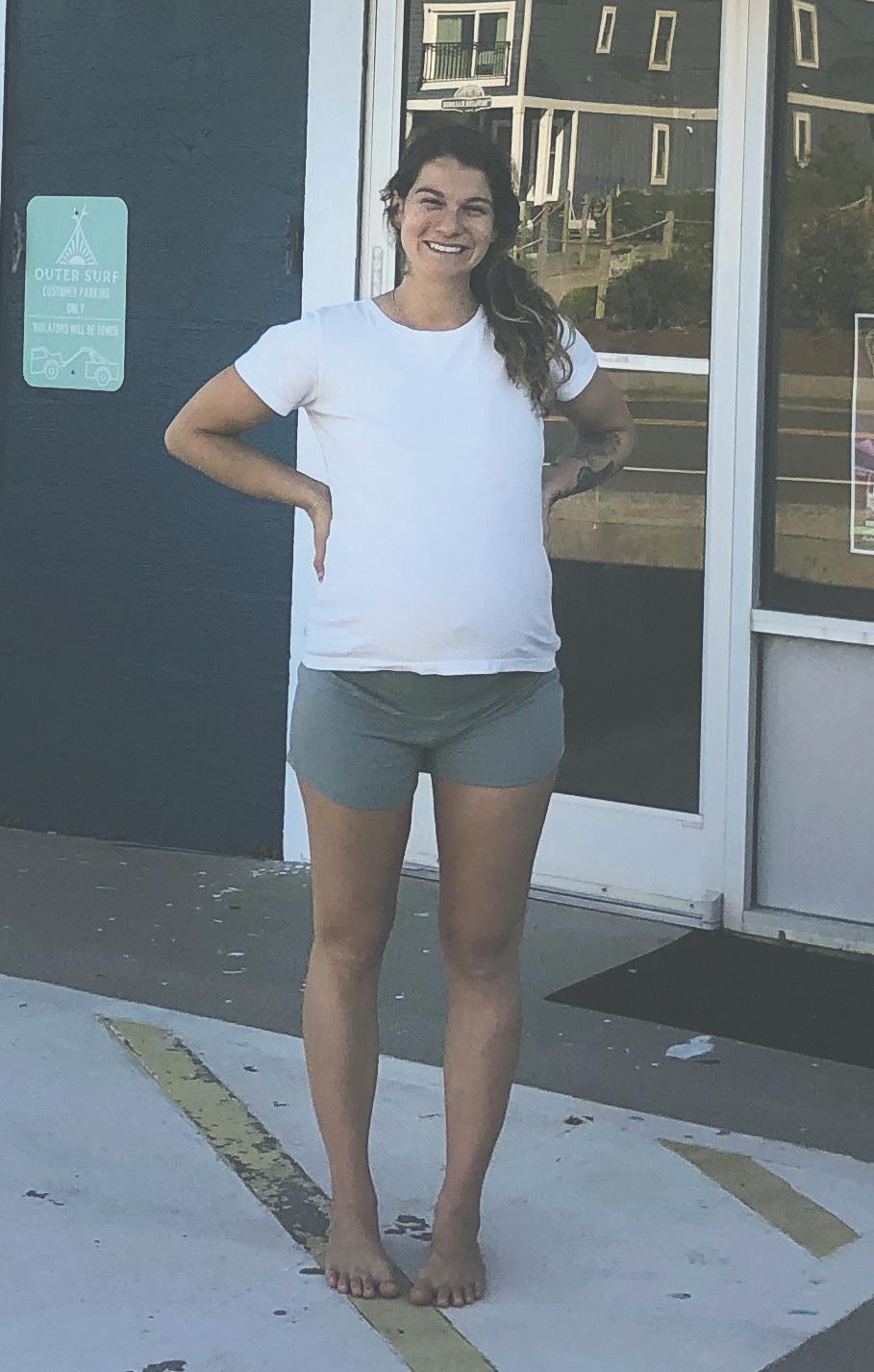
school year, the Youngs’ surf clubs, camps and lessons have always been where the waves were – at beach access with the best breaks.
For the Youngs, much of Outer Surf operated out of a shed on their little piece of property in Kill Devil Hills, as well as out of a truck. Surf instructors, many of whom were the same girls who had or were part of Outer Babes, would retrieve surfboards and wetsuits from the shed before lessons. The Youngs had even begun a small online store, selling shirts they had screen printed in their kitchen.
“We’d set up [camps] on the beach and on rain days, we’d just have to cancel,” Bri said.
But as Outer Surf grew, they both knew they wanted a permanent home where they could put their creative energy toward creating a space that truly celebrated the art of surfing. In 2021, that
finally happened in an old windswept concrete building at milepost 10.5 with a rich Nags Head history that dates back to 1950.
At the time, 2500 S. Virginia Dare Trail was home to Farmdog Surf School and Beach Services, which specialized in everything from surf lessons, coffee and beach rentals – and a portion was also leased by Momentum Fitness. But the stars aligned for the Youngs that year when both businesses were looking to move to different locations. They jumped at the chance to rent the building, whose life began in 1950 as the historic Scarborough Garage and through the years has also been home to a pet store and beach shop.
When the Youngs signed the lease with the building’s owner Jimmie Summerell that October, they set out to make the building their own, painting colorful murals of surfers and whimsical designs on the outside that reflect the local surf community. “It was a huge project that never really ends,” Bri acknowledges. “We had a full winter to just work on it every single day.”
Inside, they poured their hearts into fixing up and transforming the building into a cozy surf haven with a small surf shop that features local art, homemade goods and Outer Surf gear. Putting their own personal touch to the building, the Youngs hung local art, painted the walls and repurposed wood from old beach cottages and even Avalon Pier to add an authentic Outer Banks feel. They created spaces in the building that represented what Outer Surf had always been but without a home.
Outer Surf has expanded to include not only their Outer Babes Surf Club and surf camps and lessons for all ages, but also surf retreats, Monday markets and special events. “The business has kind of just grown itself into whatever it wants to become in a way,” said Bri. A community space in the back can be used for a surf exercise studio. When they have a rain day, the campers will do some workouts and board balancing. There is also a camp and art room where Outer Babes and campers can meet.
Bri said that with the thought of how fast the Outer Banks is changing, and how much is being torn down, she has a special fondness for the building and its past.
“I get so excited about the history of the building … I just wish I could put myself back in that time. It fascinates me how it was a pet store after it was a mechanic and a gas station.”


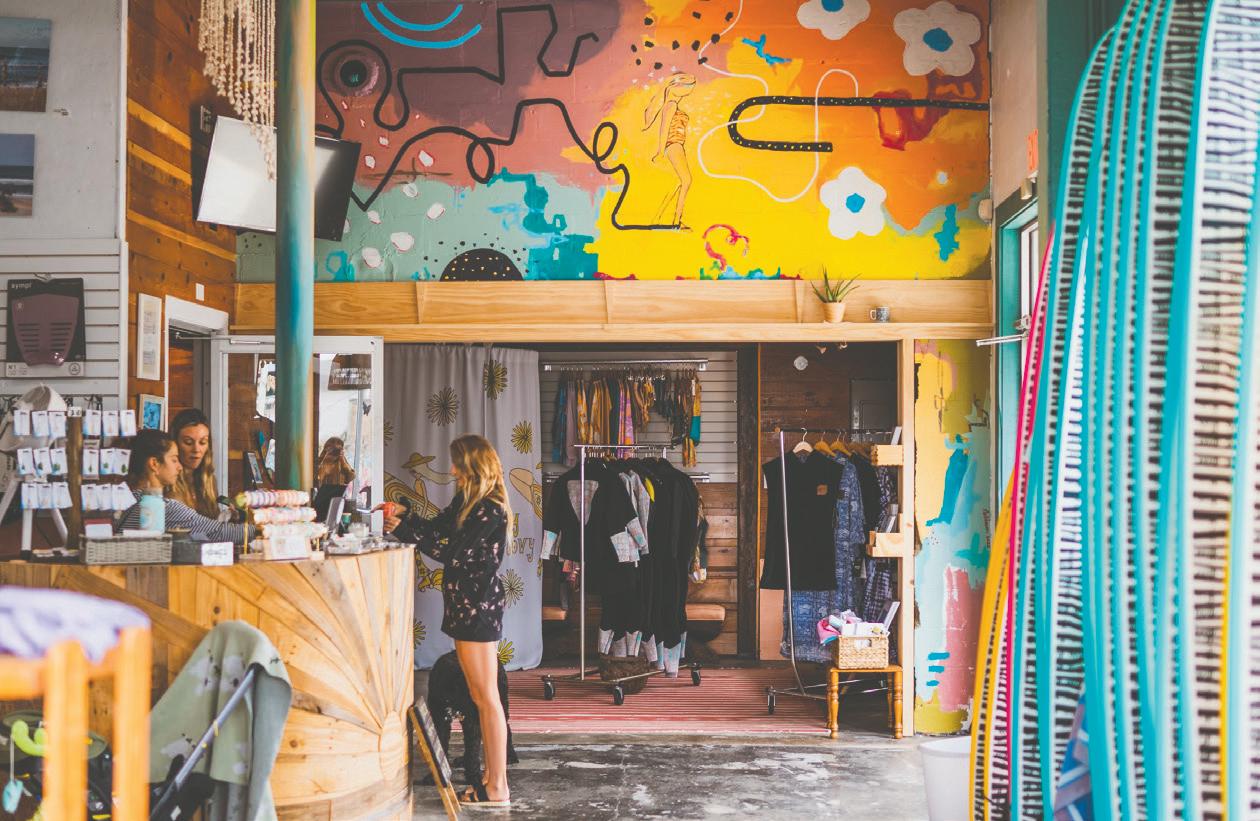
The staff of Jennette’s Pier welcomes everyone to visit this season, which marks the 14th year since it was “reborn” on May 21, 2011. The original wooden structure opened in 1939 at Milepost 16.5.
As the anchor of the Whalebone District of Nags Head, the pier has hosted millions of folks to its expansive oceanfront pier house, 1,000-foot-long concrete fishing pier and public beaches access complete with bathhouse.
Fondly remembered as the first and oldest ocean fishing pier along the Outer Banks by generations, the newer modern pier has established itself as a premier Outer Banks attraction, director Mike Remige said.
When Jennette’s reopened, owners of commercial piers along the beach knew they needed to make changes to keep up with the times and each added different ways to increase revenue streams.
“The traditional fishing pier business model of just selling passes, bait and coffee is no longer sustainable,” he added. “To maintain this integral part of North Carolina’s coastal culture, pier owners have had to expand and diversify their offerings.
“In our case, we strive to provide the best possible public fishing pier, coastal education center, marine research platform and oceanfront events venue on the beach,” Remige said.
And while Jennette’s, a state-owned and -operated pier reinvented itself, the remaining commercial piers –

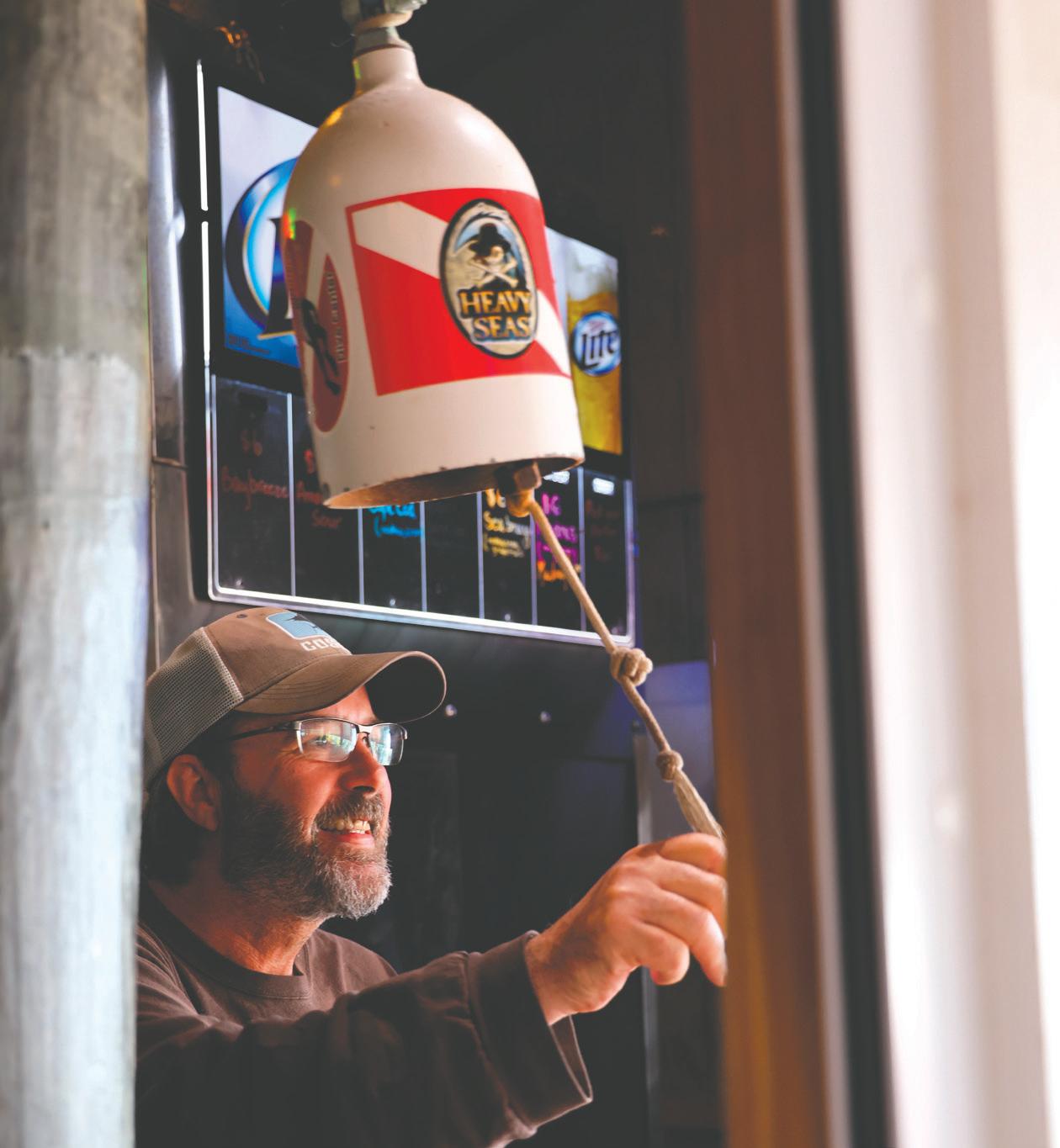
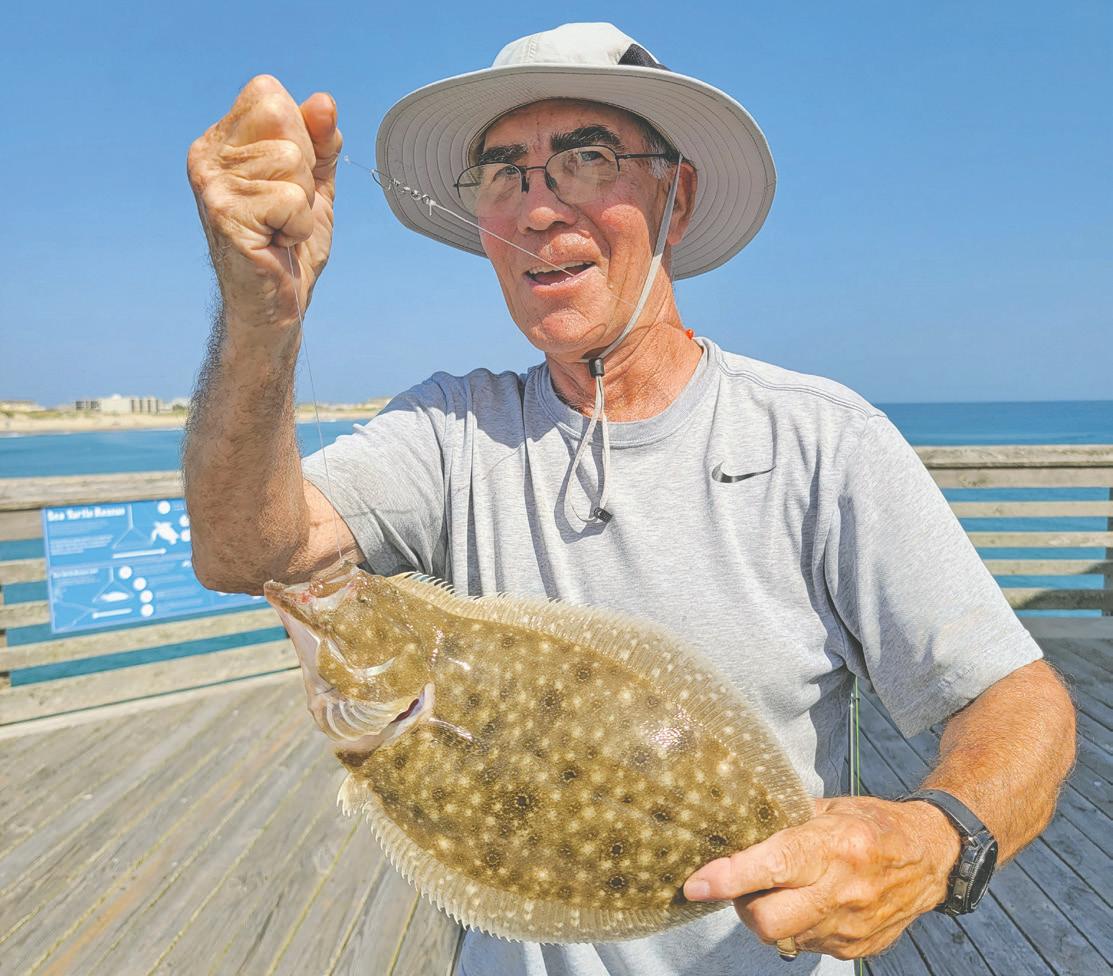
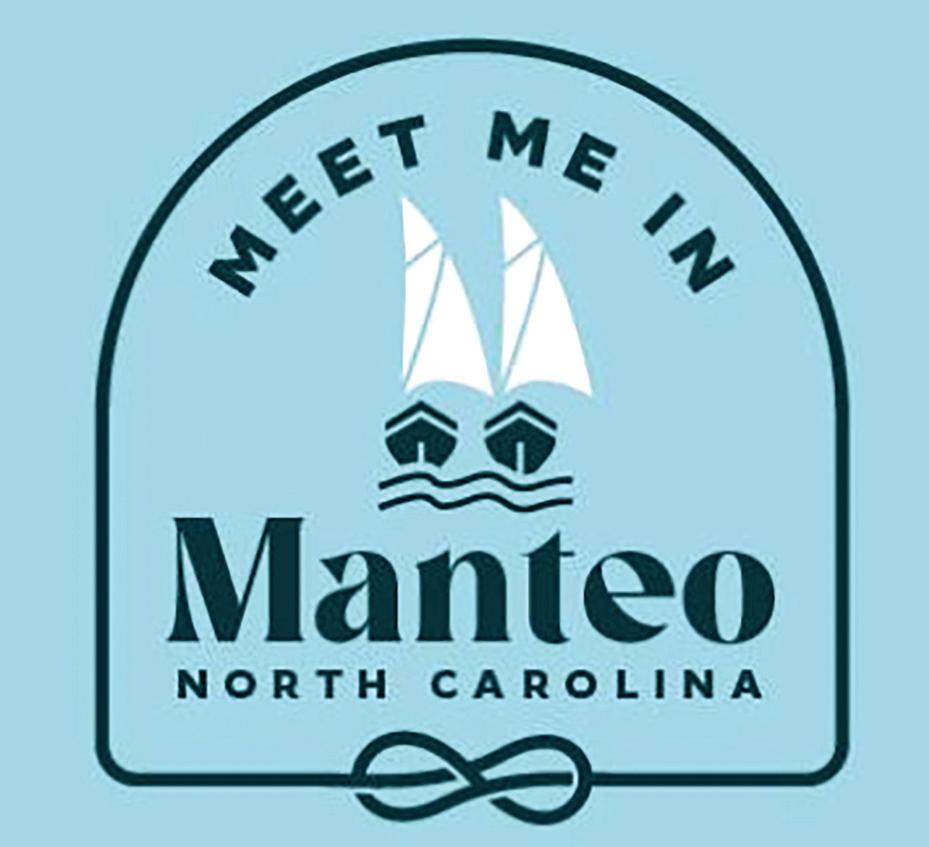
Outer Banks, Nags Head, Avalon, Kitty Hawk, Rodanthe and Avon – have each also changed their business models to better cater to vacationers and locals alike.
Just two miles south of Jennette’s in south Nags Head at Milepost 18.5, Garry Oliver and his family have transformed the old school Outer Banks Fishing Pier into a delightful, vibrant restaurant and bar.
With live music, a fresh seafood menu and awesome 360-degree views, it’s no wonder Fish Heads Bar & Grill has rejuvenated this family-owned business.
“We’ve been very busy, beyond our wildest dreams,” Oliver said. “I never expected to be in the restaurant business like this.
“We used to have a fishing pier with a snack bar, now we have a restaurant and bar with a pier,” he added. “We have 40 employees and it’s a lot more work but I’m glad we did it – I’ve enjoyed it.”
According to Oliver, their success is measured in smiles.
“People walk thorough here with smiles on their faces,” he said, “and they leave with smiles on their faces.
“There’s just something about it, I’m not sure what it is – we’re just very lucky,” he said. The Oliver family includes Garry, his wife Mary, son Ryan and his wife Rachel. Be sure to try Mary’s fresh tuna fish salad.

Couples such as Travis Bailey and Ann Marie Guadagno of Free Union, just north of Charlottesville, Va., visit Fish Heads every time they visit.
South Nags Head property owners Jane Wrisley and husband of Allentown, Pa. do so too.
“This is the best!” she said. “The bar went in and we bought two bikes because we’re only a mile away.”
Happy patrons from all over the map have donated thousands of colorful koozie cups that get stapled up overhead in the tiki bar area. For beers, coastal cuisine and music in South Nags Head, this is the place to be.
There are three dozen taps and awesome beer tenders such as Brandi Sokoloski. She’s quick to take your lunch or beverage order and it arrives promptly.
And yes, you can still go fishing and they catch plenty of nice fish. They are the closest pier to Oregon Inlet, which is located just south.
Oliver remembers when Kevin Holland caught a big 62-pound cobia while plenty of folks looked on. Garry said their format provides an opportunity for visitors to experience what fishing is all about.
Head Fishing Pier and its famous Pier House Restaurant. Visitors to the locale are greeted by an overhead sign that reads: “The happiest people in the world pass thru these doors.”
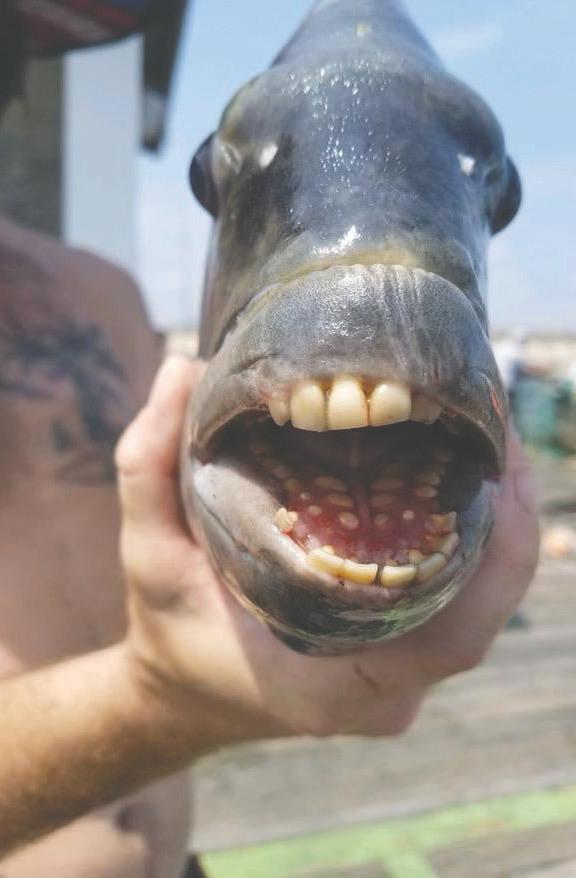
Seven miles north of Outer Banks Pier, you’ll find Andy McCann’s Nags
Inside the long-running Pier House Restaurant, visitors can experience a collection of photographs that document some of their favorite customers, many of whom are public servants past and present.
Following Oliver’s lead, a decade ago or so, the pier also stepped up their game and added Capt. Andy’s Oceanfront Tiki Bar and Grill, where thirsty folks go to have a seaside beverage or two.
Bartenders Scott Foster of Nags Head and Tom Fleming of Kill Devil Hills create cocktails with a smile and engage in interesting conversation about surfing, snow skiing and life on a sandbar.
Michelle Ponzillo, front of the house manager, loves her job.
“I have the best office of everybody,” she said referring to the open, oceanside tiki bar. “We have a full ABC license; frozen drinks and we try to accommodate our customers the best we can.”
She said Nags Head Pier dates to 1947 and mentioned Andy bought it in 1985.
“He tries to keep it original,” Ponzillo said. “It’s a landmark, we try to cater to everyone. Diners can take a walk on the pier, and we strive to provide a family atmosphere.
“At one point, we were the longest
Whether you’re a fisherman, hungry diner or just want a cold drink, Nags Head Pier offers it all. Just recently, Melissa Boitnott was jigging for trout. She and her husband Earl love fishing on Andy’s pier.
Left: Bartender Chrissy Sawyer of Avalon Pier said she’s booked a number of super bands for the weekends all summer long. She’s almost always smiling. Courtesy Jennette’s Pier.
Right: Fish Heads bartender Brandy Sokoloski poses with guests Travis Bailey and Ann Marie Guadagno of Free Union, Va. The couple says they love hanging out there. Courtesy Jennette’s Pier

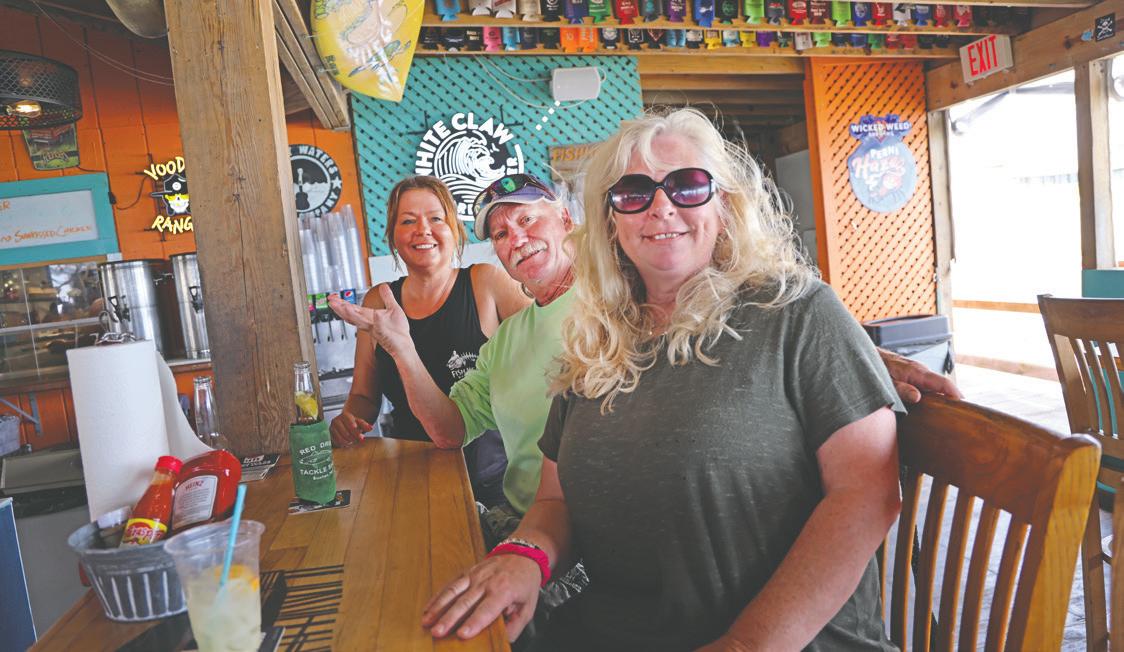
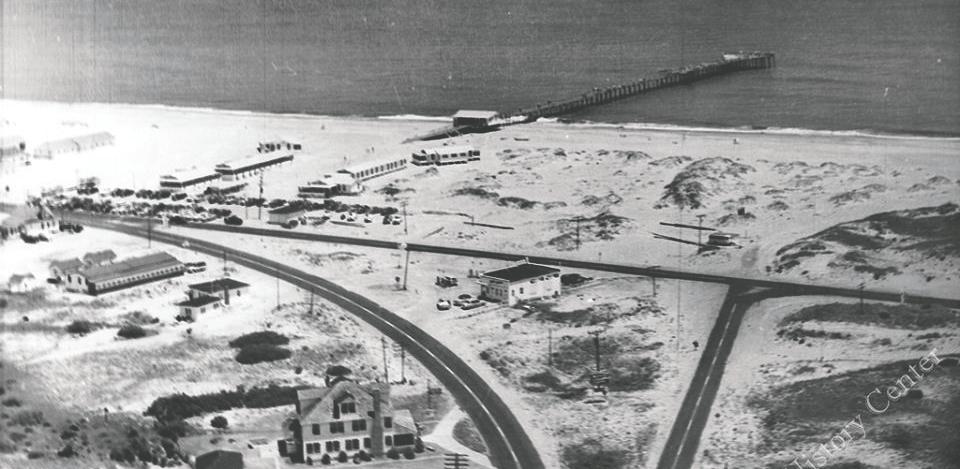
Left: Brightly painted picnic tables welcome customers to Capt. Andy’s Oceanfront Tiki Bar and Grill located at Nags Head Pier. Courtesy Jennette’s Pier. Right: Trevor Hutto of Garner tries his luck at jigging for speckled trout while fishing at Kitty Hawk Pier. He was staying at the Hilton Garden Inn.
Courtesy Jennette’s Pier
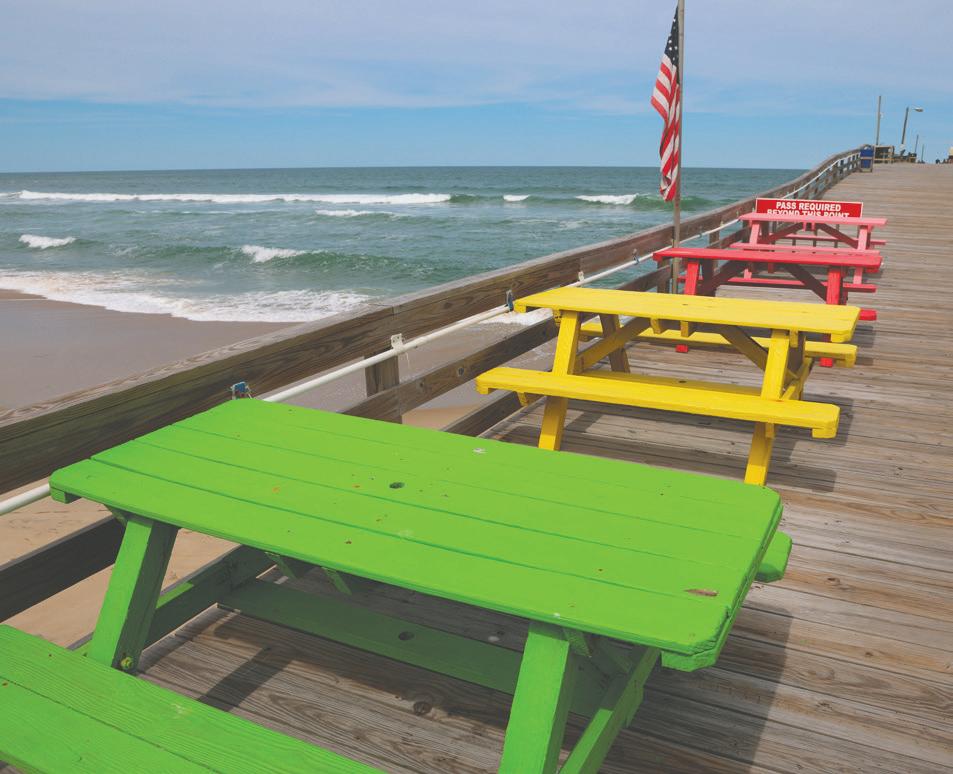

pier before Jennette’s,” she said. “We rent poles, bait –everything a fisherman needs.
“We have knowledgeable people at the counter that know the gear, bait, what’s running and the whole nine yards,” Ponzillo continued. “We have a citation station to weight them, too.”
You can find Capt. Andy, his wife Lovie and the gang oceanfront at Milepost 11.5.
In the heart of Kill Devil Hills, you’ll find Avalon Pier and its Stonefish BeachBar and Grill at Milepost 6. The centerpiece of the bar area is a beautiful oval bar encased in tile by Blaine Poythress, who is a fixture there.
In addition to excellent fishing, the pier house has emerged as a popular venue for bands to perform early evening gigs.
With its tile bar and adjacent stage, the pier rocks on the weekends. Patrons can also walk out onto the pier deck for fresh air, sunsets and moon rises.
They have steamed shrimp, hamburgers and fried foods the kitchen typically delivers hot and fast. In addition to this “Low Tide” bar, one can head upstairs to the “High Tide” area where the breezes and view make you feel like you’re sitting on top of the world.
Construction of the massive top deck and bar began just weeks after Hurricane Dorian washed away around 195 feet off the end of the pier leaving
them with around 410 feet of the wooden structure, which first went up in 1960.
The business has always maintained its arcade and customers are greeted by sounds from three pinball machines when you walk in. There’s also a monitor that emulates an aquarium, complete with bubbling sounds of the water filter pump.
Long-time counter worker Kenny Umphlett jokes that he rode the airplane ride near the arcade door when he was a child.
Umphlett’s the one to call when you need a fishing report. He lives across the street and opens the pier house early.
Just like the other piers, Avalon strives to maintain a family friendly place.
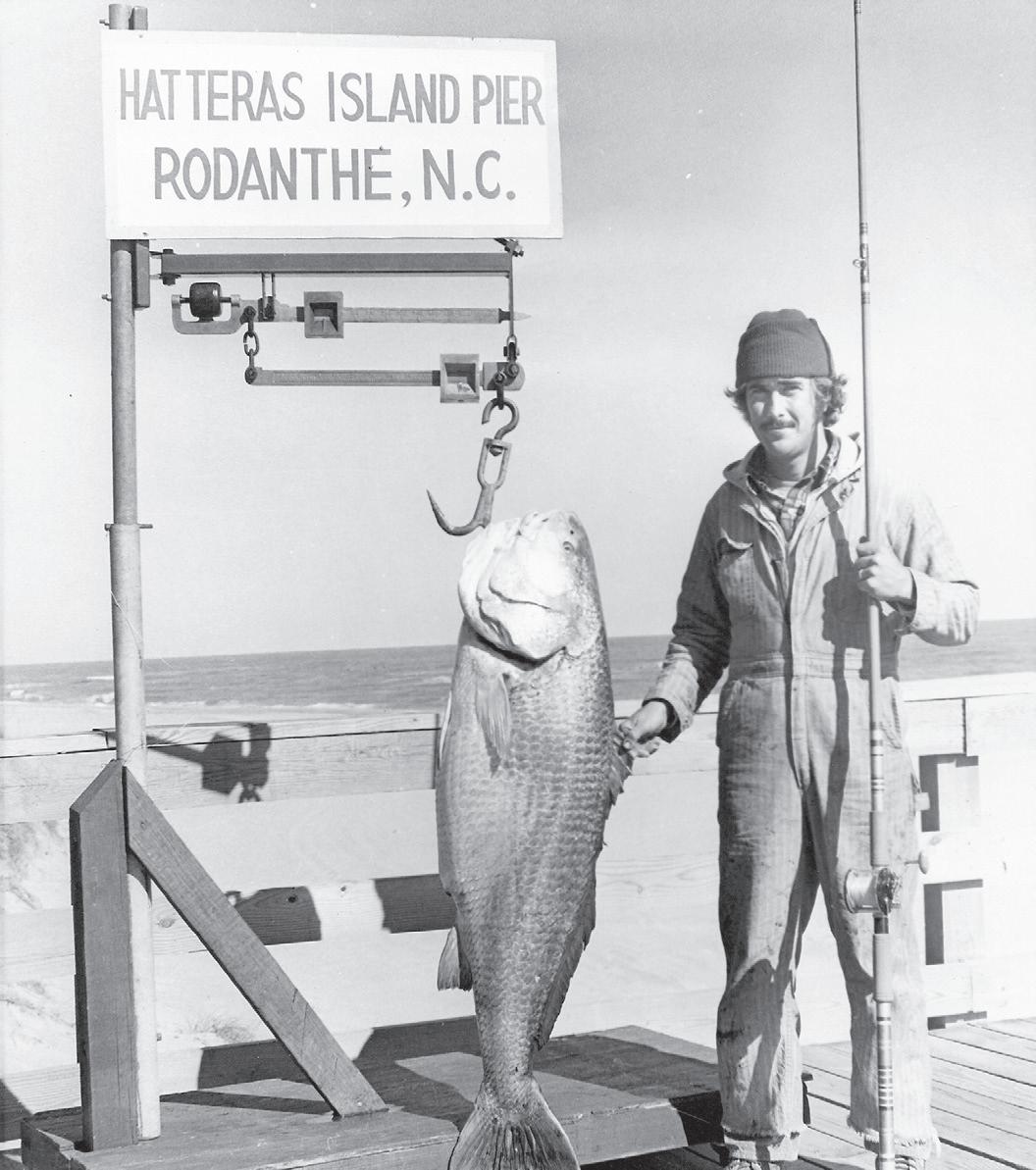

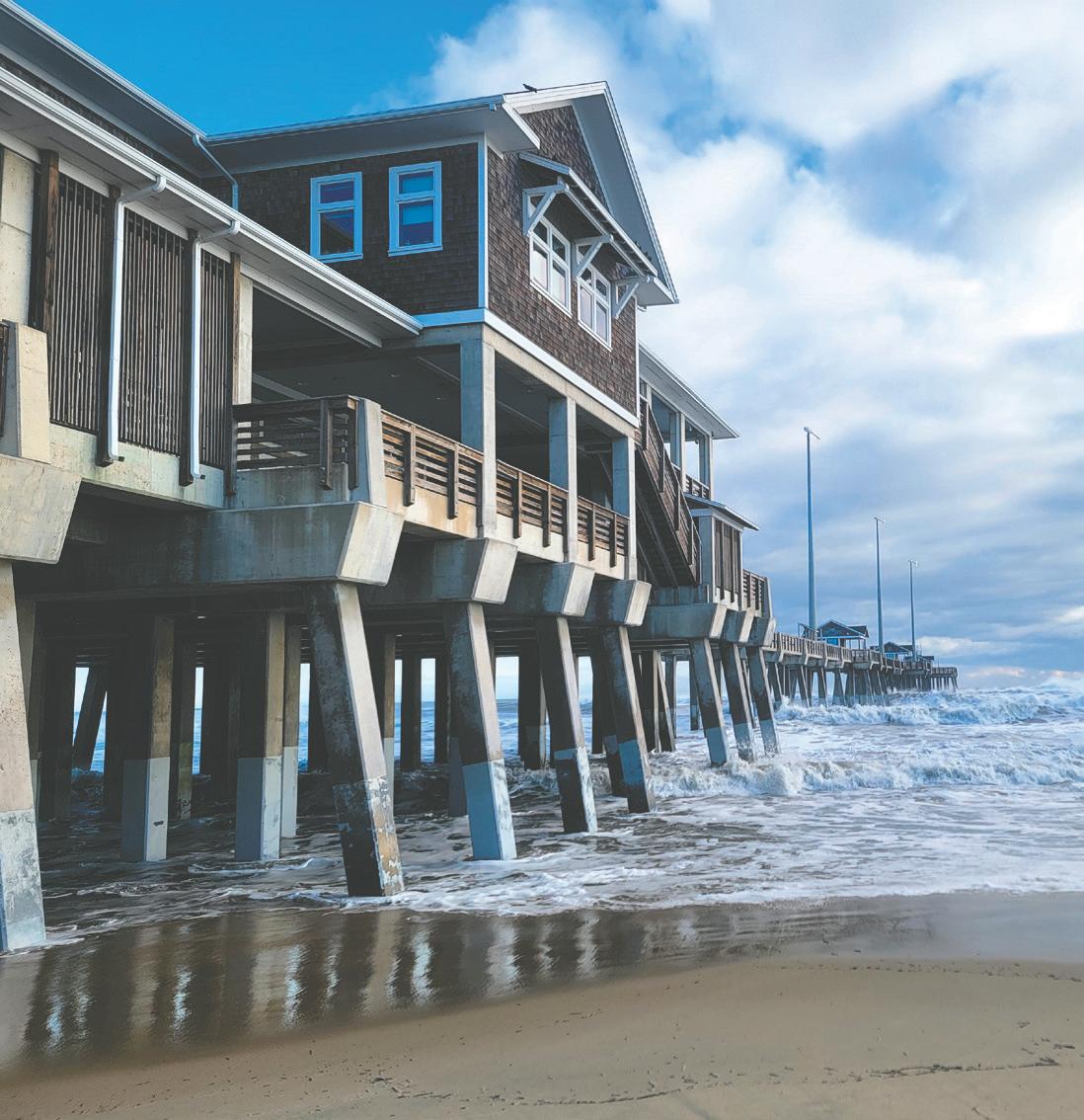
“We do like catering to families … it means a lot,” he said. “A lot of that is because of tradition – they came here as children, now they’re bringing their children – the Avalon tradition still lives on.”
Manager Tim Lehman, along with Joe Neiderlander, Chrissy Sawyer and the rest of the staff, continues to work to improve the business and its offerings. A new shipment of ball caps and T-shirts is displayed prominently behind the counter.
They first started making changes to the business model when fishing declined in quality and quantity, they said.
Sawyer said she’s excited because there is excellent music booked for every weekend of summer.

“We’ve got some good, up and coming stuff – we’re booked Fridays, Saturdays and Sundays with live music,” she said. People can meet for a “pier beer” at the High Tide or Low Tide.
Avalon allows dogs, and shirts and shoes aren’t required.
Up at Milepost 1, Kitty Hawk Pier, much like Jennette’s Pier, caters to couples looking to get married and have oceanfront receptions.
Because the pier is owned by the Hilton Garden Inn, it’s mainly open for hotel guests. Patty Allen, who was working at the tackle shop on a recent day, said they sell annual passes to their locals, and she also allows five anglers from the public to fish there when she’s on duty.
As for weddings and receptions, their social media content shows they do an excellent job with these events. Couples who want to have an oceanfront venue with food and drinks in one package should check into Kitty Hawk Pier.
Heading south to Hatteras Island, Rodanthe Pier and Avon Pier keep the tradition running strong there. This spring, anglers enjoyed catching sea mullet, blues, flounder and cobia.
Out on the Rodanthe Pier deck keeping an eye on everything on a mid-May day was owner/manager Terry Plumblee. He took over the pier

Above: Owner and manager Terry Plumblee holds a painting that a customer gave to Rodanthe Pier. He said folks share all sorts of photographs and artwork with them. Courtesy Jennette’s Pier
Right: Fish Heads was named after a Rick Tupper painting of a bluefish. Back in the 1980s, anglers nailed all these king mackerel fish tails to document the season. Daryl Law photo Below: Plenty of anglers were out and about at Avon Pier on a pretty spring day. Courtesy Jennette’s Pier
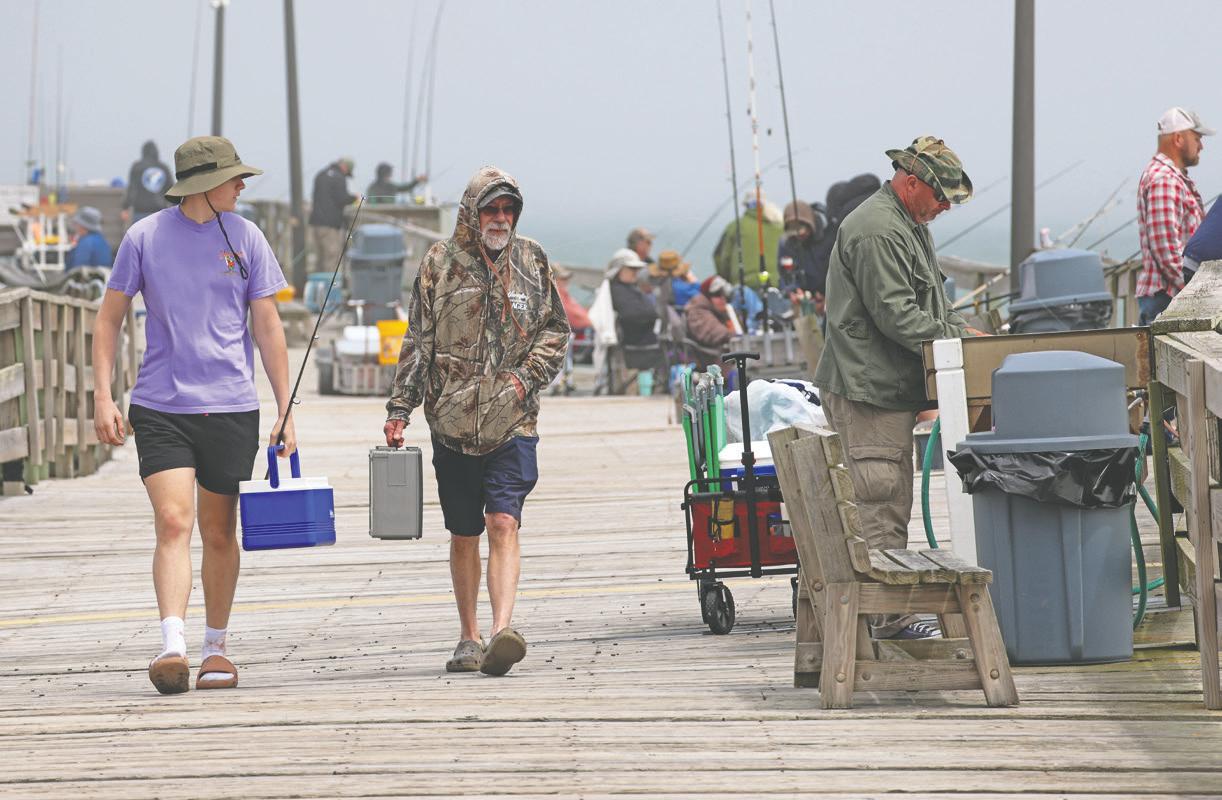

back in 2011 and says he’s seen a lot of changes over the years.
“We’ve added live music from local artists out on the deck during the summer and that helps [business],” he said. “It’s a good atmosphere in the evenings.”
An air-conditioned game room and cold beer keep the inside hopping, too, he added. Currently, Rodanthe Pier reaches 450 feet out into the Atlantic from the pier house, which is completely over the ocean now.
Despite the erosion, Plumblee said fishing is good right now.
“They’ve been catching some nice ones,” he said of the large bluefish around this spring. “Despite the on-going erosion, the last few years have been good, with similar fishing
the last six or seven years.”
In general, Plumblee said they’ve been catching a lot plenty of puppy drum, bluefish, “nice” sea mullet and trout.
“We caught our first cobia last Saturday [May 18],” he said. “Speckled trout fishing has been good and more big blues than we’ve seen the past ten years.
Given the pier has been in operation since 1960, there’s some rich history documented inside the pier house. Visitors are first greeted by a memorial wall featuring legendary angler Clyde Coltraine.
There are four citations and several photographs of large fish to verify his legendary status.
“He passed away October the year
before last,” Plumblee said. “He was a fisherman, a fisherman’s fisherman.”
At the south end of the building, a huge red drum mount is proudly displayed. Plumblee explained that the late Elvin Hooper caught what was the world record red drum at the time while Rodanthe Pier was called Hatteras Island Pier on Nov. 7, 1973.
The enormous fish took a chunk of mullet and Hooper fought for an hour before it was brought along the pier, where it was scooped up and landed with a hoop net. As he told the tale, a large swell rolled in and the pier house swayed just a bit.
Plumblee was looking forward to hosting a free Kids Fishing Tournament.
“We get a lot of stuff donated from











the Tri – Villages … everyone gets a prize,” he added, “we get sixty to eighty-five kids and parents.
“Lisa’s Pizza donates pizza for lunch,” Plumblee added. “It’s for children age three to sixteen.”
At Avon Pier, one may by greeted by Princess, the pier’s top dog. Behind the counter, Chris Bunting sells passes and cold ones.
“I’m the low man on the totem pole,” he jested. “Three beers, three bucks including tax – we’re the cheapest bar” in town.
Fishing was producing that day with folks catching mullet, Spanish and blues.
“The boys on the end are trying to catch cobia,” Bunting noted. “A few coolers are full.”
Built in 1962, the 647-foot-long wooden pier curves and rises in spots as it stretches out into the Atlantic. There was a good crowd fishing and at the cleaning station.
According to Kristin Taylor, they’ve touched up a few things recently and replaced some deck boards but no big damage to report.
For her, the only new and exciting thing was her three-month old baby, Landon, who was with Kristin’s mom for the day.
Her dad, Keith Matthews, has worked at Avon Pier for 30 years. Now, the next generation, or perhaps two, get their turns.
In the end, every pier along these Outer Banks shares the same thought expressed in the arching overhead seen when exiting Avon Pier: “Thank you for visiting, Ya’ll Come Back Now, Ya Hear?”
Tight lines to all.

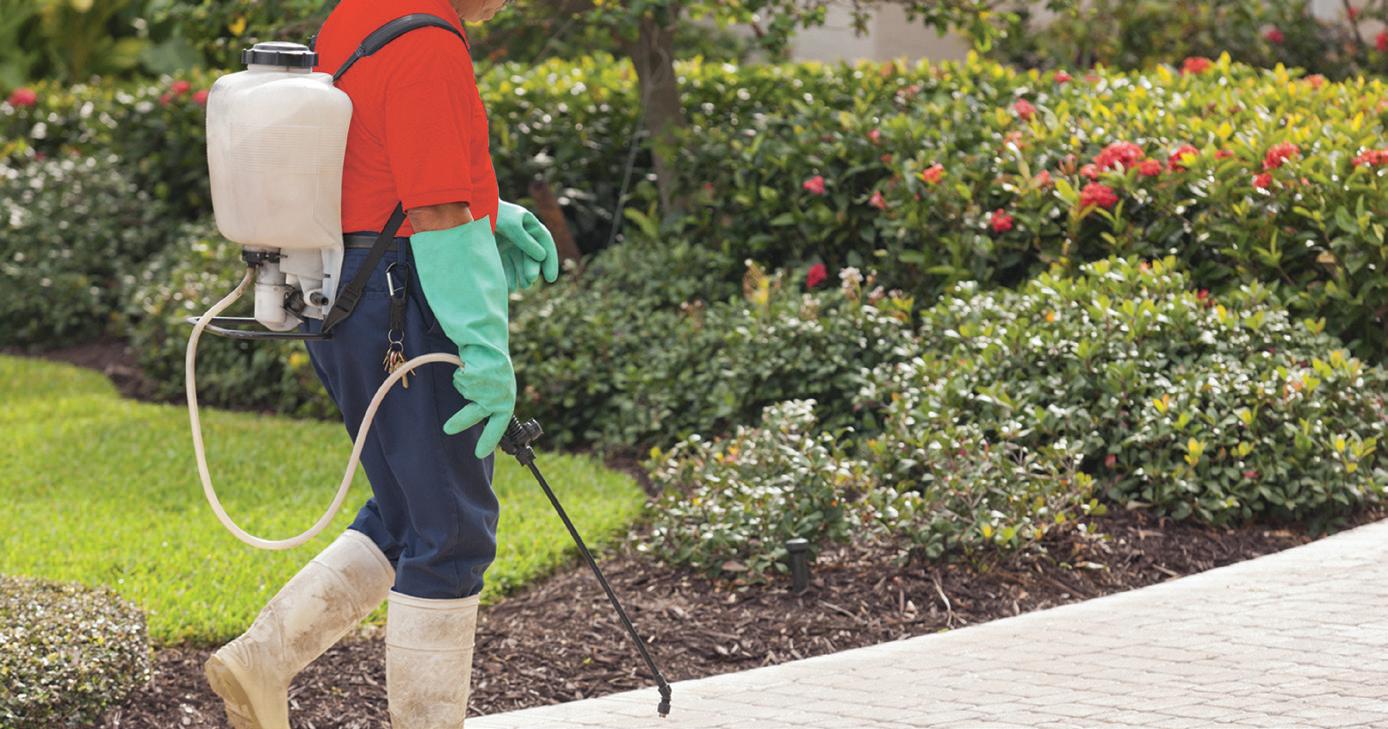










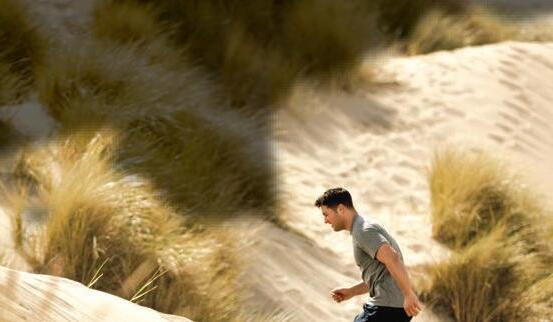




























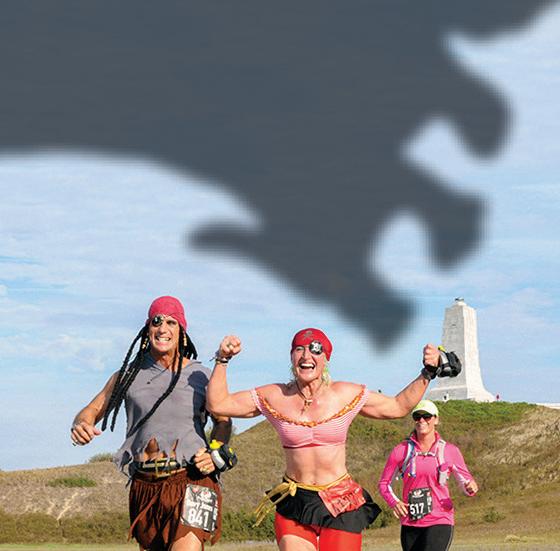





A hundred years later, still a community gathering place
by Summer Stevens
Since its grand re-opening in May of 2023, The Pioneer Theater has been moving full speed ahead, quickly becoming a prominent entertainment venue in Dare County and beyond.
Focusing on classic movie favorites like Gone with the Wind, Dirty Dancing, the Star Wars series and Harry Potter, the theater owners promise a memorable experience when coming to the Pioneer.
“Time is valuable. I don’t want to gamble with people’s time,” explained managing partner Michael Basnight, on why he shows mostly older films on the big screen.
“A lot of the newer movies today – although they might have a great marketing push and commercials and ads and big names – you spend your money and your time and the movie is not good.”
The Pioneer shows either award winners or top grossing films. “If you come to this historic theater it’s for the experience and we promise that the
movie you see, although it may be 40 years old, there’s a reason why we’re showing it.”
And more than likely, if it’s being shown again, it was at the Pioneer for its original release.
“You name any top movie,” former owner Buddy Creef said, “And it’s been through the Pioneer.”
The Pioneer has been moving into a prominent place for live music performances and events. With near-perfect acoustics, the auditorium has hosted artists Chairmen of the Board, comedian Kevin Farley, a Jake Owen meet and greet, the Voice winner Huntley, and two-time Grammy winner Terrance Simien.
Basnight and his team are constantly working on fresh experiences like an outdoor market in the Pioneer Garden with live music, line dancing and food trucks, as well as some modifications inside to the sound system and VIP seating area.
Down the road, the owners have thought about exterior
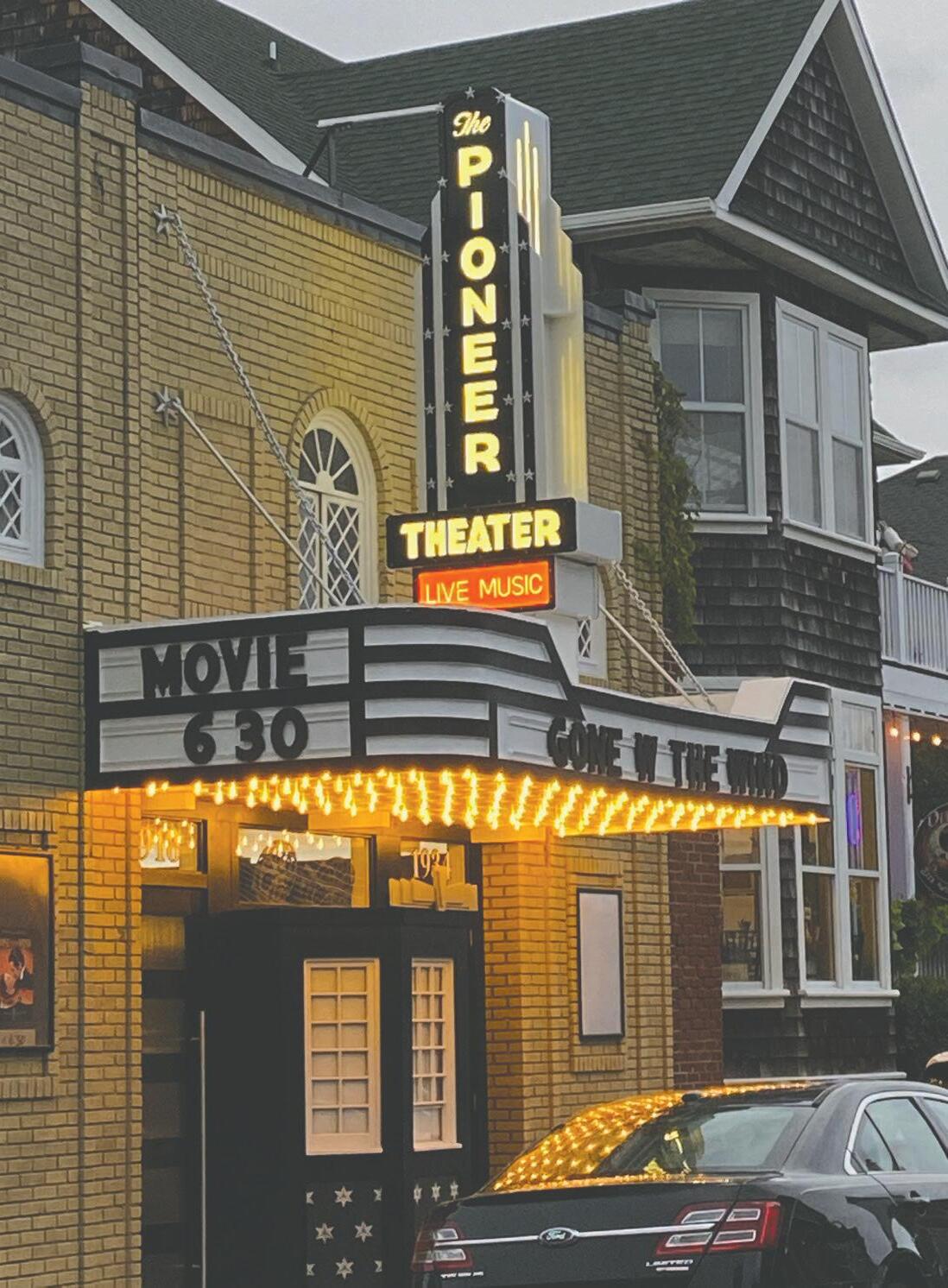
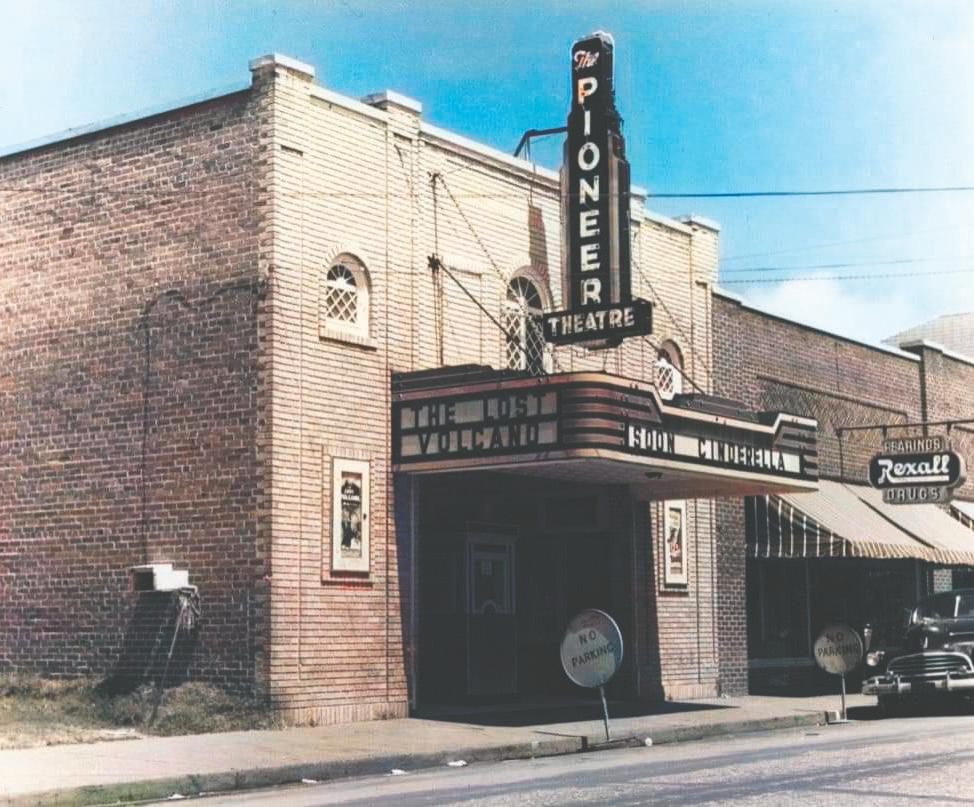
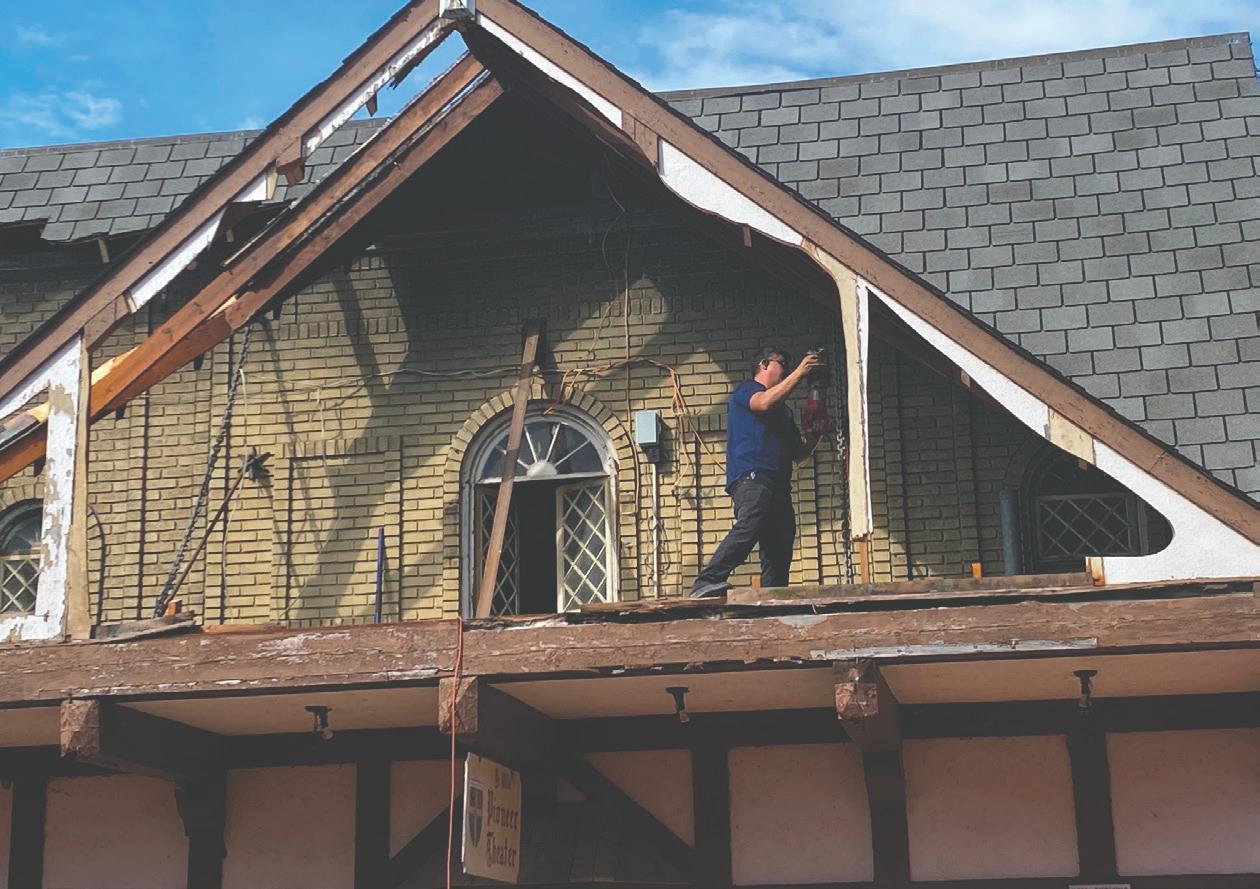

awnings, maybe even a balcony inside.
The goal is to create a consistently positive experience for guests and to continue to find ways to be flexible. “And then you’re actually giving it back to the people by giving them what they want,” Basnight said.
A few years ago, when the Pioneer was for sale, no one really knew what was going to happen. People wondered if it would be torn down to build apartments or office buildings. When asked, why save it, Basnight replied (after the lump in his throat eased up):
“It almost felt like you would be stealing from or cheating the experiences from the generations that have relied upon it for a break – you know, a little fun. It would be like you’re stealing their memories and then also cheating the next generation out of having the same memories.”
“You feel like if you tore it down all of our parents and grandparents or people that are still alive would be so disappointed … because then it would just be something to talk about that has no tangible evidence.”
Speaking of his father, Buddy Creef said, “He ran it for years with the attitude that as long as it breaks even or doesn’t take too much money we’ll keep it open for the community.”
The Pioneer Theater has been – and still is – a gift to the community. It’s a gift of love from a long line of owners to provide a place to gather together. In that redwalled auditorium there have been a lot of laughs, a lot

1918: George Washington Creef Jr. opens The Pioneer Theatre on what is now Sir Walter Raleigh Street. With the advent of “talkie” movies in the late 1920s/early ’30s, the Creef family decides it makes more sense to build a new theater from the ground up rather than refit the old location with the new technology.
Late 1940s: Renovations come to the Pioneer, extending the theater to accommodate additional seating and raising the roof by three feet. Besides movies, the theater offers some live performances. One theater troupe comes by boat, docking at Shallowbag Bay and walking across the street to perform at the Pioneer.
1960: Brothers George H. Creef and H.A. Creef Jr. take over the Pioneer when H.A. Creef Sr. passes away.
Late ’70s-’90s: The end of the 20th century is a time of top-grossing films like ET, Jaws, Star Wars, Indiana Jones and Titanic. The Pioneer shows them all.
Early ’80s: The ratings system rules changes, requiring parents to be present to admit a minor into an R-rated movie. Since so many movie patrons were underage, the Pioneer mostly stops showing R-rated movies.
January 2023: The Creef family makes the shocking announcement that, due to rising expenses, they have made the difficult decision to close the theater permanently. The community mourns.
Spring 2023: The Pioneer gets a major facelift. The new owners remove the Tudor façade, remodel the lobby area and bathrooms, replace the marquee, add a new exterior vertical sign to match the original that blew away in a storm years ago, construct a green room for performers, and create the Pioneer Garden area outside in place of the former parking lot.










March 1934: The Pioneer opens at its current location at 109 Budleigh Street, premiering with Hell Divers starring Clark Gable and Wallace Beery. George Washington Creef Jr. goes into business with his son, H.A. Creef, who later buys out his father’s half of the business and runs the theater until his death in 1960.
of tears, surely some first kisses and probably some break-ups. For well over a century, it’s been the community’s reliable place for relaxing with friends, taking a date, or enjoying a concert with friends.




1939: The Wizard of Oz popularizes all-color films.




1950s: The Pioneer is one of the first businesses in the county to offer air conditioning.




1957: Andy Griffith premiers A Face in the Crowd at the Pioneer. Andy would also perform stand-up comedy and premier other movies at the theater.
Singer and songwriter Kathy Postlewait recently wrote a song called “Meet Me at the Pioneer” where she refers to the historic theater as the jewel of Manteo. In the song she writes: “The Pioneer Theater’s a treasure/It’s where the music is found/In our hearts it sparkles/As the jewel of this town.”












1977: The Town of Manteo remembers its English roots during the Queen’s Silver Jubilee in hopes that Elizabeth II herself would pay a visit to Roanoke Island. The Pioneer gets a new English Tudor façade atop of the original exterior brick. Unfortunately, the Queen never did make it, though she did send an emissary.
Thankfully, The Pioneer Theater is not just something that we talk about and remember. It’s old, it’s new, and it’s earning a place in the hearts of the next generation.






2000s: Movie streaming services become popular. Movie theaters across the country feel the change.






2012: H.A. “Buddy” Creef III, affectionately known as Barefoot Buddy, takes over operations of The Pioneer Theater after the death of his father.








February 2023: Manteo natives Michael Basnight, Jamie and David Hatchell, and Derek and Sharon Hatchell announce plans to purchase the historic building, promising to keep it as a theater (yay!).



A former parking lot space next to the Pioneer has been transformed. Courtesy Town of Manteo






May 2023: The Pioneer Theater reopens with A Face in the Crowd and Jesus Revolution. It quickly expands its offerings to include live music performances, comedy shows, community events and live-streamed sporting events.









